COSTA RICA September 1 – November 28, 2021
Callyn Yorke Link to Costa Rica, Spring 2021 (Febuary 25 – April 25, 2021)
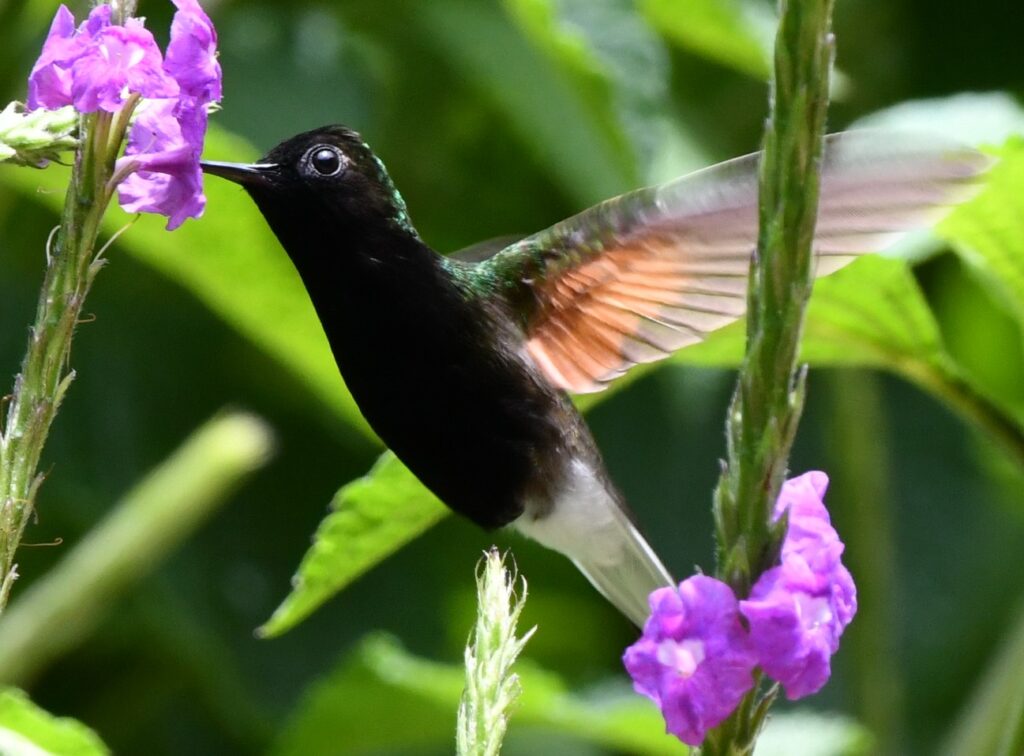
INTRODUCTION
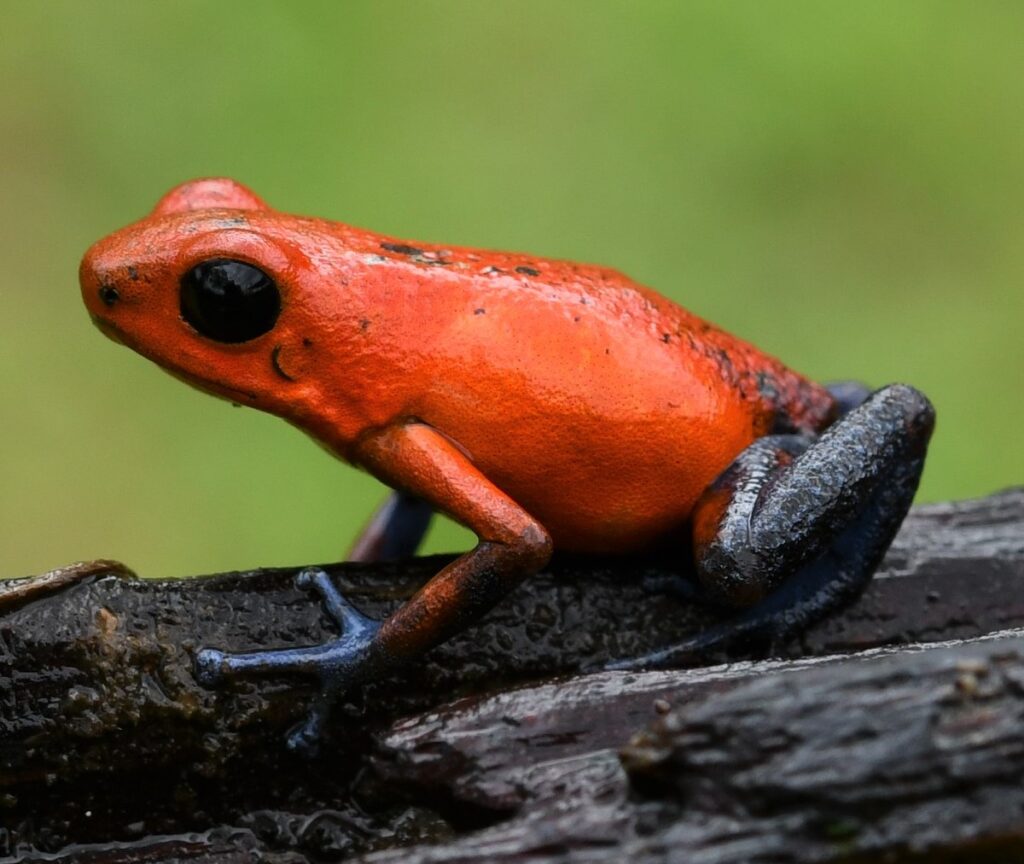
This report summarizes my field observations, notes, photos and artwork, describing and depicting a diverse array of vertebrates of Costa Rica – primarily, amphibians, reptiles, birds and mammals; birds being the best represented in my samples of those groups. Locations were selected for their known biodiversity and likelihood of observing and photographing species of interest to me. I was seldom disappointed. In most cases, I found myself in areas with an astonishing variety of wildlife.
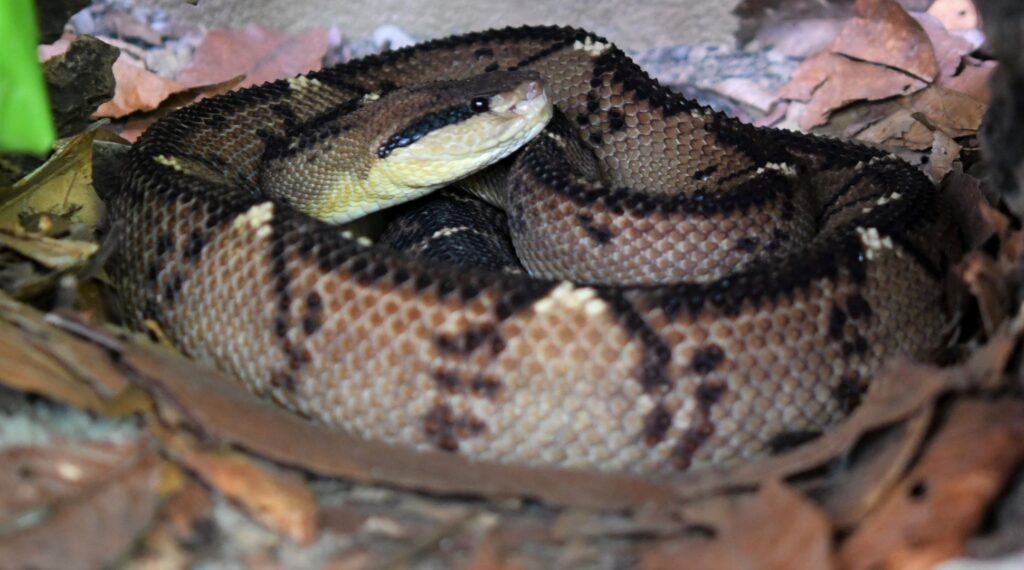
I spent three months traveling roughly a counter-clockwise route in Costa Rica, beginning and ending at Daniel Oduber Airport, Liberia, Guanacaste Province. In addition to visiting previous locations, e.g. Samara, (Nicoya Peninsula, Guanacaste), and La Laguna del Lagarto, Alajuela Province (see my Spring 2021 Costa Rica report), this trip included several new sites, such as Rancho Naturalista, Volcan Turrialba, Hotel Quelitales, and adjacent locations in Cartago Province; Cocles, Puerto Viejo and Veragua Rainforest, Limon Province; Ara Ambigua Lodge, Sarapiqui, Heredia Province; Nosara (Nicoya Peninsula, Guanacaste).
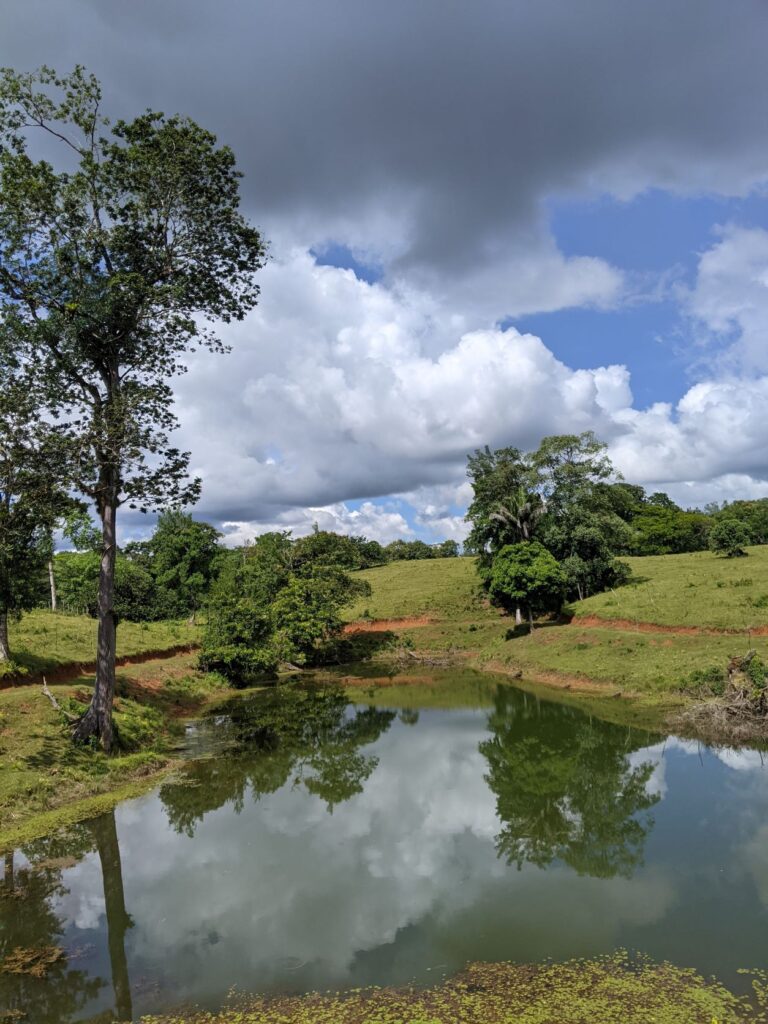
As for my previous, Spring 2021 journey in Costa Rica, I rented a 2019 4WD Toyota Landcruiser from Alamo (an ominously appropriate company name) in Liberia. This was the rental company’s flagship SUV, which meant it wasn’t going to be cheap. I negotiated for a long-term discounted rate ($2,600 per month), including full insurance coverage. After all was said and done, I suppose I got what I bargained for. All three of the vehicles had evidently been driven more than a few “rodeo kilometers.”
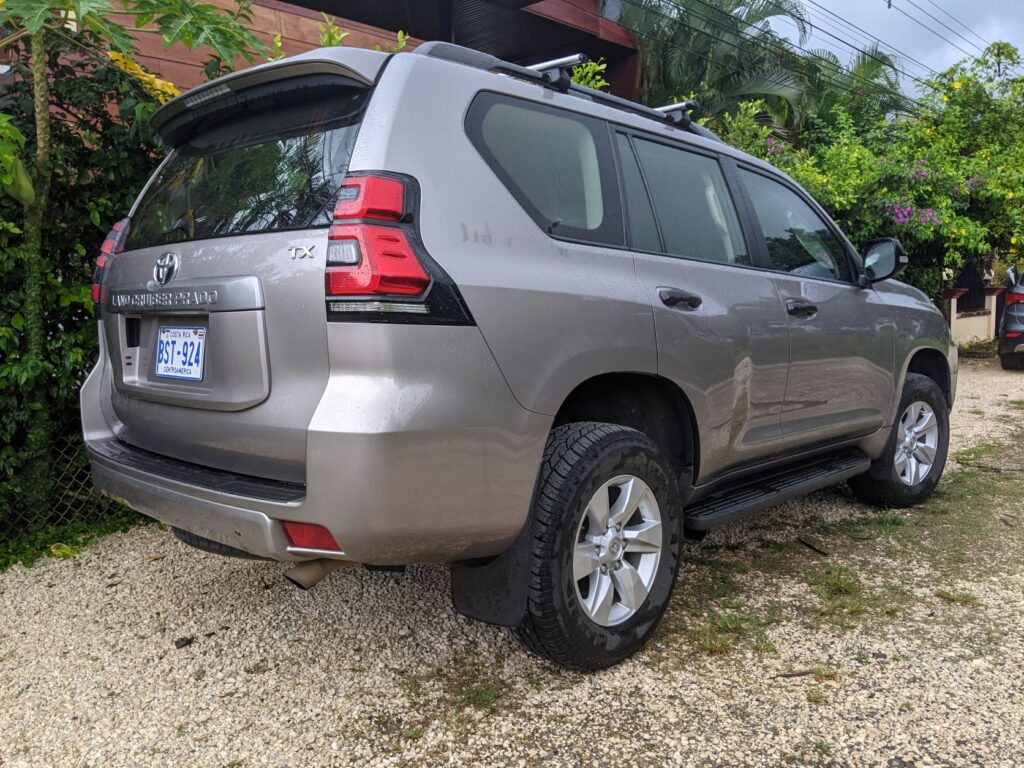
The first two Landcruisers had to be returned due to either badly worn brakes (#1) or tires, including the spare (#2). The third one, exchanged in Puerto Viejo, Limon, had decent tires and brakes but appeared as though it had lost a demolition derby contest. Remarkably, the last and ugliest duckling of the three, brought me back to the Liberia airport at the end of November without further incident. All of the rental vehicles were given to me with relatively high mileage (e.g > 60,000 km) and evidently without a thorough mechanical inspection. A representative of the rental company admitted that they depended on rental customers telling them of any problems with the vehicle upon returning it. If nothing was reported to be wrong with the vehicle, it was simply washed and rented immediately to the next customer. Of course, the obvious question was: Who in the world would want the liability of pointing out a potentially expensive repair needed for the rental car they had just returned? You be the judge.
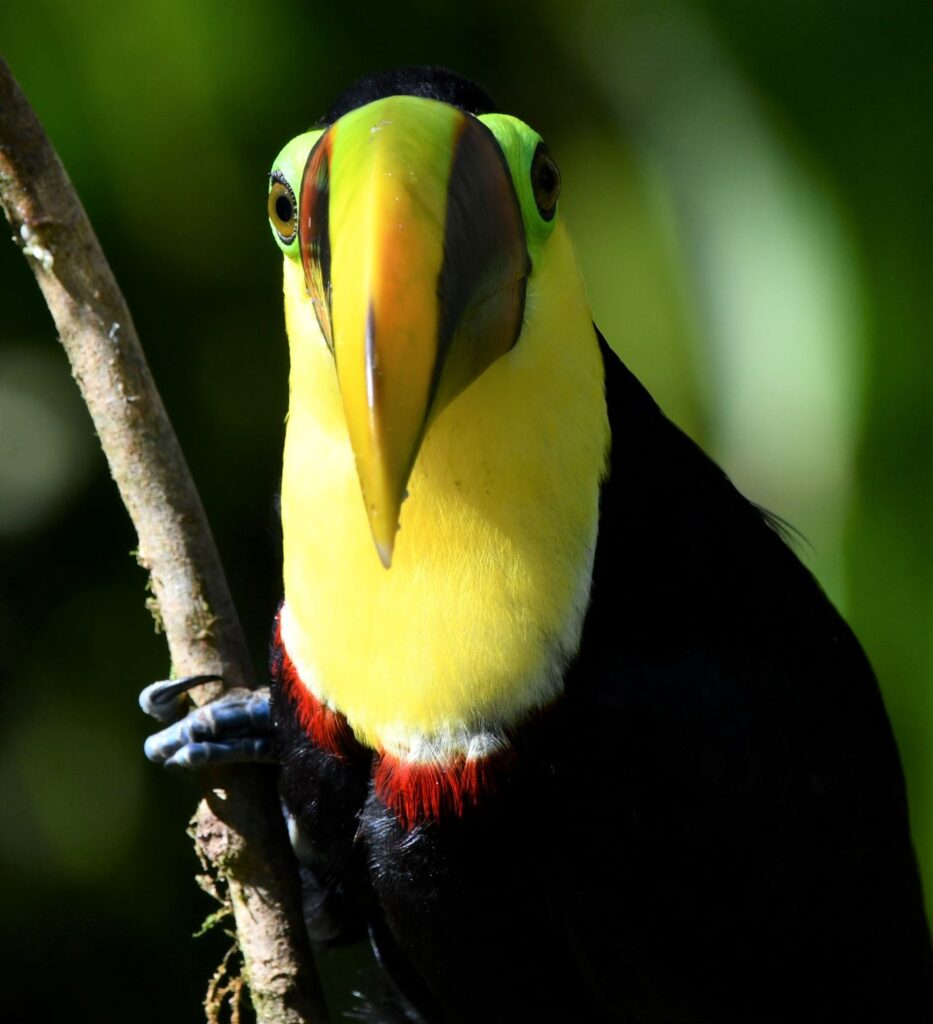
Road conditions in Costa Rica are legendary, ranging from smooth, multi-lane expressways (e.g. Siquirres to Santa Clara) to potholed nightmares (Nicoya to Nosara). Flat tires, brake failures, tweaked suspension, construction detours, slow trucks, pedestrians, cyclists, were common; Unsurprisingly, I had my share of driving adventures on this trip. Nevertheless, the destination (rather than the journey) ” was the thing.” At the end of each challenging drive was a worthwhile location with splendid scenery and phenomenal wildlife.
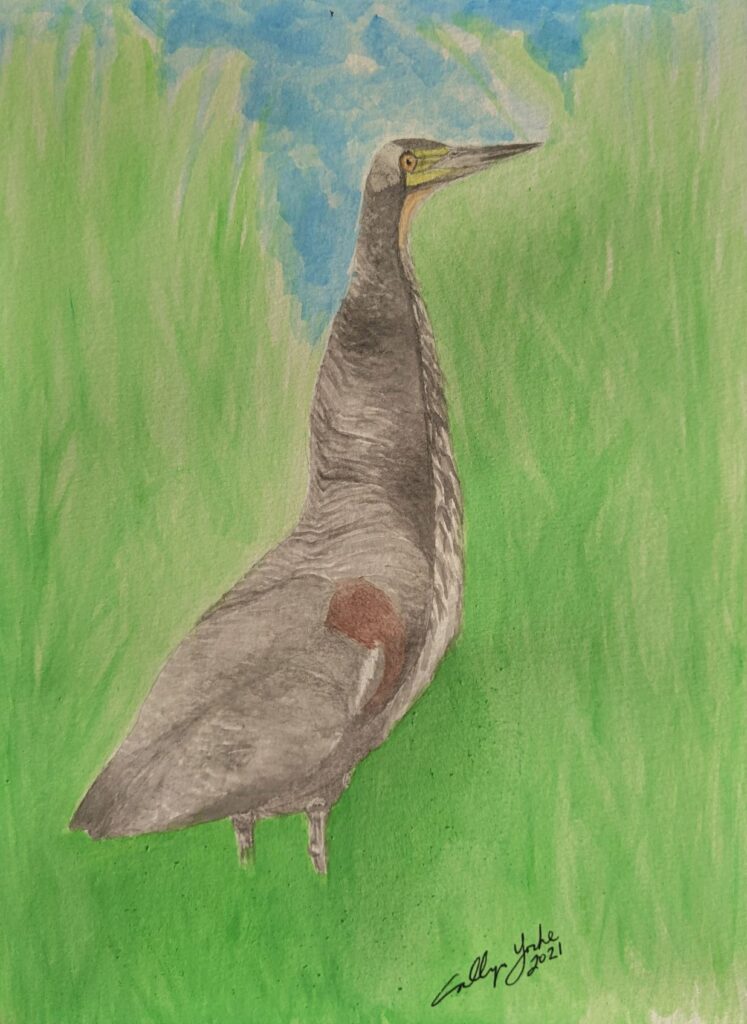
My academic interest is primarily comparative avian community ecology. Accordingly, I chose to stay in a handful of places for an extended period of 10-20 days. Each location allowed multiple observations of relatively common birds and photo opportunities for a great variety of birds, including new species for my trip list. I ended the three-month journey with nearly 200 pages of hand-written journal notes and lots of digital photos.
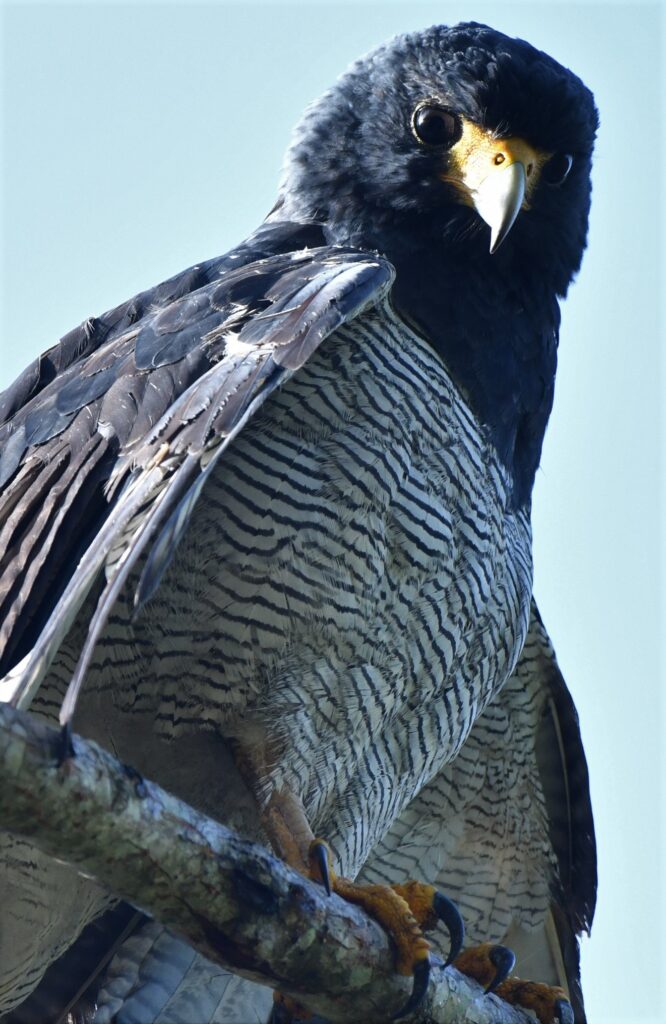
Perhaps of greatest interest to the sport-birding community were highlights of my trip, ranging in regional status from rare species,

e.g. an adult Brown Noddy in Puerto Viejo (Limon) to uncommon transient, e.g. Black-billed Cuckoo, Rancho Naturalista; uncommon resident, Ornate Hawk-Eagle, La Laguna del Lagarto; Yellow-rumped Tanager, Cocles, and common to abundant migrant, Red-eyed Vireo. Most of the aforementioned birds I found while birding alone, my modus operandi. Other, equally sought after species, found with the assistance of local birding guides, included the local, Black-bellied Hummingbird and Barred Hawk, Quelitales, the rare and enigmatic Gray-headed Piprites, near Rancho Naturalista, Bare-necked Umbrellabird, an endangered species of the Veragua Rainforest, and the shy, secretive Wrenthrush of Volcan Turrialba. An unexpected treat was the discovery of an endemic Cabani’s Ground Sparrow in Ujarras, while having a tire repaired in an adjacent auto shop. Another Cartago Province specialty was a Costa Rican Warbler at Rancho Naturalista.
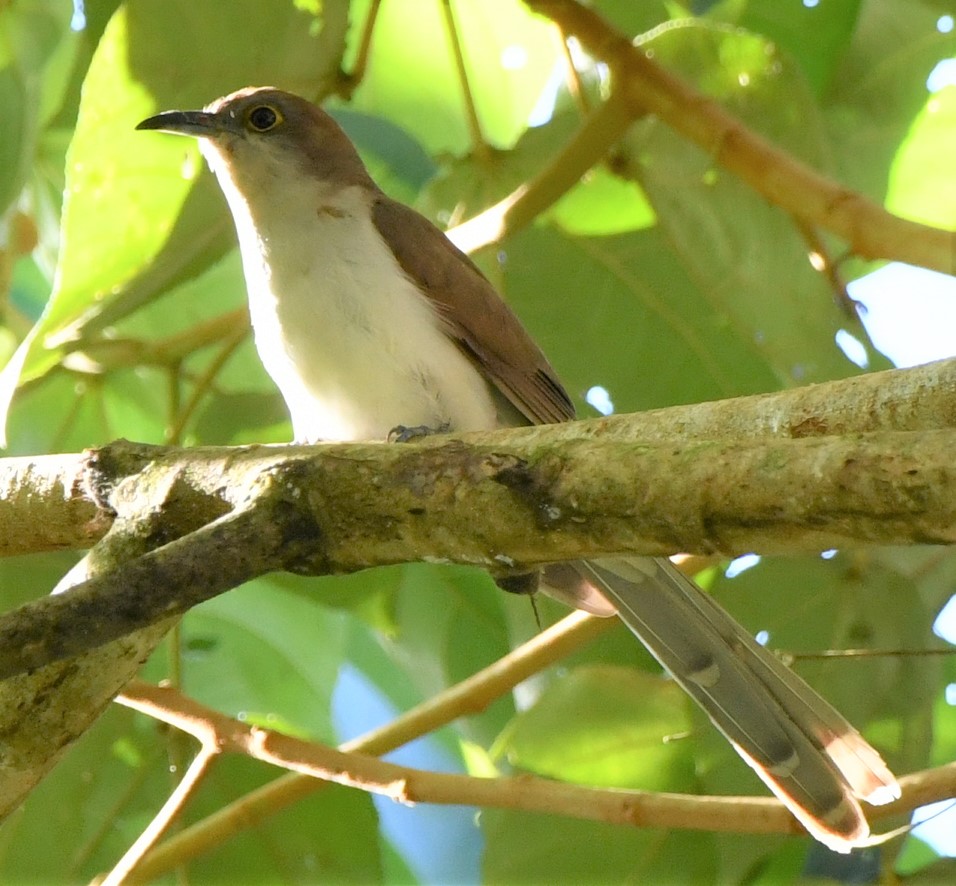
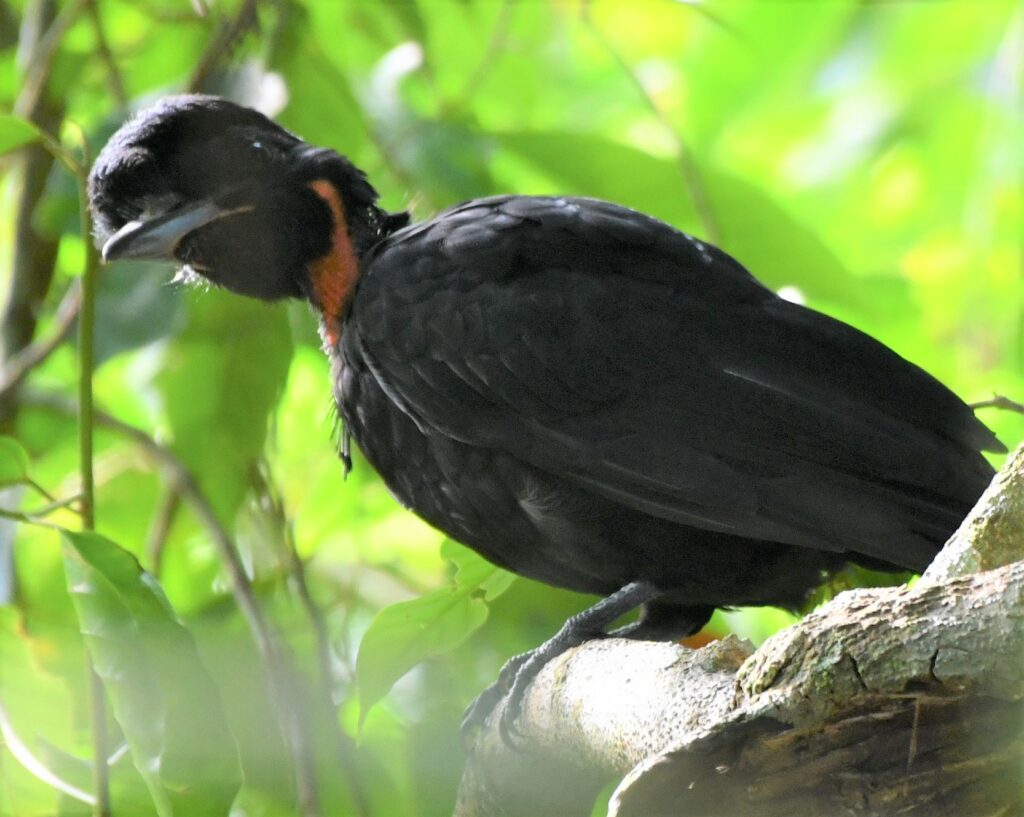
Locations (in chronological order – scroll down for details)
- Samara, Nicoya Peninsula, Guanacaste Province (September 1-10, 2021); Rio Buena Vista, Playa Carillo, Reserva Playa Camaronal.
- Rancho Naturalista, Cartago Province (September 11-21, 2021); Rio Tuis; Laguna Angostura; Grano Oro Rd.; Paso Marco; Rio Caque; Volcan Turrialba; Tayutic; La Suiza; Los Morodos; San Antonio Rd..
- Hotel Quelitales, Cartago Province (September 21-30, 2021); Paraiso; UJarras; Orosi; Piedras Blancas; Finca Cinquenta.
- La Paz Del Caribe & Bugabutik Lodge, Cocles, Limon Province (October 2-14, 2021); Ole Caribe Rd.; Playa Cocles; Playa Manzanillo; Paraiso Rd.; Playa Gondoca; Rio Sixaola; Playa Negra; Playa Cahuita; Playa Blanca; Puerto Viejo Talamanca.
- Veragua Rainforest Ecological Reserve, Limon Province (October 14-16, 2021).
- Ara Ambigua Lodge, Puerto Viejo, Heredia Province (October 16-17, 2021).
- La Laguna del Lagarto Lodge, Alajuela Province (October 17- November 10, 2021); Boca Tapada; Santa Rita; Loma Lapa Verde Ecological Reserve; Route #250; Pital; Maquenque Lodge.
- Nosara Sunrise B&B, Nicoya Peninsula, Guanacaste Province (November 10 -27, 2021); Rio Nosara @ Nosara Airport; Boca Rio Nosara; Playa Guiones; Playa Garza; Playa Ostional.
- Playa Hermosa, Nicoya Peninsula, Guanacaste Province (November 27-28, 2021).
_____________________________________________________________________________________________
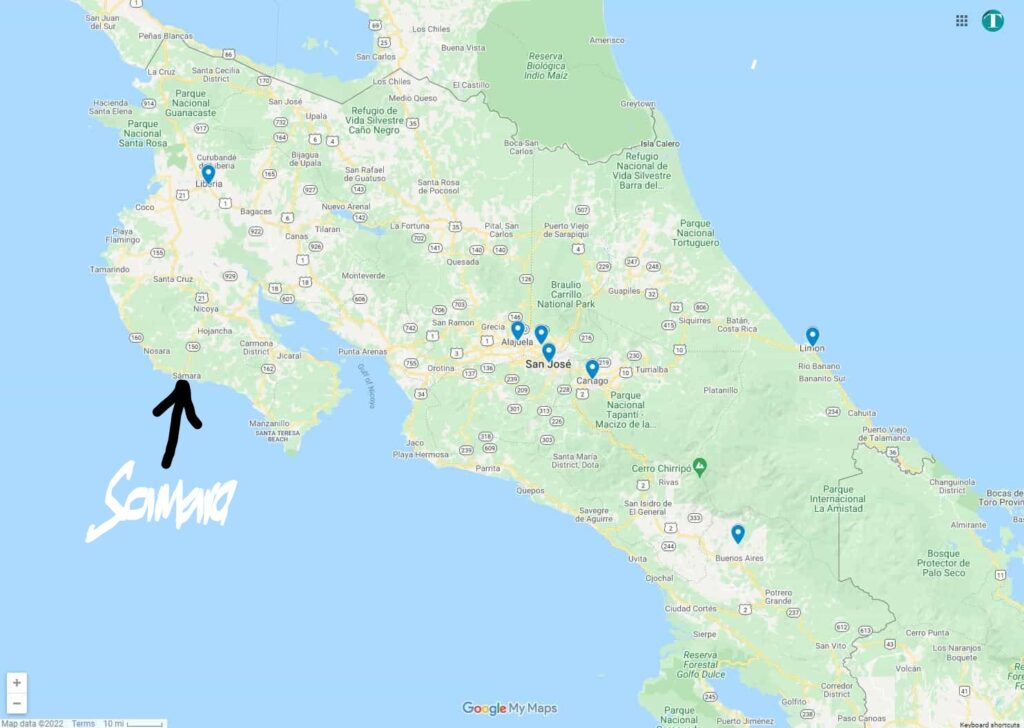
Samara, Nicoya Peninsula, Guanacaste Province Costa Rica September 1-10, 2021
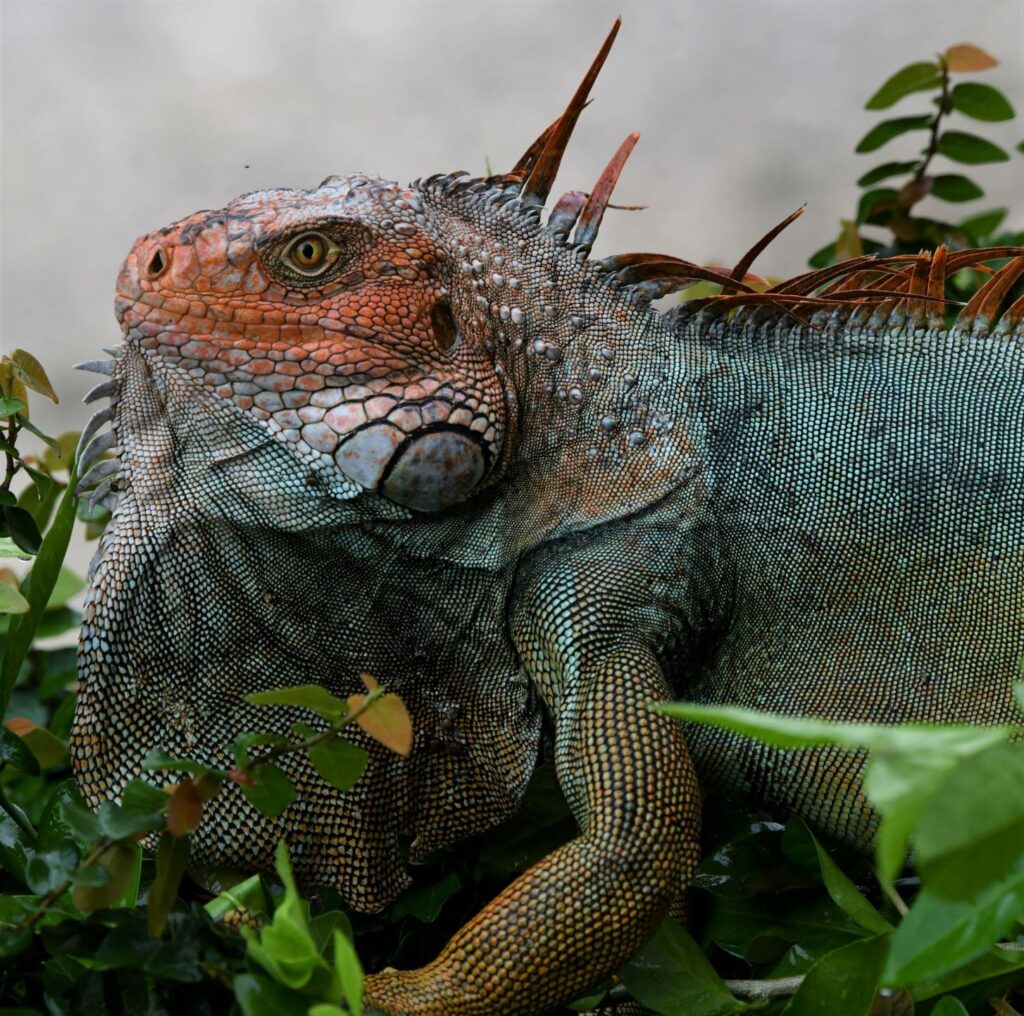
Samara was a convenient base for observing the fauna occupying local habitats, including tropical dry forest, riverine gallery forest, river & stream, mangrove, mudflat, sandbar, beach, rocky tidepool and headland, bay and offshore ocean waters, roadside second-growth, ruderal field and vacant lot, pasture, farm and garden. Most of those places could be reached during an early morning, two-hour walking survey centered in the town of Samara. Distant locations, e.g. Rio Buena Vista, Finca Taranta, Playa Carillo and Reserva Playa Camaronal, required a bicycle or automobile; I surveyed those places less frequently than in the immediate vicinity of Samara.
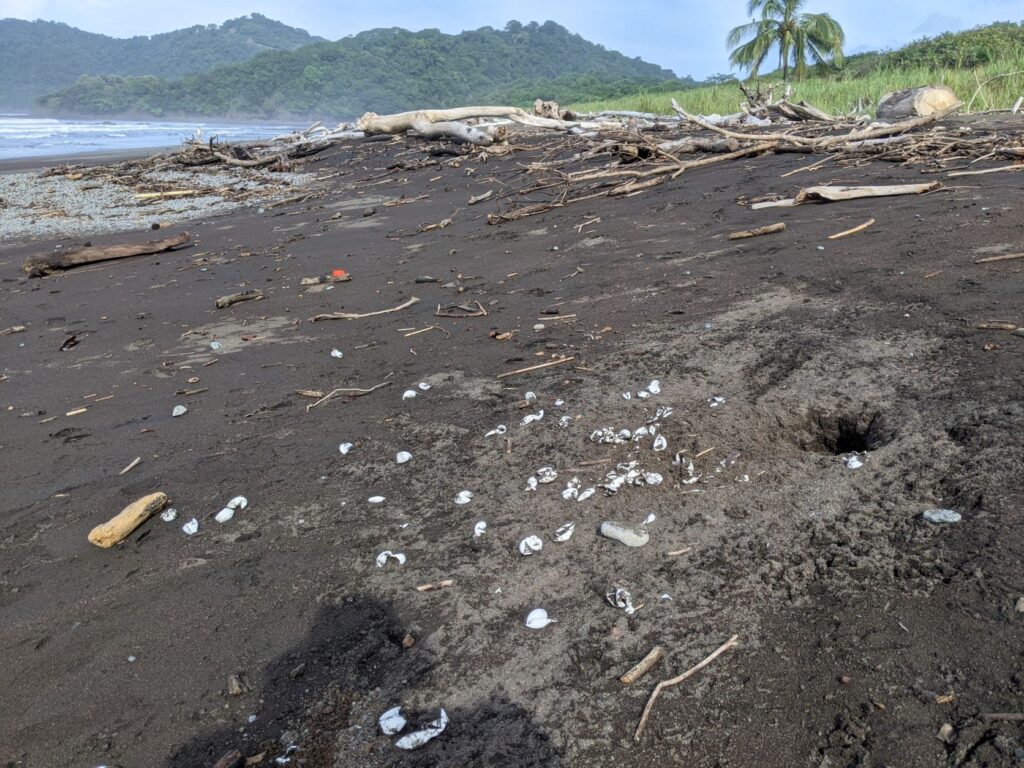
My home base in Samara was a small, bed & breakfast lodge (Chill Out Lodge) owned and operated by a very accomodating German couple, Tina and Jorg. The location, service, food and facilities were excellent. Each morning, weather permitting, I walked a clockwise route around Samara, surveying birds in the above-mentioned habitats. Heavy rains occurred intermittently throughout my stay, though mostly in the afternoon and evening. This resulted in some flooding of the streams and roadways but generally did not interfere with the morning surveys.
A few other animal species were found during the surveys, including resident troupes of Mantled Howler Monkey (Alouatta palliata), which sounded off from the tree canopy at dawn nearly every day. Most of these appeared habituated to human presence and allowed fairly close approach.
Two species of Iguanid, the familiar, arboreal Iguana iguana and less common Ctenosaura similis, were found in Samara. The latter species appeared to prefer rock piles and masonry walls. Except for large adults, both of these lizard species were wary and often scampered away when I approached.
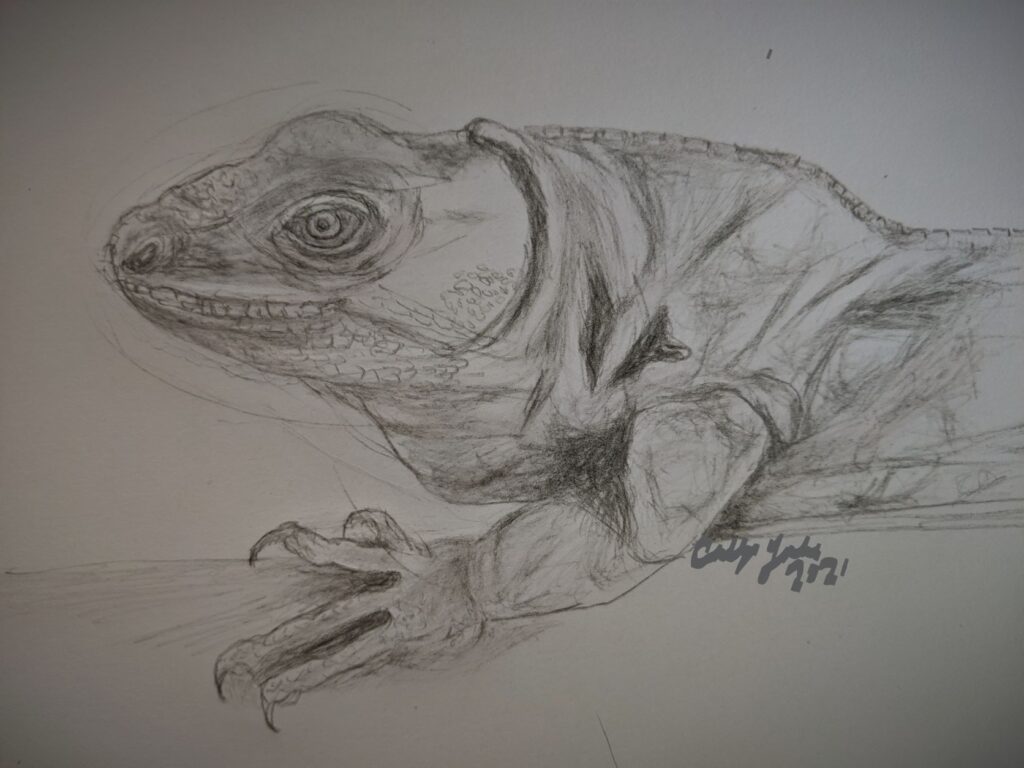
Samara Annotated Bird List (September 1-10, 2021) Callyn Yorke
Explanation of Symbols
Locations: SAM = Samara: including aforementioned habitats within a radius of about 2.5 km of the town center. COL = Chill Out Lodge and neighborhood. FT = Finca Taranta and adjacent areas: pasture, marsh, tropical dry forest, roadside ruderal. RBVC = Rio Buena Vista crossing: river, sandbar, gallery forest. PC = Playa Carillo: nearshore waters, beach, rocky tidepool, hillside trail through adjacent tropical dry forest. RPC = Reserva Playa Camaronal: black sand beach, estuary, river, tropical dry forest, adjacent farm, pasture, ruderal roadside. Ubiq. = Ubiquitous, widespread throughout the area in the appropriate habitat.
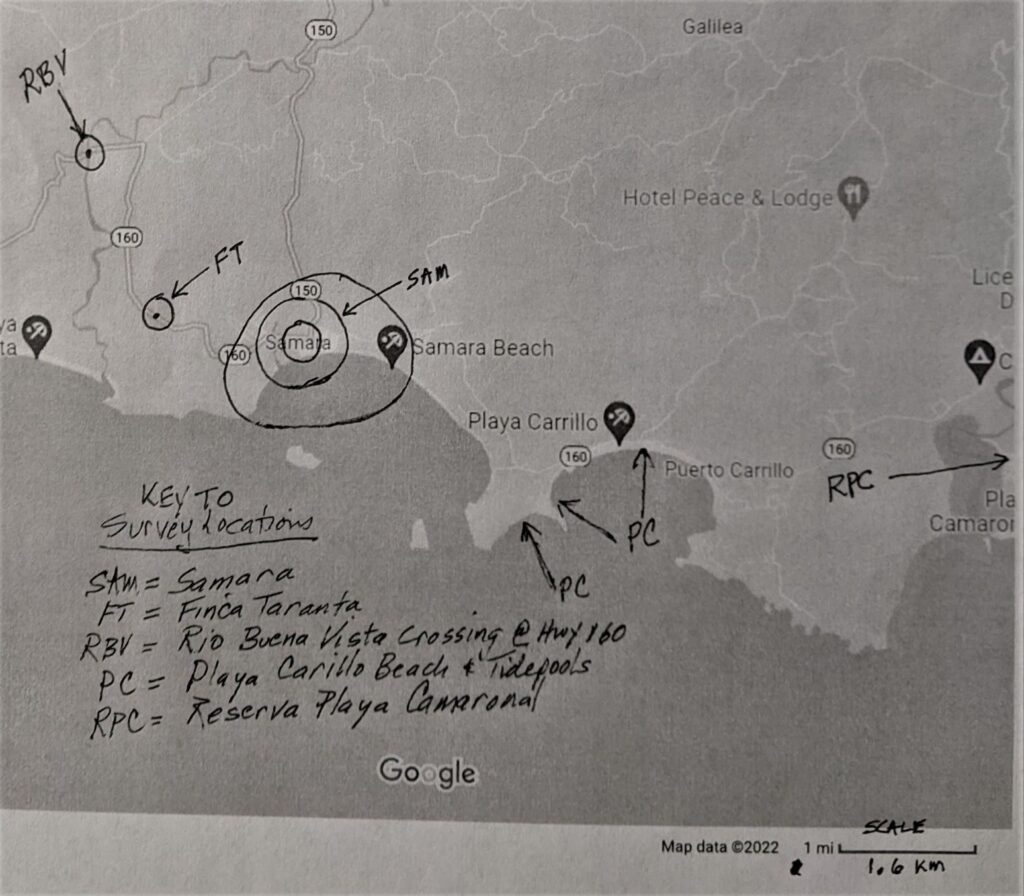
Abundance: Numbers following each species represent the maximum number of individuals found during a survey.
Frequency: C = Commonly found or expected to be found during all or most surveys; FC = Fairly commonly found in more than half of the surveys; UC = Uncommonly found in less than half of the surveys; R = Rarely found, i.e. only once during the surveys (Note: some areas, e.g. Reserva Playa Camaronal, were surveyed only once).
Plumage, sex, age (if known): alt = alternate, breeding plumage); bsc = basic, non-breeding plumage); trans = transitional i.e. molting into bsc or alt plumage; m = male; f = female; ad= adult; imm = immature.
Behavior, Position, etc.: agl = in flight, approximate height (m) above ground level; greg = gregarious; mid = middle height level, e.g. in trees, forest; msf = mixed species flock.
Systematics and Nomenclature follow Avibase and Clements (2021)
- Black-bellied Whistling Duck Dendrocygna autumnalis, 8, gregarious in flight and wetlands, SAM, RPC, FC
- Inca Dove Columbina inca 8 gregarious, C, ubiquitous
- Common Ground Dove Columbina passerina 3, FT, UC
- Ruddy Ground Dove Columbina talpacoti 3, FT, RBV, RPC, FC
- White-tipped Dove Leptotila verreauxi 1, roadside, FT, UC
- White-winged Dove Zenaida asiatica 20, gregarious, ubiquitous, C
- Groove-billed Ani Crotophaga sulcirostris 8 gregarious, ubiquitous in weedy second-growth and pastures, C
- Squirrel Cuckoo Piaya cayana 1 subcanopy of large trees, FC, ubiq.
- Short-tailed Nighthawk Lurocalis semitorquatus ? 1, seen briefly when flushed from shady riparian strip, RPC, R
- Common Paraque Nyctidromus albicollis 1 flushed from riparian woods trail, PC, R
- Stripe-throated Hermit Phaethornis striigularis 1 low, flying across trail at edge of secondary forest, PC, R
- Canivet’s Emerald Cynanthus canivetii 1 (m) PC, R
- Blue-vented Hummingbird Saucerottia hoffmanni 1 trailside secondary forest, low, PC, R
- Cinnamon Hummingbird Amazilia rutila 1 on blue flowers in hillside garden, PC, UC
- Rufous-tailed Hummingbird Amazilia tzacatl 8 gregarious, visiting a variety of garden flowers, SAM, PC, C
- Double-striped Thick-knee Burhinus bistriatus 8 loosely gregarious in pasture, FT, FC
- American Oystercatcher Haematopus palliatus 1 on nearshore reef SAM, UC
- Southern Lapwing Vanellus chilensis 2 gregarious in wet pasture, FT, UC
- Wilson’s Plover Charadrius wilsonia 1 at edge of tidepools, PC, UC
- Semipalmated Plover Charadrius semipalmatus 8 gregarious on shore, SAM, PC, C
- Hudsonian Whimbrel Numenius hudsonicus 3 loosely gregarious, tidepools and shore, SAM, PC, FC
- Ruddy Turnstone Arenaria interpres 6 (alt. plmg.) loosely gregarious in tidepools, SAM, PC, FC
- Surfbird Calidris virgata 15 gregarious (trans. bsc. plmg.) foraging on reef with tidepools, PC, UC
- Least Sandpiper Calidris minutilla 3 gregarious, on shore, SAM, FC
- Spotted Sandpiper Actitis macularius 20 (bsc. & trans. bsc. plmg.), loosely gregarious and lone individuals on shore, tidepools, estuary, mangrove, sandbar, mudflats, ubiquitous, C
- Willet Tringa semipalmata 1 (bsc. plmg.) mudflat and shore, SAM, RPC, UC
- Magnificent Frigatebird Fregata magnificens 1 f circling @ about 30 m, nearshore, PC, UC
- Neotropic Cormorant Nannopterum brasilianum 2 gregarious, reef tidepool, SAM, FC
- Brown Pelican Pelecanus occidentalis 1 circling low over bay with anchored boats, SAM, UC
- Bare-throated Tiger-Heron Tigrisoma mexicanum 2 foraging in flooded, ruderal lot adjacent to the COL with anuran vocalizations in the evenings, SAM (COL), FT, RPC, UC
- Great Blue Heron Ardea herodius 1 foraging in tidepool, PC, R
- Great Egret Ardea alba 3 individuals foraging in wetlands, including pasture, tidepools, estuary and mangrove, C, ubiquitous.
- Snowy Egret Egretta thula 1 at tide line, PC, UC
- Little Blue Heron Egretta caerulea 1 edge of river, RBVC, UC
- Cattle Egret Bubulcus ibis 30 gregarious, FT, FC
- Green Heron Butorides virescens 1 vocal (unseen) streamside, SAM, UC
- Yellow-crowned Night Heron Nyctanassa violacea 1 mangrove edge, PC, R
- White Ibis Eudocimus albus 5 gregarious in flight, SAM, UC
- Black Vulture Coragyps atratus 20 gregarious on ground and tree roosts near shore, ubiquitous, C
- Turkey Vulture Cathartes aura 2 flying low over shore and pastureland, ubiquitous, FC
- Osprey Pandion haliaetus 1 flying offshore, PC, UC
- Common Black Hawk Buteogallus anthracinus 1 flying over shore, PC, UC
- Great Black Hawk Buteogallus urubitinga 1 flying over tall, riverine forest, RPC, R
- Roadside Hawk Rupornis magnirostris 1 individuals soaring over hillside, perched in roadside trees, ubiquitous, FC
- Gray Hawk Buteo plagiatus flying over pasture, FT, R
- Black-headed Trogon Trogon melanocephalus 2 (m,f) local in woodland edge and garden trees and on utility wire, SAM, RBVC, FC
- Lesson’s Motmot Momotus lessonii 1 trees at edge of vacant lot, SAM, UC
- Ringed Kingfisher Megaceryle torquata ? 1, relatively large size, seen briefly in flight at distance, SAM, R
- Amazon Kingfisher Chloroceryle amazona 1 diving into a tidepool, perched in small tree on rock overlooking bay, PC, RPC, FC
- Green Kingfisher Chloroceryle americana 1 diving in estuary, RPC, SAM, RBVC, FC
- Hoffmann’s Woodpecker Melanerpes hoffmannii 8 (m,f) gregarious (often in pairs) vocal in wooded lot, SAM, C
- Crested Caracara Caracara plancus 2 gregarious (often paired), pasture and woodland edge, cell towers, ubiquitous, C
- Yellow-headed Caracara Milvago chimachima 2 often on ground in pastures and shore, SAM, FT, UC
- Orange-chinned Parakeet Brotogeris jugularis 50 vocal, gregarious, favors a wide variety of fruiting trees, forest and gardens, SAM, C
- White-fronted Parrot Amazona albifrons 10 vocal, gregarious, SAM, FT, FC
- Orange-fronted Parakeet Eupsittula canicularis 30 vocal, gregarious, ubiquitous, FC
- Streak-headed Woodcreeper Lepidocolaptes souleyetii 2 vocal subcanopy of riverine forest, RBVC, UC
- Long-tailed Manakin Chiroxiphia linearis ? 1 vocal (unseen) riverine forest understory , young second-growth, RBVC, R
- Cinnamon Becard Pachyramphus cinnamomeus 2 active, gregarious, subcanopy of garden tree, SAM, UC
- Rose-throated Becard Pachyramphus aglaiae 4 (m,f) vocal, active, gregarious, subcanopy of garden and forest edge trees, SAM, FC
- Lesser Elaenia Elaenia chiriquensis 1 sallying from low tree perch at edge of pasture, FT, PC, UC
- Tropical Pewee Contopus cinereus 1 sallying from low perch in tree at edge of pasture, FT, R
- Willow Flycatcher Empidonax traillii on bw fence at edge of wet pasture, FT, UC
- Bright-rumped Attila Attila spadiceus 1 vocal (unseen) coastal second-growth, PC, R
- Brown-crested Flycatcher Myiarchus tyrannulus 1 edge of farmland with trees, RPC, R
- Great Kiskadee Pitangus sulphuratus 5 vocal, gregarious (pairs), often perched on utility wires, sallying to ground, ubiquitous, C
- Boat-billed Flycatcher Megarynchus pitangua 1 in subcanopy of tall legume tree, SAM, UC
- Social Flycatcher Myiozetetes similis 8 vocal, gregarious, often on utility wires, ubiq., C
- Streaked Flycatcher Myiodynastes maculatus 1 subcanopy of tall trees near stream, SAM, R
- Tropical Kingbird Tyrannus melancholicus 18 vocal, often paired a few m apart on utility lines, ubiquitous in open to semi-open country, C
- Eastern Kingbird Tyrannus tyrannus 1 in tree at edge of beach scrub, RPC, R
- Scissor-tailed Flycatcher Tyrannus forficatus 1 flew across Route #160 through farmland s of RPC, R
- White-throated Magpie Jay Calocitta formosa 2 vocal, gregarious subcanopy of woodlands and tall garden trees, sometimes on the ground, SAM, C
- Southern Rough-winged Swallow Stelgidopteryx ruficollis 2 flying low over open areas, SAM, FT, PC, FC
- Gray-breasted Martin Progne chalybea 10, gregarious, on utility lines; flying 10 – 30 m above ground, ubiquitous FC
- Rufous-naped Wren Campylorhynchus rufinucha 10 vocal, gregarious, active in a wide range of vegetation types at all height levels, ubiquitous, C
- Clay-colored Thrush Turdus grayi 2 on ground in shaded areas, e.g. gardens and woodland edge, ubiquitous, FC
- Stripe-headed Sparrow Peucaea ruficauda 2 vocal, on utility lines, fences, in clumps of second-growth, vacant lots and pasture, SAM, FT, FC
- Streak-backed Oriole Icterus pustulatus 1 in flowering shrubsa and trees, SAM, FC
- Great-tailed Grackle Quiscalus mexicanus 20 (m,f) vocal, gregarious, often on ground in developed and ecologically disturbed areas, shore, tidepools, ubiquitous, C
- Wilson’s Warbler Cardellina pusilla 1 (m) active in shore edge trees and shrubs, SAM, R
- White-shouldered Tanager Loriotus luctuosus 1 edge of coastal second-growth, RPC, R
- Blue-gray Tanager Thraupis episcopus 2 a pair in tree canopy, SAM, UC
- Blue-black Grassquit Volatinia jacarina 4 (m,f), often paired, on bw fences, ruderal roadside and pasture, FT, FC
- Morelet’s Seedeater Sporophila morelleti 10 (m,f) gregarious, roadside marsh, pasture, bw fences, SAM, FT, PC, FC _________________________________________________________________________________________

Rancho Naturalista, Cartago (September 11- 21, 2021) Callyn Yorke

As one of the oldest and most popular birding destinations in Costa Rica, Rancho Naturalista (RN) had been on my wish list for some years. For the most part, I found birding at RN to be well worth an exhausting seven-hour drive from Samara. I was met at the front office by a friendly, Tica sport-birding guide, Mercedes, who showed me the hacienda, second-level room (#2, ‘Cotinga’), lodge facilities and general layout of the property. She seemed eager to get me started with a birding agenda, asking if I was interested in finding any special birds of the area. Affirmative to that; Sunbittern, known to occur here, would be a life bird for me. Together with her British expat husband, Harry Barnard, both resident employees of RN, they offered local and distant sport-birding guide services ($75/day). Since I was the only guest at the time of arrival, nearly all of their attention was given to my inquiries about the local avifauna, which were answered with an air of confident expertise.
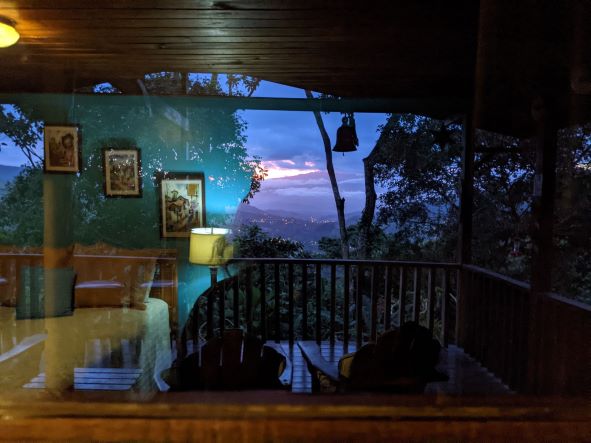
Harry Barnard (HB), an energetic, outgoing lad his late twenties, was a self-educated birder, sharp-eyed and familiar with many bird vocalizations. He had arrived in Costa Rica as a teenager and devoted the following decade to Costa Rican birds. In fact, without Harry’s assistance, especially in the Volcan Turrialba highlands, I would have doubtless finished the ten-day visit with significantly fewer birds than were found (scroll down for the Annotated Bird List).
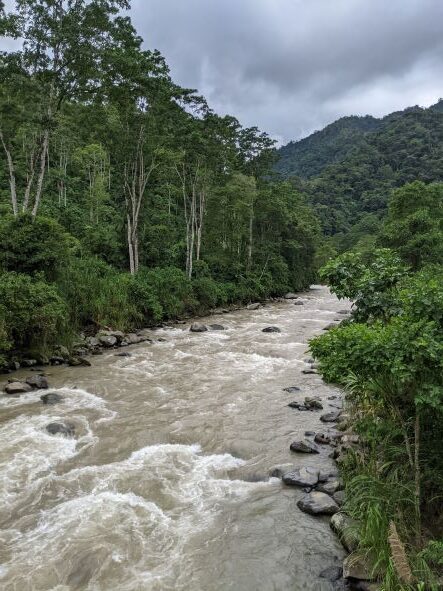
In addition to spending 1-2 hours observing birds at the fruit (i.e. banana) and hummingbird feeders in front of the dining area, I enjoyed solitary walking surveys on the hillside forest trails, entry road, pasture, gardens, homesteads and adjacent land. Distant trips by car were made to rivers and streams (Rio Tuis), a large lake (Lago Angostura), upland pasture, farmland, pine plantation and secondary forest (Grano Oro Road) and the Volcan Turrialba highlands. Most of those birding trips were with one or two other experts, i.e., Harry, Mercedes and Stephen; My rental Toyota Landcruiser was in use daily, which turned out to be about the only transportation available at RN.
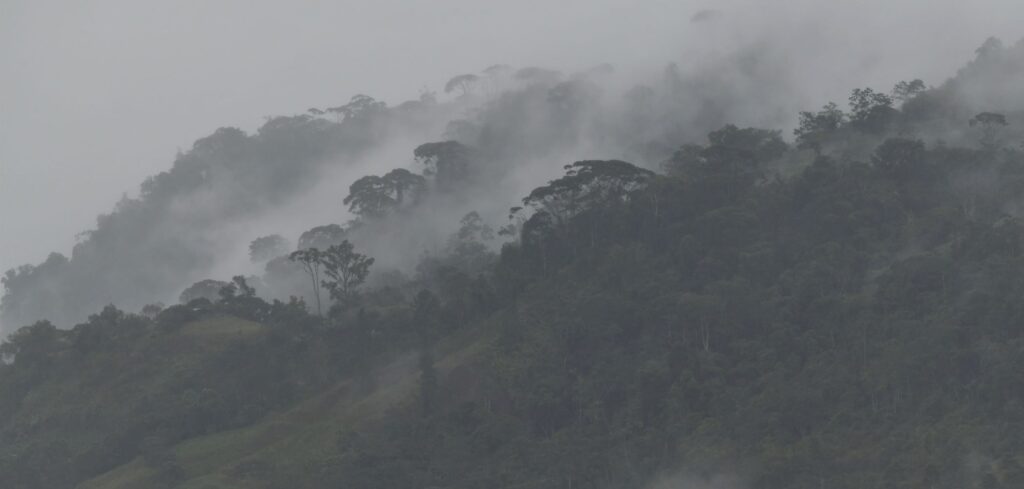
Accessibility was perhaps the most significant inconvenience at RN, particularly for birders without their own transportation. A long, steep driveway in poor condition connected the local road to Rancho Naturalista. This driveway could be birded in a couple of hours, which I did a few times before breakfast. Beyond that, a four-wheel drive and high ground clearance vehicle was useful and possibly necessary during the rainy season, both for access to the RN main lodge and for some local, unimproved roads, e.g. Lago Angostura.
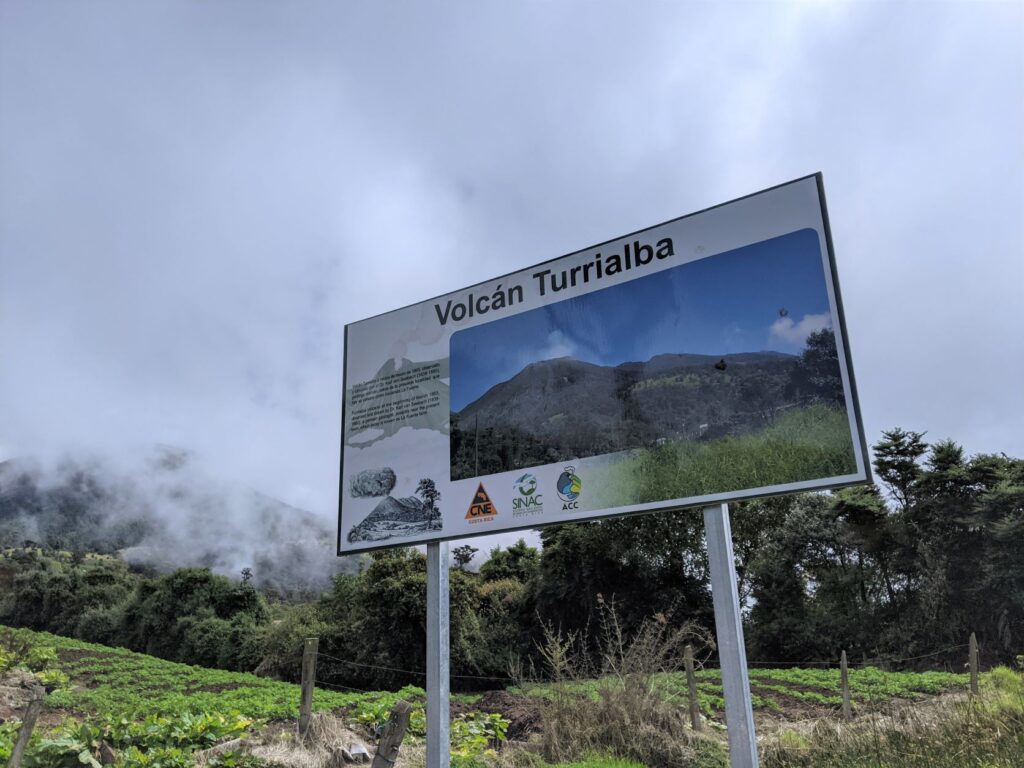
Forest trails at RN were fairly well maintained, though infested by swarms of relentless mosquitoes. Birds in this area appeared semi-habituated to human presence and would often tolerate relatively close approach. However, lighting in the forest was poor (too dark or harshly backlit), resulting in few worthwhile photo opportunities. Open areas were best for photography. Forest edge, garden and second-growth areas with flowering trees, supported a variety of North American migrants and winter residents, particularly warblers. My regular walking surveys on the property, alone and before breakfast, usually produced a ratio of about 88/12% resident/migrant species; the total count averaging about 40 species.

Services and facilities at RN were adequate, though comparatively pricey for an aging, 2.5-star accommodation at low season ($150/night, three meals included). My upstairs room in the main lodge was spacious with antiquated, worn furnishings. A wall closet appeared initially to be ideal until opened; it was largely useless due to it being full of boxes and various clothing items in long-term storage. An adjoining communal observation deck, separated from the bedroom by wood & glass doors, provided a grand view of the valley and distant volcano (especially in the evening) and convenient access overlooking the bird feeding stations. However, the curtains and doors had to be closed for privacy when other guests arrived on the deck at dawn to observe birds.

Mealtimes were posted and strictly observed. A cowbell was rung at the onset of each meal, encouraging both a timely arrival to the table and, after a few days, an incipient pavlovian response. However, the decidedly inflexible mealtime schedule resulted in some rather rushed bird surveys and having to adjust local birding trips accordingly. The kitchen staff was friendly and once familiar with my dietary preferences, served all my meals with freshly prepared foods, presented in an attractive manner. The quality of the food was above average among the lodges I have visited in Costa Rica.
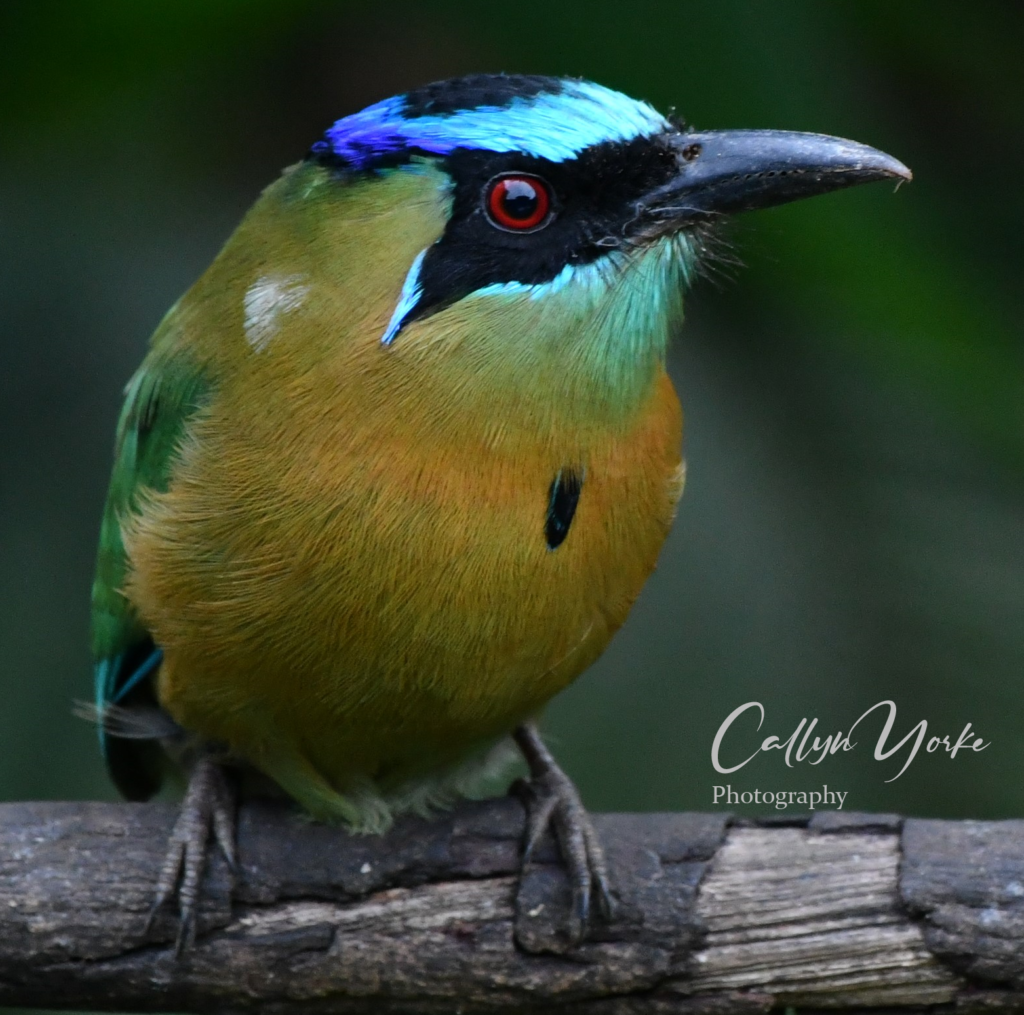
Rancho Naturalista Annotated Bird List (September 11-21, 2021) Callyn Yorke
In contrast with the predominately wet weather in the Pacific region (e.g. Samara), weather conditions during my visit to RN (Cordillera-Caribbean region) were mostly dry and favorable for fieldwork. Daytime air temperatures ranged from about 18 C to 26 C; the skies were fair to partly cloudy with infrequent, brief thundershowers in the afternoon. Winds were light (8-12 km/hr) out of the E and NE.
Explanation of Symbols
Locations: GOR = Grano Oro Road and adjacent areas, including Paso Marcos (Elev. 762m – 1,250 m); LA = Laguna Angostura, mostly the west side; LM = Road to Los Morodos and San Antonio; LS = La Suiza; RN = Rancho Naturalista, gardens, feeders, forest trails and entrance driveway (Elev. 1,000 m); RT = Rio Tuis, multiple locations between Tayutik and La Suiza (LS); TAY = Tayutik, sugarcane factory & fields and adjacent area; VOT = Volcan Turrialba, adjacent farmland, pastureland (Elev. 1,600m – 2,500 m); Ubiq. = Ubiquitous, widespread throughout the area in appropriate habitat.

Abundance: Numbers following each species entry indicate a maximum count of individuals in one or more areas during a single survey.
Frequency (primarily with reference to multiple surveys at RN; other areas were surveyed only once or twice): C = Commonly observed during all or most of the surveys; FC = Fairly Common, observed at least in half of the surveys; UC = Uncommon, observed less than half of the surveys; R = Rarely found, i.e. observed only once (note: some areas were surveyed only once, e.g. Volcan Turrialba).
Sex, Age & Plumage (if known): m = male; f = female; ad = adult; imm = immature; bsc = basic, non-breeding plumage; alt = alternate, breeding plumage; trans = transitional, i.e. molting into basic or alternate plumage.
Behavior, Position, etc.: agl = in flight, approximate height (m) above ground level; greg = gregarious; mid = middle height level, e.g. in trees, forest; msf = mixed species flock.
Systematics and Nomenclature follow Avibase and Clements (2021).
- Muscovy Duck Cairina moschata 1 (m) swimming in lake, LA
- Swan Goose Anser cygnoides (exotic) 2 in yard, rural homestead, GOR
- Gray-headed Chachalaca Ortalis cinereiceps 16 (m,f; ad, imm) gregarious, occasionally vocal, regular at feeders, RN C
- Black Guan Chamaeptes unicolor 1 flushed from large tree subcanopy, VOT
- Least Grebe Tachybaptus dominicus 2 swimming in lake near weedy edge and lily pond, LA, GOR
- Feral Rock Pigeon Columba livia (exotic) 4 central soccer field, LS
- Red-billed Pigeon Patagioenas flavirostris 20 gregarious, ubiquitous, C
- Band-tailed Pigeon Patagioenas fasciata 2 flying VOT
- Ruddy Ground Dove Columbina talpacotti 4 gregarious (pairs), LA
- White-tipped Dove Leptotila verreauxi 3 gregarious near feeders, RN, C
- Gray-chested Dove Leptotila cassinii 2 gregarous (paired) on ground near feeders, RN, UC
- White-winged Dove Zenaida asiatica 50 gregarious, ubiquitous in and near settlements, C
- Groove-billed Ani Crotophagus sulcirostris 4 gregarious, second-growth, tall grass in and near pastures, vacant lots, LA, GOR, VOT
- Squirrel Cuckoo Piaya cayana 1 basking in tree, VOT, RN, UC
- Black-billed Cuckoo Coccyzus erythropthalmus 2 subcanopy, forest edge near lodge entrance, RN, R
- Common Paraque Nyctidromus albicollis 1 flushed from roadside, GOR
- Chestnut-collared Swift Streptoprocne rutila 15 gregarious, flocks 20-50 m above ground level (agl), widespread above open and semi-open terrain, FC
- White-collared Swift Streptoprocne zonaris 20 loosely gregarious (pairs), 20 – 400 m agl over open and semi-open terrain, widespread, UC
- Vaux’s Swift Chaetura vauxi 1 lower Eslabon, VOT (HB)
- Lesser Swallow-tailed Swift Panyptila cayennensis 1 flying 50 m agl over forest and semi-open area, RN, R
- White-necked Jacobin Florisuga mellivora 6 regular at feeders, RN, C
- Green Hermit Phaethornis guy 1 (f) edge of forest, RN, R
- Stripe-throated Hermit Phaethornis striigularis 1 visiting garden and flowering shrubs at edge of forest briefly, RN, UC
- Lesser Violetear Colibri cyanotus 1 forest edge, VOT
- Brown Violetear Colibri delphinae 1 around feeders and flowering garden plants, RN, R
- Green-breasted Mango Anthracothorax prevostii 1 (f) on garden flowers, RN, UC
- Green Thorntail Discosura conversii 2 (m,f) foraging on verbena, RN, FC
- Black-crested Coquette Lophornis helenae 2 (m,f) foraging on verbena, RN, FC
- Green-crowned Brilliant Heliodoxa jacula 3 (m) at feeders, RN, C
- Garden Emerald Chlorostilbon assimilis 2 (m) at feeders and verbena, RN, FC
- Talamanca Hummingbird Eugenes spectabilis 1 second-growth, forest edge, VOT
- Long-billed (Black-throated) Starthroat Heliomaster longirostris 1 edge of second-growth LA
- Fiery-throated Hummingbird Panterpe insignis 3 second-growth, forest edge, VOT
- Purple-throated Mountain-gem Lampornis calolaemus 1 second-growth, edge, VOT
- Volcano Hummingbird Selasphorus flammula 5 gregarious, low on flowering second-growth, VOT
- Scintillant Hummingbird Selasphorus scintilia 2 forest edge, low flowering second-growth, VOT
- Crowned Woodnymph Thalurania colombica 3 frequent at feeders, RN, C
- Snowcap Microchera albocorona 3 (m,f) individuals foraging on verbena, RN, UC
- Stripe-tailed Hummingbird Eupherusa eximia 1 forest edge, VOT (HB)
- Rufous-tailed Hummingbird Amazilia tzacatl 3 at feeders and on garden flowering plants, ubiq., RN, C
- Russet-naped Woodrail Aramedes albiventris 1 riverside, RT, LS
- Common Gallinule Gallinula galeata 1 LA
- Purple Gallinule Porphyrio martinica 1 LA
- White-throated Crake Laterallus albigularis 1 wetland scrub, GOR
- Limpkin Aramus guarauna 1 flew across stream, LA
- Southern Lapwing Vanellus chilensis 2 on riverbank, RT
- Spotted Sandpiper Actitis macularius 2 riverbank, RT, C
- Sunbittern Eurypyga helias 2 a pair on a riverbank gravel bar, LS,RT, UC
- Woodstork Mycteria americana 1 in distance across lake, LA
- Anhinga Anhinga anhinga 1 (f) perched on snag at edge of lake, LA
- Neotropic Cormorant Nannopterum brasilianus 12 gregarious, perched on snags at edge of lake, LA
- Fasciated Tiger-Heron Tigrisoma fasciatum 1 on rock in shaded stream, RT, UC
- Great Egret Ardea alba 3 in shallows, RT, LA, FC
- Snowy Egret Egretta thula 2 (alt. plmg.) walking in shallows, streamside, RT, FC
- Little Blue Heron Egretta caerulea 2 stream and lake edge, RT, LA, UC
- Cattle Egret Bubulcus ibis 2 a pair in flight RT, FC
- Green Heron Butorides virescens 2 streamside, RT, FC
- Yellow-crowned Night Heron Nyctanassa violacea 1 marsh and second-growth at edge of lake, LA
- Black Vulture Coragyps atratus 60 gregarious in flight, feeding and roosting, ubiq. C
- Turkey Vulture Cathartes aura 10 gregarious, ubiq. FC
- Osprey Pandion haliaetus 1 flying 50-70m agl, RN, VOT
- White-tailed Kite Elanus leucurus 1 flying 50-60 m agl, LA
- Snail Kite Rostrhamus sociabilis 1 flying over lakeside, LA
- Bicolored Hawk Accipiter bicolor 1 (ad.) in favored snag perch of large tree at forest edge, RN, FC
- Roadside Hawk Rupornis magnirostris 2 roaside trees, edges of clearings and utility lines, ubiq., FC
- Semiplumbeous Hawk Leucopternus semiplumbeus 1 in flight, LA
- Short-tailed Hawk Buteo brachyurus 1 flying over lodge, 300 m agl, RN, R (HB)
- Red-tailed Hawk Buteo jamaicensis 1 in flight over forest and patureland, VOT
- Crested Owl Lophostrix cristata 2 a pair perched in the subcanopy along the upper forest trail, RN, UC
- Gartered Trogon Trogon caligatus 2 (m,f) subcanopy of trees at edge of pasture, GOR
- Collared Trogon Trogon collaris 1 (m) in subcanopy of large tree near edge of pasture, GOR
- Lesson’s Motmot Momotus lessonii 2 single and pair were at feeders, RN, FC
- Amazon Kingfisher Chloroceryle amazona 1 edge of stream and lake, RT, LA
- Green Kingfisher Chloroceryle americana 6 wetlands; pair on riverbank, RT, LA, FC
- Prong-billed Barbet Semnornis frantzii 3 (m,f) one pair, forest edge, VOT
- Northern Emerald-Toucanet Aulorcorhynchus prasinus 1 vocal, VOT (HB)
- Collared Aracari Pteroglossus torquatus 2 a pair in tree above feeders, RN, UC
- Keel-billed Toucan Ramphastos sulfuratus 1 vocal in subcanopy of large trees at edge of forest, RN, UC
- Acorn Woodpecker Melanerpes formicivorus 1, VOT (HB)
- Black-cheeked Woodpecker Melanerpes pucherani 2 frequent at feeders, RN, LA, C
- Hoffmann’s Woodpecker Melanerpes hoffmannii 1 (m) edge of wooded area, LA, RN, UC
- Hairy Woodpecker Dryobates villosus 1 vocal, VOT (HB)
- Smoky-brown Woodpecker Dryobates fumigatus 1 vocal RN, R
- Lineated Woodpecker Dryocopus lineatus 1 woodland edge bordering lake, LA
- Golden-olive Woodpecker Colaptes rubiginosus 1 trees above feeders, RN, R
- Yellow-headed Caracara Milvago chimachima 2 flying low at edge of lake, LA
- Bat Falcon Falco rufigularis 2 vocal, flying, edge of forest, GOR, VOT, RN, UC
- Peregrine Falcon Falco peregrinus 1 flying s @ 100 m + agl, RN, R
- Barred Parakeet Bolborhynchus lineola vocal, VOT (HB)
- White-crowned Parrot Pionis senilis 2 gregarious (pairs), VOT, RN, UC
- Crimson-fronted Parakeet Psittacara finschi 8 vocal, gregarious, VOT, RN, FC
- Barred Antshrike Thamnophilus doliatus 1 edge of second-growth, LA
- Russet Antshrike Thamnistes anabatinus 1 roadside second-growth, GOR
- Checker-throated Stipplethroat Epinecrophylla fulviventris 1 vocal (unseen) dense second-growth near ground, RN, R
- Slaty Antwren Myrmotherula schisticolor 1 lower-mid level, forest trail, RN, R
- Dusky Antbird Cercomacroides tyrannina 1 roadside second-growth, GOR
- Silvery-fronted Tapaculo Scytalopus argentifrons 1 vocal (unseen) VOT, (HB)
- Black-faced Antthrush Formicarius analis 1 vocal in forest, RN, R
- Black-headed Antthrush Formicarius nigricapillus 1 vocal (unseen) RN, UC
- Plain-brown Woodcreeper Dendrocincla fuliginosa 1 ? mid-level main trunk of tall tree, edge of secondary woodland, RT, RN, R
- Wedge-billed Woodcreeper Glyphorynchus spirurus 3 secondary forest bordering stream, RT
- Cocoa Woodcreeper Xiphorhynchus susurrans 1 on tree trunk in dense, vine- tangled second-growth, RN, UC
- Spotted Woodcreeper Xiphorhynchus erythropygius 1 on tree at edge of forest, RN, R
- Streak-headed Woodcreeper Lepidocolaptes souleyetii 2 frequently vocal, on middle to upper main trunks of a variety of trees at the edge of the forest, gardens and second-growth, RN, C
- Spot-crowned Woodcreeper Lepidocolaptes affinis 1 VOT (HB)
- Plain Xenops Xenops minutus 1 shady forest, lower middle level, RN, UC
- Buffy Tuftedcheek Pseudocolaptes lawrencii 1 roadside forest edge, VOT
- Lineated Foliage-gleaner Syndactyla subalaris 1 roadside forest edge, VOT
- Streak-breasted Treehunter Thripadectes rufobrunneus 1 forest edge, VOT (HB)
- Buff-throated Foliage-gleaner Automolus ochrolaemus 2 vocal, often seen foraging low in tangled forest understory near insect light trap, RN, FC
- Ruddy Treerunner Margarornis rubiginosus 1 in tall trees at edge of forest VOT
- Red-faced Spinetail Cranioleuca erythrops 1 edge of forest, VOT
- Slaty Spinetail Synallaxis brachyura 4 loosely gregarious, in tall grass and shrubs at edge of marsh, LA
- White-collared Manakin Manacus candei 2 (m,f) vocal, active in understory of secondary forest, RN, FC
- Lovely Cotinga Cotinga amabilis 3 (m,f) individuals in subcanopy of isolated, large trees, pastureland, GOR
- Black-crowned Tityra Tityra inquisitor 1 with MATI in subcanopy along upper forest trail, RN, FC
- Masked Tityra Tityra semifasciata 2 in canopy and subcanopy of tall trees at forest edge, RN, FC
- Barred Becard Pachyramphus versicolor 1 middlle level at forest edge, VOT
- Cinnamon Becard Pachyramphus cinnamomeus 1 subcanopy of forest and garden edge, RN, UC
- White-winged Becard Pachyramphus polychopterus 1 (f) subcanopy of large tree above feeders, RN, R
- Ruddy-tailed Flycatcher Terenotriccus erythrurus 1 forest edge, GOR
- Gray-headed Piprites Piprites griseiceps 1 vocal, brought into view at close range with playback of audio recording; landed and remained for several minutes in the subcanopy of a small, roadside tree surrounded by ruderal scrub and second-growth, then flew back into the adjacent forest. I was unable to obtain a clear photo due to a fogged camera lens, GOR
- Olive-striped Flycatcher Mionectes olivaceus 1 in upper-middle level of forest edge, VOT
- Ochra-bellied Flycatcher Myionectes oleagineus 1 edge of garden, forest second-growth, RN, R
- Common Tody Flycatcher Todirostrum cinereum 2 gardens, second-growth and forest edge, ubiq. FC
- Black-headed Tody Flycatcher Todirostrum nigriceps 1 mid-level along forest trail and in canopy of cercropia, RN, UC
- Yellow-olive Flycatcher Tolmomyias sulphurescens 1 forest edge, VOT (HB)
- Greenish Elaenia Myiopagis viridicata 1 roadside second-growth, GOR
- Yellow-bellied Elaenia Elaenia flavogaster 1 second-growth edge, VOT (HB)
- Lesser Elaenia Elaenia chiriquensis 1 vocal (unseen), RN, R (HB)
- Mountain Elaenia Elaenia frantzii 2 forest and second-growth edge, VOT
- Torrent Tyrannulet Serpophaga cinerea 1 active on streamside rocks, RT-TAY, UC
- Mistletoe Tyrannulet Zimmereus parvus 1 forest edge, VOT
- Tawny-chested Flycatcher Aphanotriccus capitalis 1 vocal, lower to upper middle of forest and second-growth edge, GOR, RN, FC
- Olive-sided Flycatcher Contopus cooperi 1 perched on tall, exposed snags in woodland edge and open areas, VOT, GOR, RN, FC
- Dark Pewee Contopus lugubris 1 middle-level of forest edge, VOT
- Western Wood Pewee Contopus sordidulus 2 low to mid-level perches in brushy fields, forest edge and second-growth, VOT
- Eastern Wood Pewee Contopus virens 2 fence line perch, forest edge, GOR, VOT, FC
- Yellow-bellied Flycatcher Empidonax flaviventris 1 forest edge-second-growth, VOT
- Acadian Flycatcher Empidonax virescens 1 low to mid-level in second-growth, woodland edge, GOR (HB)
- Willow Flycatcher Empidonax traillii 1 low perch, second-growth, garden edge, RN, UC
- White-throated Flycatcher Empidonax albigularis 2 perched conspicuously in tall grass and marshy shrubland, GOR
- Yellowish Flycatcher Empidonax flavescens 1 in second-growth, woodland edge, VOT
- Black-capped Flycatcher Empidonax atriceps 12 forest and garden, tall second-growth, VOT, RN, FC
- Black Phoebe Sayornis nigricans 3 wet pasture areas, roadside ruderal patches, second-growth edge, VOT, GOR, RN, FC
- Dusky-capped Flycatcher Myiarchus tuberculifer 1 sallying from lower and mid-level at forest edge, RN, FC
- Great Crested Flycatcher Myiarchus nuttingi 1 edge of forest-second-growth, RN, R
- Great Kiskadee Pitangus sulphuratus 6 vocal, loosely gregarious, perched on utility lines trees at edge of clearings, ubiq. C
- Boat-billed Flycatcher Megarynchus pitangua 2, forest edge, LM, VOT
- Social Flycatcher Myiozetetes similis 10 gregarious, on utility lines and trees bordering open areas, gardens, ubiq., C
- Tropical Kingbird Tyrannus melancholicus 12 vocal, loosely gregarious, often perched on utility lines and trees bordering open fields, roadways and suburbs, ubiq., C
- Rufous-browed Peppershrike Cyclarhis gujanensis 1 vocal (unseen) VOT
- Yellow-winged Vireo Vireo carmioli 1 forest edge, VOT
- Brown-capped Vireo Vireo leucophrys 1 second-growth, forest edge, VOT
- Red-eyed Vireo Vireo olivaceus 5 middle to upper levels of second-growth, garden trees, forest edge, ubiq. C
- Brown Jay Psilorhinus morio 8 a pair frequent in garden near feeders, ubiq, C
- Blue & White Swallow Pygochelidon cyanoleuca 30 gregarious, open areas, ubiq. C
- Northern Rough-winged Swallow Stelgidopteryx serripennis 2 loosely gregarious, flying over forest clearing, VOT, RN, UC
- Southern Rough-winged Swallow Stelgidopteryx ruficollis 4 flying 10 -100 m over open and semi-open areas, forest edge, ubiq., FC
- Gray-breasted Martin Progne chalybea 8 gregarious, flying over forest edge and open fields, GOR, RT-TAY
- Tree Swallow Tachycineta bicolor 1 flying over open area, loosely associated with flock of CLSW, LS, UC
- Bank Swallow Riparia riparia 10 loosely gregarious, (apparently migrating), associated with RWS and CLSW, flying over open areas 30- 60 m agl, ubiq., UC
- Barn Swallow Hirundo rustica 2 flying low over pasture, GOR, VOT, FC
- Cliff Swallow Petrochelidon pyrrhonota 200 + gregarious, many apparently migrating south @ 100 – 400m agl, ubiq., C
- White-browed Gnatcatcher Polioptila bilineata 1 in garden shrubs near feeders, RN, R
- Southern House Wren Troglodytes musculus 1 repeated song while concealed in low second-growth, calls, VOT, TAY, RN, FC
- Ochraceous Wren Troglodytes ochraceus 2 lower second-growth, forest edge, VOT
- Black-throated Wren Pheugopedius atrogularis 1 vocal in low second-growth, LA
- Cabani’s Wren Cantorchilus modestus 2 vocal, active in low second-growth next to marsh, LA, VOT
- Bay Wren Cantorchilus nigricapillus 1 repeated, loud song while concealed in low second-growth, forest edge, RN, FC
- White-breasted Woodwren Henichorina leucosticta 1 vocal, streamside second-growth, GOR
- Gray-breasted Woodwren Henichorina leucophrys 1 roadside second-growth, VOT
- Tropical Mockingbird Mimus gilvus 1 perched on utility line in town, LS, VOT
- Black-faced Solitaire Myadestes melanops 1 vocal, forest edge, VOT
- Black-billed Nightingale-Thrush Catharus gracilirostris 1 vocal (unseen) forest edge, VOT (HB)
- Orange-billed Nightingale-Thrush Catharus aurantiirostris 1 vocal, forest edge, VOT
- Ruddy-capped Nightingale-Thrush Catharus frantzii on ground in short herbaceous cover adjacent to and on roadside pavement, VOT
- Mountain Thrush Turdus plebejus 20 mostly in subcanopy at forest edge, widespread, VOT
- Clay-colored Thrush Turdus grayi 10 single and pairs, frequent in garden on ground and at feeders, RN, ubiq., C
- Sooty Thrush Turdus nigrescens 5 low to mid-level second-growth, forest edge, VOT
- Black-and-yellow Silky-flycatcher Phainoptila melanoxantha 3 gregarious in second-growth at forest edge, VOT
- Long-tailed Silky-flycatcher Ptiliogonys caudatus 5 gregarious in isolated fruiting tree adjacent to roadside clearing, VOT
- Elegant Euphonia Chlorophonia elegantissima 1 forest edge, VOT (HB)
- Golden-browed Chlorophonia Chlorophonia callophrys 1 vocal (unseen) forest edge, VOT (HB)
- Yellow-throated Euphonia Euphonia hirundinaceae 2 (one molting) subcanopy, forest edge, RN, UC
- Olive-backed Euphonia Euphonia gouldi 2 garden shrubs and trees, RN, FC
- Tawny-capped Euphonia Euphonia anneae 1 forest edge, RN, UC
- Lesser Goldfinch Spinus psaltria 1-2 flying, hillside pasture, VOT
- Yellow-bellied Siskin Spinus xanthogastrus 2 seen briefly in flight, 1 VOT (HB)
- Sooty-capped Chlorospingus Chlorospingus pileatus 2 a pair, active in roadside second-growth, VOT
- Common Chlorospingus Chlorospingus flavopectus 4 loosely gregarious in roadside shrubs and mid-level second-growth, VOT
- Black-striped Sparrow Arremonops conirostris 2 on ground beneath feeders, RN, UC
- Orange-billed Sparrow Arremon aurantiirostris 2 on ground beneath feeders and around insect light trap, RN, FC
- Chestnut-capped Brushfinch Arremon brunneinucha 1 vocal (unseen) roadside second-growth, VOT (HB)
- Rufous-collared Sparrow Zonotrichia capensis 30 locally abundant, gregarious on ground, gardens, roadside second-growth, VOT, RN, FC
- Large-footed Finch Pezopetes capitalis 2 a pair active near ground in dense second-growth, forest edge, VOT
- Wrenthrush Zeledonia coronata 1 largely secretive and active near ground in dense, roadside second-growth at forest edge; attracted into view briefly by playback of audio recording (HB), VOT
- Eastern Meadowlark Sturnella magna 1 vocal (unseen) open, hillside pasture, GOR
- Yellow-billed Cacique Amblycercus holosericeus 1 low in dense tangle of vines and second-growth, RN, R
- Chestnut-headed Oropendola Psarocolius wagleri 8 gregarious in riverside forest, RT-TAY
- Montezuma Oropendola Psaracolius montezuma 4 (m,f) vocal, gregarious, frequent at feeders, RN, C
- Bronzed Cowbird Molothrus aeneus 5 (m,f) gregarious, open area, mixed grassland with second-growth, LA
- Melodius Blackbird Dives dives 4 gregarious, in gardens, second-growth, ubiquitous, FC
- Great-tailed Grackle Quiscalus mexicanus 20 (m,f) vocal, gregarious, disturbed habitats, towns, villages and farms, ubiquituous, C
- Louisiana Waterthrush Parkesia motacilla 1 shady streamsides, wetland edge, shorelines and rocky roadways, ubiquitous, UC
- Golden-winged Warbler Vermivora chrysoptera 1 (m) active in subcanopy of tall tree at edge of driveway, RN, R
- Black & White Warbler Mniotilta varia 2 (m,f) individuals moving up and along large tree limbs, isolated trees and forest edge, VOT, RN, FC
- Prothonotary Warbler Protonotaria citrea 1 (m) forest edge-pasture, TAY-RT, RN, R
- Flame-throated Warbler Oreothlypis gutturalis 5 subcanopy and canopy of forest edge, VOT
- Gray-crowned Yellowthroat Geothlypis poliocephala 1 active at edge of marsh, LA
- Olive-crowned Yellowthroat Geothlypis semiflava 1 calls, active in tall grass and shrubs in marsh, LA
- American Redstart Setophaga ruticilla 1 (f) active in subcanopy of large tree at edge of secondary forest, RN, R
- Cerulean Warbler Setophaga cerulea 4 active in subcanopy of garden and forest edge trees,GOR, RN, FC
- Tropical Parula Setophaga pitiayumi 1 (m,f) active in outer and inner canopy of emergent trees, forest edge, second-growth, LA, RN, FC
- Blackburnian Warbler Setophaga fusca 2 (m,) subcanopy and canopy, gardens, forest edge and second-growth; often in msf with other warblers, VOT, RN, FC
- Chestnut-capped Warbler Basileuterus delattrii 1 subcanopy, forest edge, bird bath and garden, RN, UC
- Black-cheeked Warbler Basileuterus melanogenys 3 subanopy and second-growth, VOT
- Golden-crowned Warbler Basileuterus culicivorus 2 subcanopy, forest-garden edge, RN, UC
- Costa Rican Warbler Basileuterus melanotus 1 in msf, upper to mid-level forest edge, RN, R
- Buff-rumped Warbler Myiothlypis fulvicauda 1 streamside, RT
- Canada Warbler Cardellina canadensis 1 subcanopy, second-growth and forest edge, RN, UC
- Wilson’s Warbler Cardellina pusilla 2 VOT mid-level, forest edge, VOT
- Slate-throated Redstart Myioborus miniatus 3 lower and mid- level, forest edge, VOT
- Collared Redstart Myioborus torquatus 2 lower mid-level, forest edge, VOT
- Red-throated Ant-tanager Habia fuscicauda 3 (m,f) gregarious, second-growth, forest edge, RN, FC
- Carmiol’s Tanager Chlorothraupis carmioli 2 in msf with warblers, woodcreepers, lower to mid-lower level, forest edge RN, UC
- Black-thighed Grosbeak Pheuticus tibialis 1 subcanopy of forest edge VOT
- Gray-headed Tanager Eucometis penicillata 1 in a msf, forest edge-second-growth, GOR
- White-lined Tanager Tachyphonus rufus 2 (m,f) second-growth and forest edge, RN, FC
- Crimson-collared Tanager Ramphocelus sanguinolentus 1 in garden and at feeder, RN, UC
- Scarlet-rumped Tanager Ramphocelus passerinii 6 (m,f) vocal, gregarious, second-growth and at feeders, RT- TAY, LA, RN, C
- Blue-gray Tanager Thraupis episcopus 15 loosely gregarious, active in msf, low to highest levels, second-growth, garden and feeders, ubiq., C
- Palm Tanager Thraupis palmarum 3 active in msf, mid- highest levels, second-growth, garden and feeders, ubiq. C
- Golden-hooded Tanager Stilpnia larvata 1 subcanopy, secondary forest, gardens, ubiq., FC
- Spangle-cheeked Tanager Tangara dowii 1 subcanopy of forest edge and second-growth, VOT
- Bay-headed Tanager Tangara gyrola 2 subcanopy of second-growth and forest edge, GOR
- Emerald Tanager Tangara florida 1 subcanopy, forest edge second-growth, GOR
- Silver-throated Tanager Tangara icterocephala 2 second-growth, gardens, forest edge, VOT, GOR, RN, UC
- Scarlet-thighed Dacnis Dacnis venusta 1 subcanopy, garden-second-growth, RN, UC
- Red-legged Honeycreeper Cyanerpes cyaneus 1 (m) subcanopy, forest edge, GOR
- Green Honeycreeper Chlorophanes spiza 1 (m) garden and second-growth, RN, R
- Slaty Flowerpiercer Diglossa plumbea 2 a pair, active in roadside shrubs and second-growth, VOT
- Slaty Finch Spodiornis rusticus 2 ruderal roadside and second-growth, GOR
- Blue-black Grassquit Volatinia jacarina 1 ruderal edge of cane field, TAY-RT
- Thick-billed Seed-Finch Sporophila funerea 3 roadside utility line over pasture and second-growth, LA, GOR
- Variable Seedeater Sporophila corvina 20 (m,f) roadside ruderal, pasture and second-growth, ubiq. C
- Yellow-bellied Seedeater Sporophila nigricollis 1 roadside ruderal, pasture, GOR, LM
- Bananaquit Coereba flaveola 2 garden flowers, second-growth, forest edge, ubiq. C
- Yellow-faced Grassquit Tiaris olivaceus 3 roadside ruderal, pasture, GOR
- Buff-throated Saltator Saltator maximus 2 gardens, dense tangles and second-growth, ubiq, FC
- Black-headed Saltator Saltator atriceps in tree canopy of tall second-growth, forest edge, ubiq., FC
- Cinnamon-bellied Saltator Saltator grandis 2 a pair in mid-level of second-growth, LA
_____________________________________________________________________________________________
Quelitales, Cartago Province Costa Rica (Elevation: 1100-1450 m, 21-30 September, 2021) Callyn Yorke

Harry Barnard of Rancho Naturalista recommended Hotel Quelitales (HQ) as another excellent birding location in Cartago Province. Harry’s recommendation was spot on. Not only was there an abundance and diversity of birds on and nearby the property, quite a few of them were new for my Costa Rica trip list, including several lifers, e.g. White-throated Mountain-gem, Green-fronted Lancebill, Barred Hawk, Tawny-throated Leaftosser and Scaled Antpitta.
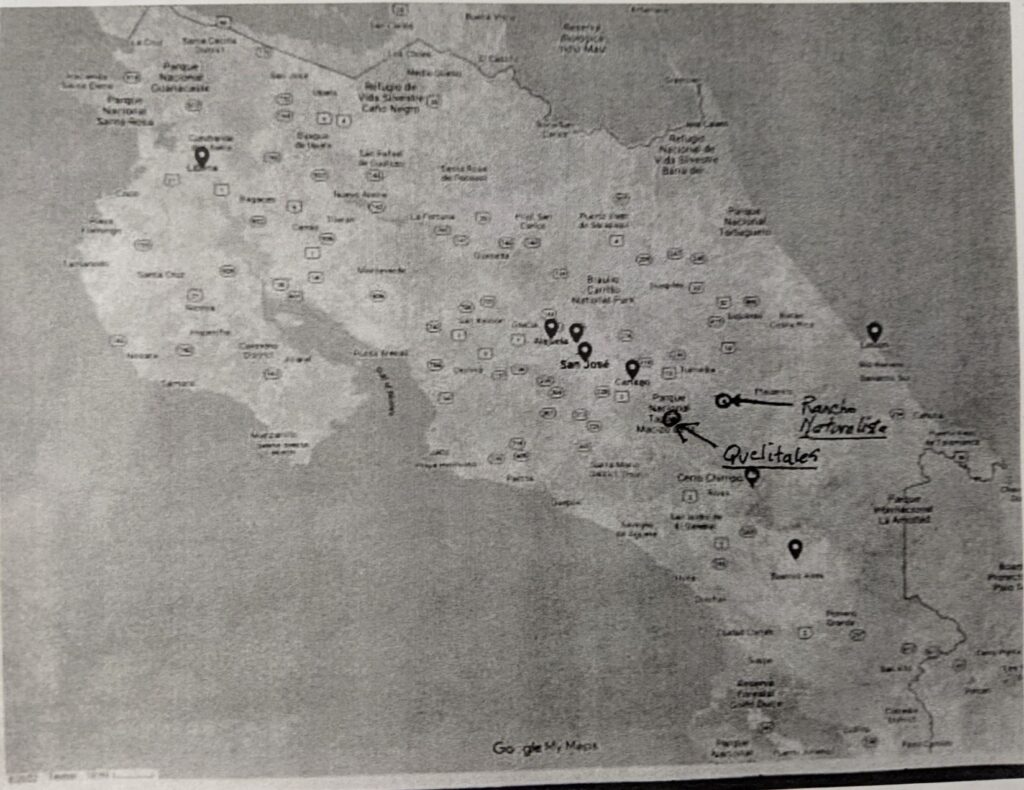
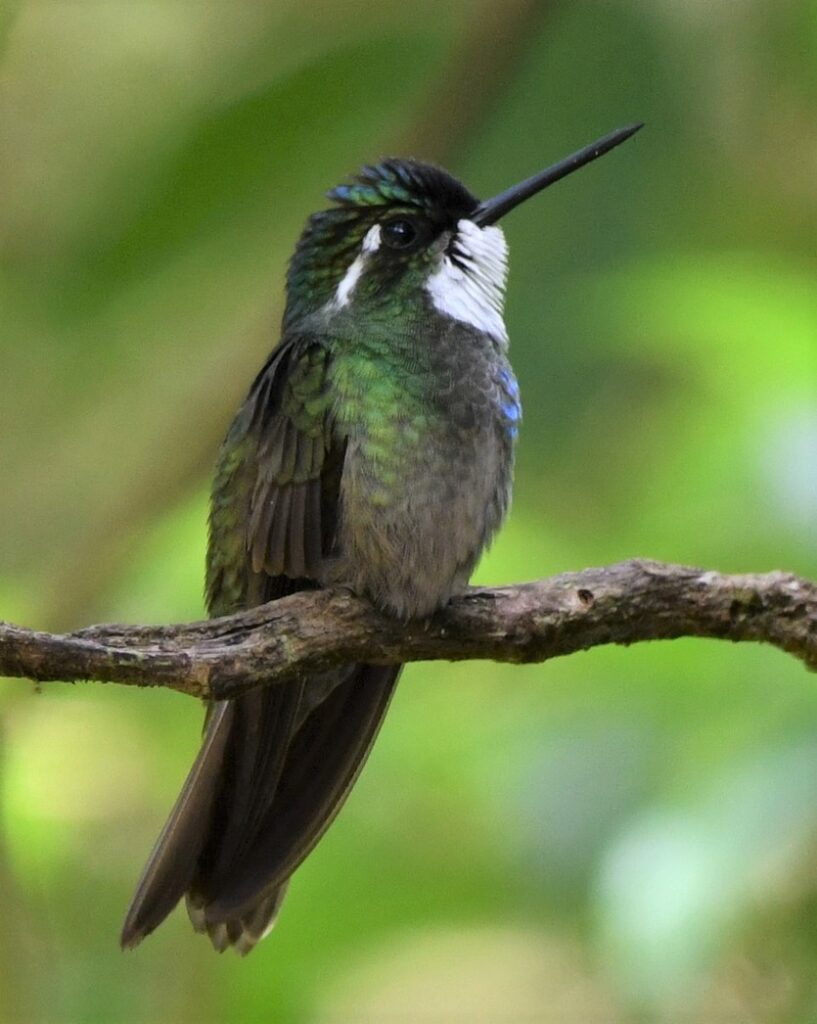
Don Jose Alvarez, the owner and resident birder of HQ, greeted me upon arrival, offering me a choice of three bungalow-style rooms (10 nights @ US $1,300, inclusive). All the rooms were surrounded by mature secondary forest and alive with birds. I chose the ‘Mariposa’ with a deck overlooking the waterfall, one of the central attractions of the property. This room was a five-minute walk to the main lodge and dining area, or to the waterfall and forest trailhead.
The dining area was open every day until late in the evening. Bird feeding stations, visible from the dining area, were maintained daily and attracted a variety of interesting species within photographic range. Delicious meals were prepared with fresh ingredients, i.e., local meat and produce, by request and without a fixed schedule. This allowed me the freedom to explore the area without having to return at specific times for meals. Don Jose, an internationally acclaimed chef, together with his friendly kitchen staff, easily accommodated my dietary preferences.
Don Jose and I drove into Ujarras one day to have a tire repaired on my rental Landcruiser, and found Cabani’s Ground-Sparrow in an adjacent coffee plantation. After the tire repair was completed, we drove to an urban park with mature trees, dedicated to the preservation of the 17th Century ruins of a Spanish Catholic church (Ruinas Ujarras).
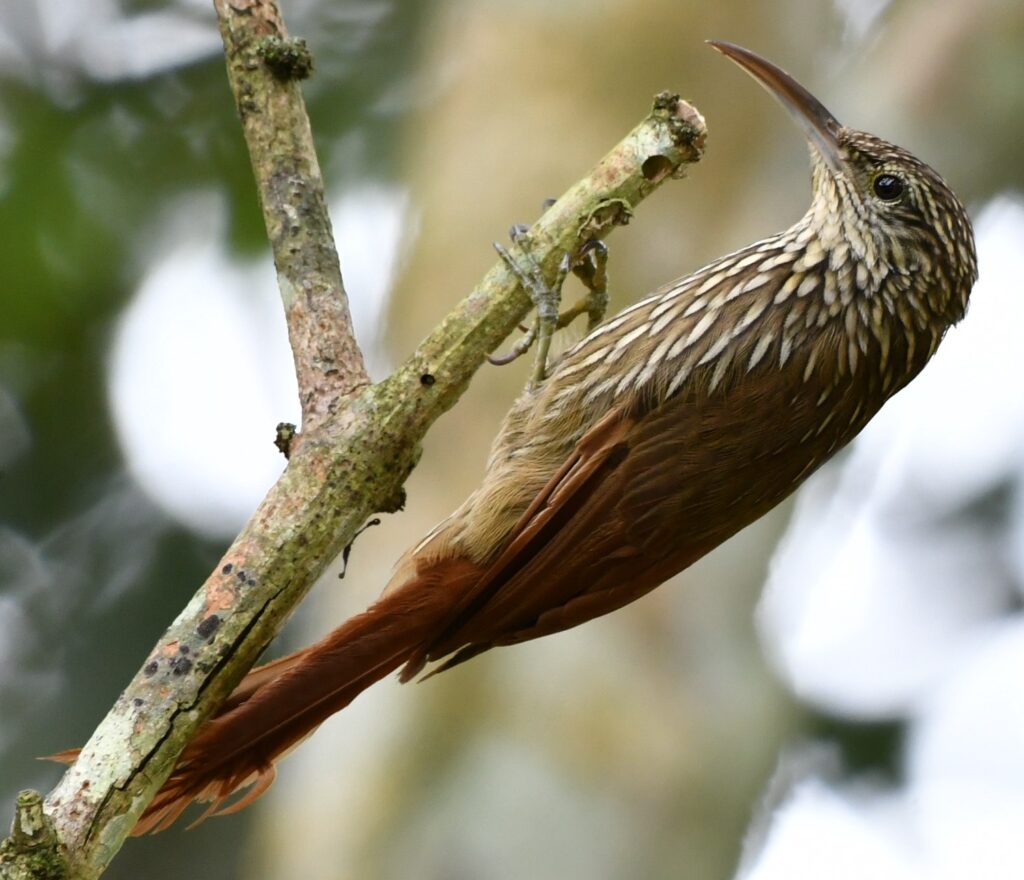
There we found an immature Orchard Oriole (uncommon) and Streak-headed Woodcreeper (common) among a few other species. This place looked like it might be better early in the morning than during the midday heat.
Our final stop was at an old, still active Catholic church in Orosi, where cloistered monks were singing ethereal Gregorian chants. Outside on the tiled roof of the church was a vocal and rather approachable Crimson-fronted Parakeet.
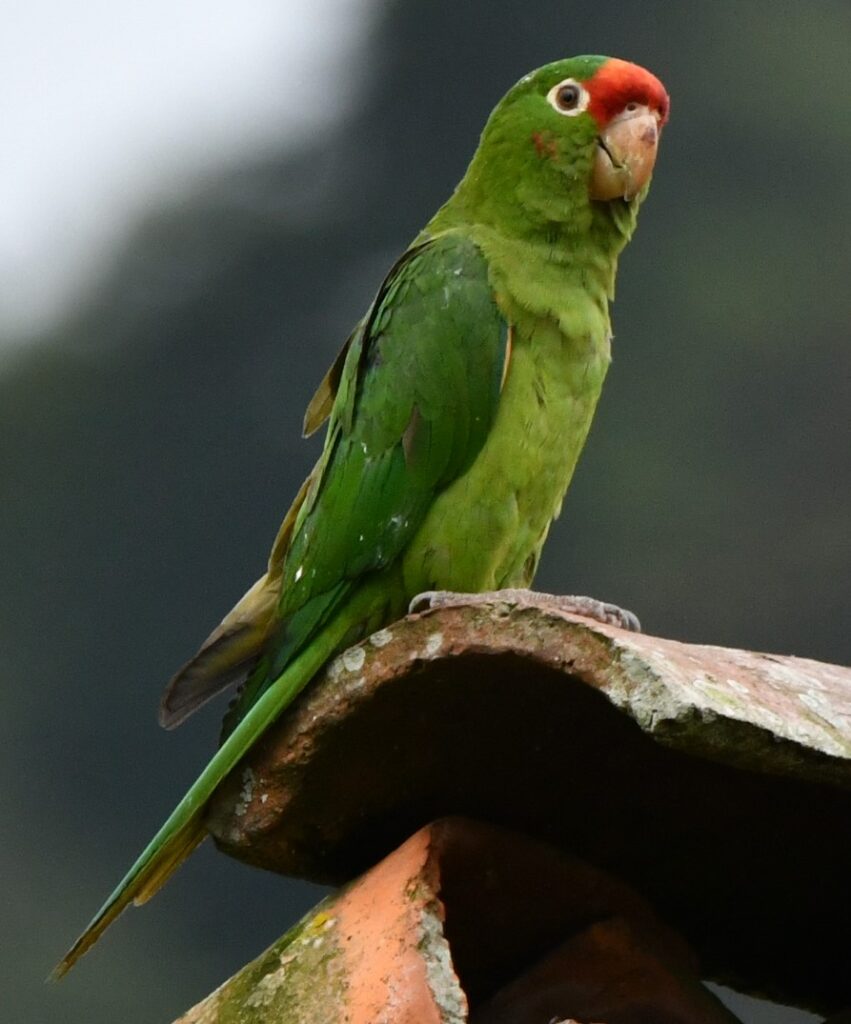
One of the highlights of my Costa Rica trip was meeting a couple from Yale University and the Peabody Museum, Ann and Rick Prum. Three days earlier, I had seen them briefly at Rancho Naturalista. Hotel Quelitales, Veragua Rainforest and La Laguna del Lagarto were also on their busy itinerary. Our schedules in Costa Rica converged at the above locations, giving us opportunities for birding and socializing.
Ann J. Prum, an accomplished videographer and filmmaker, spent many hours standing behind her camera and tripod, making a video of the Green-fronted Lancebill in Quelitales. This curious little hummingbird with an unusally long bill, appeared in the streamside vegetation early each morning, about half way from the top of the falls. The footage Ann was capturing would comprise one of several segments in a new natural history film featuring the hummingbirds of Costa Rica.
Dr. Richard Prum, curator of birds at the Yale Peabody Museum, and his wife, Ann, were keen on finding birds while in Costa Rica. I’m sure they ended the trip with an impressive list. Occasionally, we would be together, looking for birds along roadsides, in pastures, second-growth, forest edge and streams. It was soon clear that Rick had an encyclopedic recall of Latin bird names and a sophisticated understanding of avian evolution and systematics. His award-winning book, The Evolution of Beauty (2017) had been on my reading list. It now was at the top of that list. Rick and I had a number of brief yet informative conversations, dealing with some lively topics in Ornithology, e.g. correct pronunciation of Latin binomials; eBird junk science; phylogenetic vs. biological species, and a perennial favorite among ornithologists, the origin of the Galapagos finches (Darwin’s Finches).
Rick pointed out that Dr. David Steadman’s original hypothesis (1982), naming the Blue-black Grassquit (Volatinia jacarina) of Central and South America, a likely ancestor of Darwin’s Finches, based on morphology and behavior, which many biologists regarded as quite plausible, had since been challenged, based largely on molecular comparisons. Having done post-doctoral studies in avian paleontology at the US National Museum, Washington D.C., with the late Storrs L. Olson (1944-2021), and his associate, David Steadman, I was probably a bit biased in my initial view of this particular topic. Thanks to Rick’s update, I found that there had been a few more studies done on this subject since Steadman’s initial hypothesis was published.
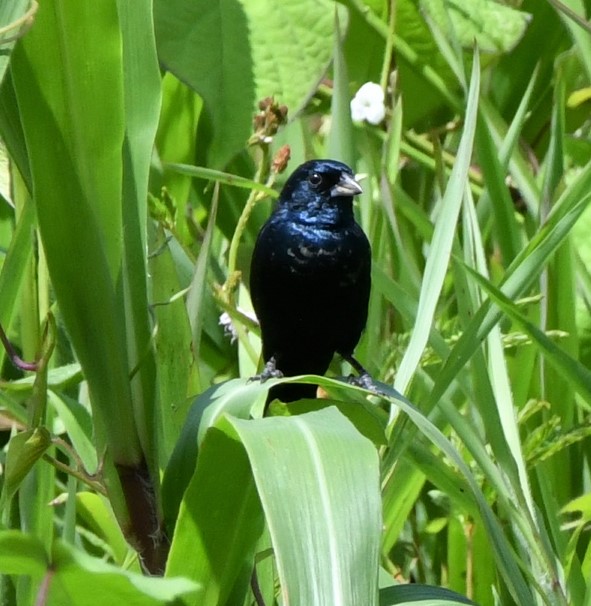
It now appears possible that the Galapagos finches may have had a different finch-type ancestor from western South America, e.g. the rather secretive, sedentary and polytypic, Dull-colored Grassquit (Asemospiza obscura). Apparently, the range of possibilties for the origin of Darwin’s Finches continues to expand, as the results of new studies, now largely in favor of molecular comparisons, are published.
Perhaps one of the greatest challenges for a biologist is simply to keep an open mind. We may fall in love with a hypothesis and defend it to the death, academically speaking. The penalty for being completely and utterly wrong in a formal scientific publication or presentation (technically, commiting a Type I or Type II error) can be a serious professional setback, i.e. marginalization or total exile from the scientific community, depending on the gravity of the error. Likewise, within the sport-birding community, led by The Cornell Laboratory of Ornithology (eBird), unsubstantiated reports of rare birds (e.g. Ivory-billed Woodpecker – presumed extinct since about 1940, then ‘rediscovered’ in 2004; incredibly, now, nearly two decades later without even a clear, unequivocal photo of the bird), though anecdotal, could result in the reporter (s) becoming nearly as scarce as the bird they claimed to have found.
In any case, criticism, especially from respected peers, can be devastating. In the early 1980’s, Charles Sibley and Jon Ahlquist stunned the ornithological community with a controversial revision of avian phylogenetics, based on their DNA-DNA hybridization studies. Since the classification of bird groups has been a subject of considerable scientific debate for decades, but had remained comparatively stable over that time period, Sibley and Ahlquist had stepped into the wheelhouse of not only the leading academics, but probably everyone who had ever owned a field guide to birds and who was familiar with the taxonomic sequence of bird orders and families, i.e. the presumed most ancient groups of related species listed first, most recently evolved, last.
The key word here is ‘presumed.’ Because trying to decipher bird evolutionary relationships, is rather like trying to solve a million-year-old mass murder case by interviewing the living and recently deceased descendants of the victims. Indeed, we can only cobble together what appears a plausible phylogeny using a combination of molecular comparisons, morphological, physiological, behavioral and biogeographical information, presenting a largely circumstantial, probabilistic, essentially speculative narrative. Even more troubling, is that hypotheses generated along these lines of investigation are largely untestable. How can we be certain, for example, that wagtails and pipits are more closely related to weaver finches than to any other group(s) of perching birds?
Here’s another questionable association emerging from Sibley & Ahlquist’s DNA-DNA hybridization studies: Mimic-thrushes (e.g. Northern Mockingbird, are a fairly well-defined New World group, predominately solitary, open cup-nesters with plain to dull-colored feathers) and Starlings (Old World, predominately gregarious, cavity-nesters; many with irridescent feathers and bare facial skin or wattles). These two, quite different passerine families, on multiple comparative levels, are now considered more closely related to each other than they are to any other passerine groups. Seriously? Yep. Following some rather harsh criticism (I witnessed multiple outbursts in the audience during a presentation of these findings at the American Ornithologist’s Union Centennial in New York City), and much to their credit as reputable scientists, Sibley and Ahlquist repeated their lab work and obtained the same findings. What key piece of the evolutionary puzzle is missing here? Could classification systems based solely on molecular studies be misleading? Absolutely. But again, a higher classification evolutionary narrative (i.e. cladistic hierarchial groupings above the living species level) is based largely on untestable hypotheses – a dynamic gray area of inquiry, perhaps more familiar to historians and sociologists than biologists, and if containing false or misleading information, I suppose could be forgiven as a Type III error (science fiction). Right or wrong, until the next breakthrough occurs in avian evolution and systematics, we go with what appears to be the best supported reasoning currently available.
In such speculative matters of ornithology, when even lex parsimoniae provides little relief and even less clarity from strongly opposing opinions among avian evolutionary biologists, I find it useful to recall the words of the late Zen master Suzuki Roshi, who once remarked, “In the beginner’s mind there are many possibilities. In the expert’s, there are few.” The more time I spend observing nature, the more I realize we really don’t understand even some of the most fundamental processes. And when it comes to molecular biology, which is existentially distant from avian community ecology, I am definitely a beginner with many questions, e.g. What about the proportionately large amount of introns ‘nonsense’ DNA known to occur in animal genomes? Could there be lingering bits and pieces of the genome tagging along through generations, confounding and misrepresenting the DNA melting point data; a plesiomorphy – similar introns of DNA in unrelated taxa? And if so, how much of contemporary avian phylogeny and systematics based on molecular comparisons is simply dead wrong? Is molecular evolution necessarily on the same schedule as biological speciation?
Thinking about these and other fundamental questions in biology, occupied much of my time while traveling in Costa Rica. There is nothing quite like a trip to the tropics to stimulate one’s curiosity about the living world. Sometimes I found myself reciting impossibly complex answers to basic questions a child might ask, like,”If there is so little primary forest remaining, why are there so many different kinds of birds here?” Or amused by my former student’s inquiries, e.g. “How much of this will be on the test?” At another moment, when jarred to my senses by a pothole in the roadway, I took a internationally comparative perspective of Costa Rica. Could there be a pattern or new insight here? What am I actually seeing? Some empirical observations appeared to contradict my academic training and a lifetime of field work in the tropics. For example, consider the enigmatic case of fragmented forests in Costa Rica.
A foundational concept in the field of Conservation Biology, some might even call it a ‘no brainer,’ is that cutting down forest and the resulting fragmentation of natural habitat, results in a dramatic decline in species diversity. I found this demonstrably true in bird communities where lowland rainforest had been replaced by Hevea brasiliensis plantations and suburban development bordering Kuala Lumpur, Malaysia. Yet, despite the widespread loss of contiguous forest in Costa Rica, e.g. the hills adjacent to Rancho Naturalista and Quelitales, a stunning diversity of bird life remains. True, apex predators and highly specialized forest dwellers, e.g. Harpy Eagle, Barred Hawk, Streak-breasted Treehunter and Middle American Leaftosser, may have declined and are holding on to limited ranges by the narrowest of ecological margins. But in many areas of Costa Rica, forest fragmentation appears to have had the opposite effect – i.e. enhancing avian diversity. How could that be true?
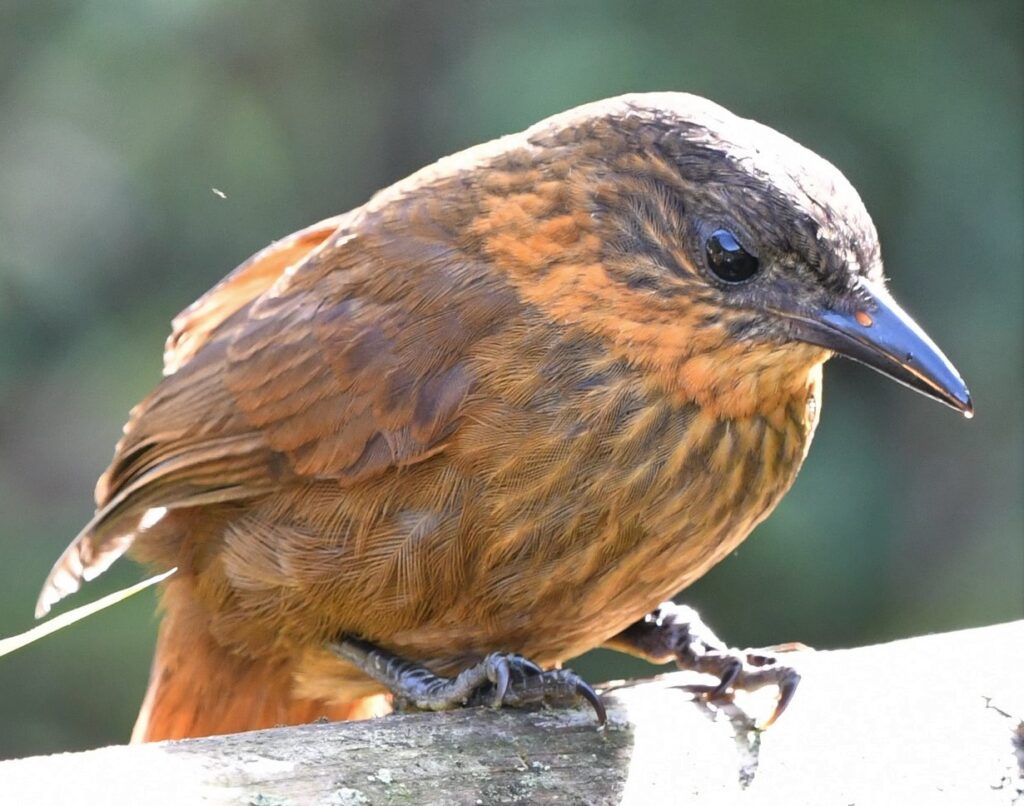
In the absence of pre-deforestation, baseline data, I can offer two possible explanations. One is simply that habitat fragmentation results in greater visibility of birds and thus an apparent high diversity. The second reason could be what ecologists refer to as the “edge effect.” That is, ecological productivity in a forest, for example, may be measureably greater at its edge, including clearings (natural and man-made) due to increased sunlight and resource availability. Both of those conditions could work synergistically to give the impression of high alpha and beta diversity – within and between areas, respectively.

Most biologists would probably agree that wholesale removal of forests ultimately decreases biodiversity, due to major disruptions of the soil and everything else dependent upon it. Erosion in the tropical highlands can lay waste to an area that has lost its protective watershed. Sadly, the destructive effects of erosion and flooding are visible nearly everywhere in Costa Rica. Landslides, some massive enough to take out an eighteen-wheeler, were common on mountain roads. In those areas, it was difficult to imagine how birds and other animals could survive such devastating habitat loss.
Natural Selection has long been operating in tropical forest ecosystems in ways we can scarcely comprehend. Complexity in these ecosystems probably includes resiliency and stability in the face of small-scale disturbances; behavioral and ecological adjustments have been genetically programmed in most species for an unknown measure of adaptability. The question remaining is: How much disturbance can a particular forest ecosystem endure without losing forever its essential living components?
Perhaps the answer is found in what we can observe in Costa Rica at this time – a dynamic, species-rich country, promising to continue as such, largely due to its popularity with foreign birders and eco-tourists. Or maybe we will see quite different ecoystems after another decade or so of deforestation, erosion, monoculture conversion and other large-scale modifications of Costa Rican forests.
Quelitales Annotated Bird List (September 21-30, 2021) Callyn Yorke
Weather during my visit in Quelitales and adjacent areas was frequently overcast to partly cloudy with mid-day and afternoon thundershowers. Air temperatures were about 15 to 24C; wind, predominately NE, 1-15 km/hr..
Explanation of Symbols
Locations: F50 = Finca Cinquenta (Elev. 1,450 m); HQ = Hotel Quelitales property and adjacent area, including, Rocas (Piedras) Blancas (RB) Village, access roads, pastures, homesteads, gardens, HQ main waterfall and adjacent hill forest trails (Elev. 1200-1350 m; OR = Orosi (1,050 m); UJ = Ujarras and Ruinas Ujarras (Elev. 1,014 m) (RU); Ubiq. = Ubiquitous, widespread in appropriate habitat.
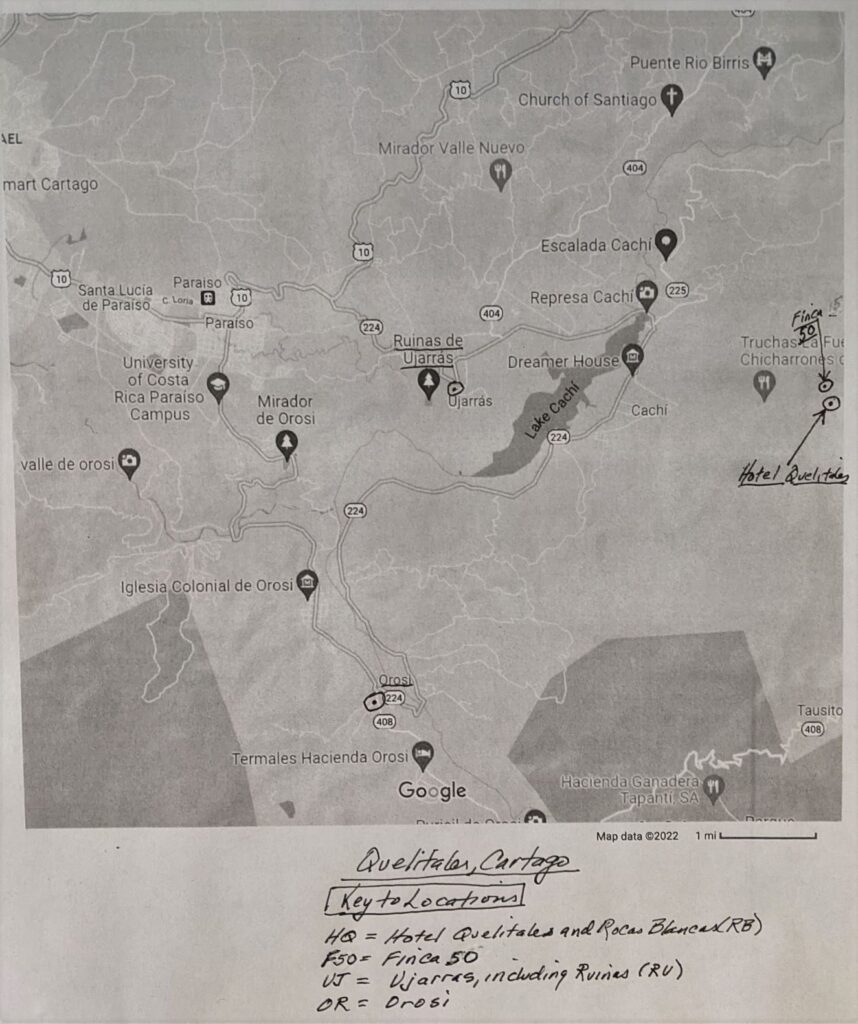
Abundance: Numbers following each species represent the maximum number of individuals found during a survey.
Frequency: C = Commonly found or expected to be found during all or most surveys; FC = Fairly commonly found in more than half of the surveys; UC = Uncommonly found in less than half of the surveys; R = Rarely found, i.e. only once during the surveys (Note: some areas, e.g. Ujarras and Orosi, were surveyed only once).
Plumage, sex, age (if known): alt = alternate, breeding plumage); bsc = basic, non-breeding plumage); trans = transitional i.e. molting into bsc or alt plumage; m = male; f = female; ad= adult; imm = immature.
Behavior, Position, etc.: agl = in flight, approximate height (m) above ground level; greg = gregarious; mid = middle height level, e.g. in trees, forest; msf = mixed species flock.
Systematics and Nomenclature follow Avibase and Clements (2021)
- Ruddy Ground Dove Columbina talpacoti 2 roadsides and clearings, UJ,
- White-tipped Dove Leptotila verreauxi 2 vocal, roaside second-growth, UJ
- White-winged Dove Zenaida asiatica 6 on roadside and edge of second-growth, UJ
- Squirrel Cuckoo Piaya cayana 1 subcanopy of garden and forest edge trees, HQ, FC
- Green Hermit Phaethornis guy 2 (m,f) at feeders briefly next to waterfall, HQ, FC
- Green-fronted Lancebill Doryfera ludovicea 2 (m,f) single and paired; aerial flycatching when sallying from low perch in vegetation alongside the main waterfall from the lower reaches to about half way to the top of the falls; fairly regular at dawn and dusk, HQ, FC
- Brown Violetear Colibri delphinae 2 often at edge of flowering verbena adjacent to waterfall parking area, F50, HQ, FC
- Lesser Violetear Colibri cyanotus 12 loosely gregarious in verbena patches, HQ, C
- Green-crowned Brilliant Heliodoxa jacula 2 (m,f) frequent at feeders and around flowering verbena shrubs, HQ, FC
- White-bellied Mountain-gem Lampornis hemileucus 1 around flowering verbena, HQ, UC
- Purple-throated Mountain-gem Lampornis calolaemus 1 at feeder and near verbena, HQ, UC
- Scintillant Hummingbird Selasphorus scintilla 1 around flowering verbena, F50
- Violet Sabrewing Campylopterus hemileucurus 10 gregarious, aggressively dominant at feeders and flowering verbena, HQ, C
- Coppery-headed Emerald Microchera cupreiceps 1 around flowering verbena, HQ, UC
- Black-bellied Hummingbird Eupherusa nigriventris 6 (m,f) loosely gregarious while at verbena flowers, F50, HQ, UC
- Rufous-tailed Hummingbird Amazilia tzacatl 4 (m,f) foraging on a variety of garden flowers, ubiq., C
- Cattle Egret Bubulcus ibis 1 flying over field, OR
- Black Vulture Coragyps atratus 10 edges of villages and towns, ubiq., C
- Turkey Vulture Cathartes aura 1 flying over pastures at edge of secondary forest, RB
- Barred Hawk Morphnarchus princeps 1 perched and sunning for at least 20-minutes and approachable for photos in roadside tree canopy; also seen hunting low, going to ground on hillside, RB, HQ, UC
- Red-tailed Hawk Buteo jamaicensis 1 flying west, down the valley, RB, HQ, UC
- Prong-billed Barbet Semnornis frantzii 1 subcanopy of secondary forest along trail, HQ, UC
- Keel-billed Toucan Ramphastos sulfuratus 2 vocal, flying forest edge, HQ, FC
- Hoffmann’s Woodpecker Melanerpes hoffmanni 2 (m,f) vocal, forest edge and garden trees, HQ, UC
- Pale-billed Woodpecker Campephilus guatemalensis 1 (m) flying between trees at edge of pasture and forest, HQ, R
- Golden-olive Woodpecker Colaptes rubiginosus 1 forest edge, HQ, UC
- Crimson-fronted Parakeet Psittacara finschi 10 vocal, gregarious, ubiq., FC
- Russet Antshrike Thamnistes anabatinus 1 in subcanopy, hill forest trail, HQ, R
- Scaled Antpitta Grallaria guatemalensis 2 shy and retiring to dense cover on trail next to waterfall, HQ, FC
- Middle American Leaftosser Sclerurus mexicanus 1 on trail near waterfall, HQ, UC
- Spotted Woodcreeper Xiphorhynchus erythropygius 1 in middle level, forest trail, HQ, R
- Streak-breasted Treehunter Thripadectes rufobrunneus 1 found by one of the HQ kitchen staff after the bird had a collision with a dining room window, knocking itself senseless for a few moments, then flying away HQ, R
- Streak-headed Woodcreeper Lepidocolaptes souleyetii 1 vocal, forest edge and garden trees, HQ, UC
- Black & White Becard Pachyramphus albogriseus 1 subcanopy on forest trail, HQ, R
- White-throated Spadebill Platyrinchus mystaceus 1 middle level, forest trail, HQ, R
- Olive-striped Flycatcher Mionectes olivaceus 1 daily on same perch in subcanopy of aa garden tree, HQ, FC
- Slaty-capped Flycatcher Leptopogon superciliaris 1 in garden trees, HQ, R
- Common Tody-Flycatcher Todirostrum cinereum 2 garden trees and shrubs, HQ, FC
- Yellow-bellied Elaenia Elaenia flavogaster 1 edge of garden and second-growth, HQ, UC
- Mistletoe Tyrannulet Zimmerius parvus 1 upper-mid level, forest edge, HQ, UC
- Tufted Flycatcher Mitrephanes phaeocercus 1 forest edge, subcanopy HQ, UC
- Olive-sided Flycatcher Contopus cooperi 1 canopy perch in isolated trees at edge of pasture, open areas, RB, HQ, FC
- Western Wood Pewee Contopus sordidulus 1 second-growth at edge of clearings, pasture, HQ, UC
- Eastern Wood Pewee Contopus virens 2 second-growth and fence lines, roadside, pasture, RB, HQ, FC
- Tropical Pewee Contopus cinereus 2 low perch at edge of pasture, roadside fence lines, small trees, RB, HQ, FC
- Black Phoebe Sayornis nigricans 1 low perch, mounds, fence lines at edge of wet pasture and second-growth, RB, HQ, FC
- Dusky-capped Flycatcher Myiarchus tuberculifer 1 edge of garden near feeder, HQ, UC
- Great Kiskadee Pitangus sulphuratus 5 vocal, loosely gregarious, on utiity lines and trees at edge of roadways, pasture, second-growth, ubiq. C
- Social Flycatcher Myiozetetes similis 3 vocal, gregarious, on utility line and trees at edge of roadways, clearings, gardens and second-growth, ubiq. C
- Gray-capped Flycatcher Myiozetetes granadens 1 mid to upper mid-level of trees at edge of second-growth, HQ, UC
- Tropical Kingbird Tyrannus melancholicus 3, loosely gregarious, utility lines and fences, trees in open country, edge of second-growth, gardens, ubiq. C‘
- Lesser Greenlet Pachysylvia decurtata 1 mid-upper level, forest edge, HQ, R
- Red-eyed Vireo Vireo olivaceus 3, subcanopy and canopy of garden and forest trees, ubiq., C
- Philadelphia Vireo Vireo philadelphicus 1 middle to upper-mid level garden and forest edge, HQ, R
- Brown Jay Psilorhinus morio 6, vocal, gregarious, garden, second-growth and forest, UJ, HQ, C
- Blue & White Swallow Pygochelidon cyanoleuca 6 gregarious, flying 10-30m over pasture and open areas, RB, HQ, C
- Southern House Wren Troglodytes musculus 2 vocal (song similar to NOHW (T. aedon) but shorter in duration), secretive, staying low in garden, second-growth, ubiq. C
- Ochraceous Wren Troglodytes ochraceus 1 in shady understory of tangled vines under large tree, forest edge, HQ, UC
- White-breasted Wood-Wren Henichorina leucosticta 1 vocal, forest edge, second-growth, HQ, UC
- Swainson’s Thrush Catharus ustulatus 3 on ground and in trees, garden, second-growth, forest edge, ubiq, C
- Clay-colored Thrush Turdus grayi 6 on ground, garden, second-growth, edge of pasture, forest, ubiq. C
- Long-tailed Silky-flycatcher Ptilogonys caudatus 1 garden tree subcanpy, HQ, R
- Yellow-throated Euphonia Euphonia hirundinacea 2 (m,f) canopy of garden trees, feeders, second-growth trees, RB, HQ, C
- Tawny-capped Euphonia Euphonia anneae 2 edge of second-growth trees, garden, HQ, UC
- Common Chlorospingus Chlorospingus flavopectus 2 active at low to mid-levels of roadside second-growth, RB, F50
- Sooty-faced Finch Arremon crassirostris 2 on trail and around seed-feeder near waterfall, HQ, FC
- Rufous-collared Sparrow Zonotrichia capensis 5 gregarious (pairs) on ground at edge of clearings and second-growth, gardens, ubiq. C
- White-eared Ground-Sparrow Melozone leucotis 3 on ground at edge of pond, second-growth, gardens, feeder, HQ, FC
- Cabani’s Ground-Sparrow Melozone cabanisi 1 secretive and shy, on ground and staying mostly concealed beneath coffee plants, UJ
- White-naped Brushfinch Atlaptes albinucha 2 in garden shrubs, around feeder briefly, HQ, FC
- Chestnut-headed Oropendola Psarocolius wagleri 6 vocal, gregarious, moving quickly through the subcanopy of second-growth and forest edge, HQ, UC
- Montezuma Oropendola Psarocolius montezuma 4 (m,f) vocal, gregarious (pairs), second-growth, forest edge, garden, feeders, RB, HQ, FC
- Orchard Oriole Icterus spurius 1 (f – imm.) active in subcanopy of large parkland tree, RU
- Baltimore Oriole Icterus galbula 2 (m,f) active at mid-upper levels of second-growth, forest edge, garden, feeder, HQ, FC
- Melodius Blackbird Dives dives 2 (m) edge of pasture, garden, feeders, second-growth, forest, HQ, UC
- Great-tailed Grackle Quiscalus mexicanus 12 (m,f) vocal, gregarious, on ground in towns and edges of clearings, pasture, parks, ubiq. C
- Louisiana Waterthrush Parkesia motacilla 2 on ground at edge of stream, waterfall, driveway, roadside drainage, ubiq, C
- Black & White Warbler Mniotilta varia 2 (m,f) often in msf with other warblers, subcanopy limbs, second-growth, forest edge, HQ, C
- Tropical Parula Setophaga pitiayumi 1 in msf with other warblers and tanagers, mid to upper levels, second-growth, forest edge, HQ, FC
- Blackburnian Warbler Setophaga fusca 4 (m,f) in msf with other warblers and tanagers, mid to upper levels, second-growth, forest edge HQ, C
- Canada Warbler Cardellina canadensis 2 (m) subcanopy of garden and forest edge, HQ, FC
- Slate-throated Redstart Myioborus miniatus 1 (m) mid-upper level of forest edge, F50
- Scarlet-rumped Tanager Ramphocelus passerina 6 (m,f) gregarious (pairs) on ground, at feeders, second-growth, forest edge, RB, HQ, C
- Blue-gray Tanager Thraupis episcopus 2 subcanopy, second-growth, gardens, towns, ubiq., C
- Palm Tanager Thraupis palmarum 2 at feeders daily, gardens, second-growth and forest edge, ubiq. C
- Golden-hooded Tanager Stilpnia larvata 2 (m,f) in msf with other tanagers, REVI, warblers, in subcanopy, second-growth, garden, forest edge, HQ, FC
- Bay-headed Tanager Tangara gyrola 2 (m,f) pairs in subcanopy of forest edge, garden. second-growth, msf with warblers, REVI, HQ, FC
- Silver-throated Tanager Tangara icterocephala 1 in msf with other tanagers, subcanopy, second-growth and forest edge, HQ, UC
- Scarlet-thighed Dacnis Dacnis venusta 2 (m,f) at feeders, mid-upper levlel in second-growth and garden trees, HQ, FC
- Green Honeycreeper Chlorophanes spiza 1 (m) at feeder, garden, second-growth, HQ, FC
- Slaty Flowerpiercer Diglossa plumbea 2 (m,f) a pair foraging separately in a flowering verbena hedge next to the top hut, F50 R
- Variable Seedeater Sporophylla corvina 4 (m,f) gregarious, roadside ruderal, pasture, edge of second-growth, ubiq., FC
- Bananaquit Coereba flaveola 2 gardens, second-growth, feeders, RB, F50, HQ, C
- Yellow-faced Grassquit Tiaris olivaceus 2 gregarious (pairs) in pasture, edge of second-growth, roadside ruderal, RB, HQ, FC
- Buff-throated Saltator Saltator maximus 3 gregarious (pairs) second-growth, gardens parks, ubiq. C
- Black-headed Saltator Saltator atriceps 4 gregarious in second-growth, UJ
_____________________________________________________________________________________________
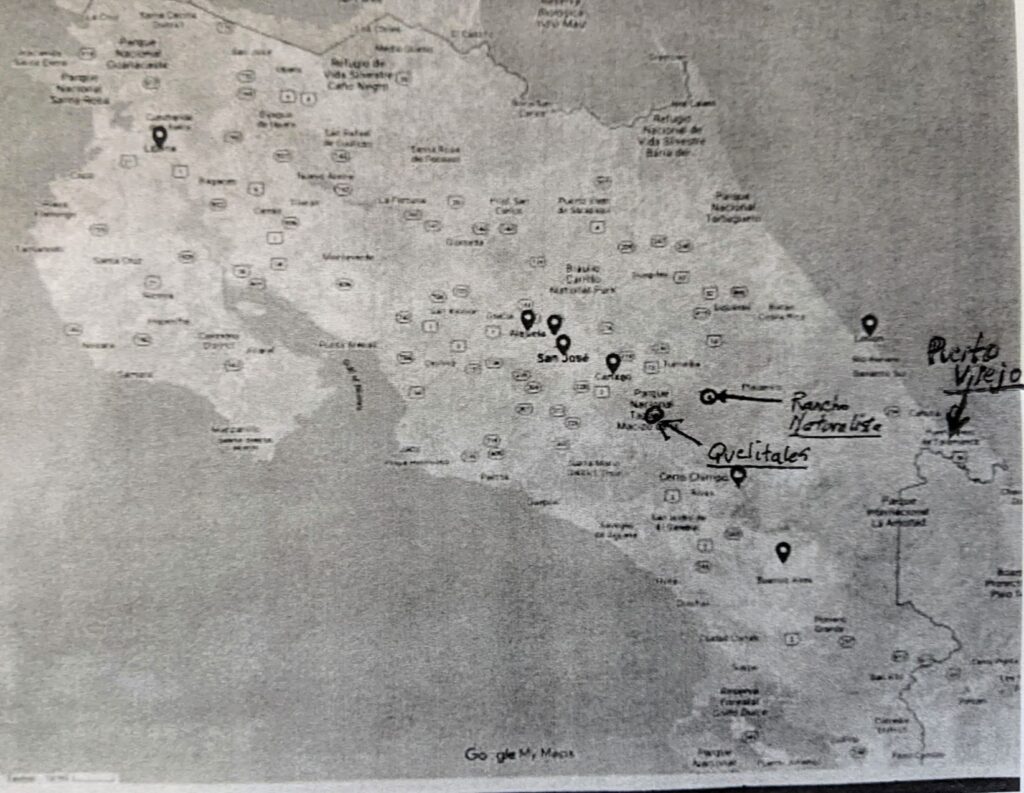
Cocles-Puerto Viejo, Limon Province, Costa Rica (1- 14 October, 2021) Callyn Yorke
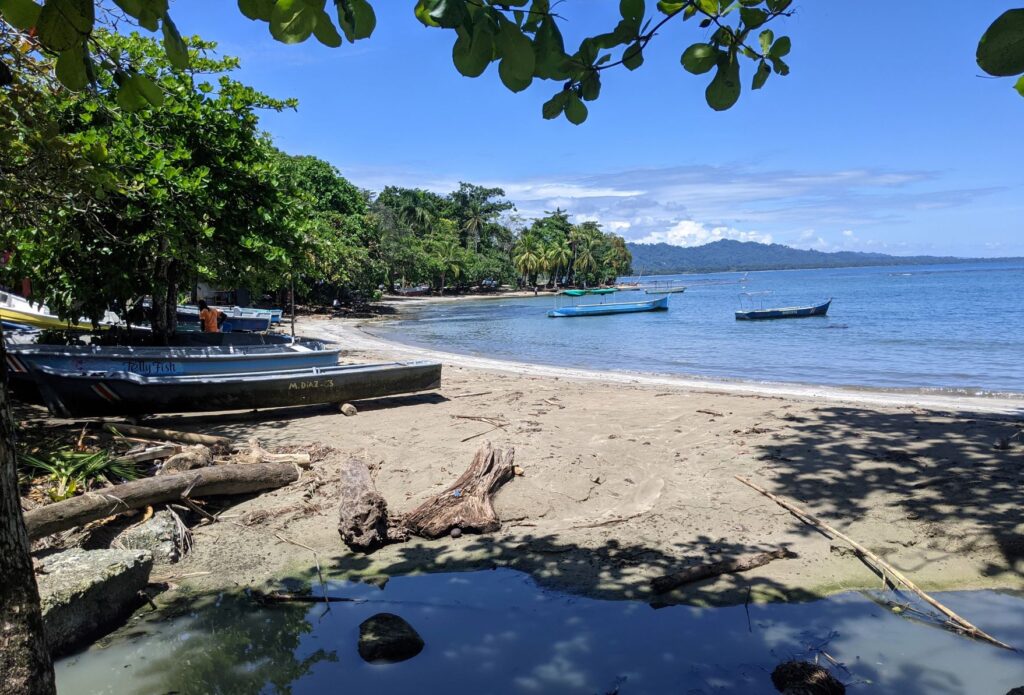
There was a fairly abrupt change in temperature and humidity as I drove eastward from the central highlands down to the coast of Limon Province. South of the turnoff to Limon the air became heavy and warm; cumulus clouds forming offshore foretold a cracking good thunderstorm by the time of my arrival in Cocles. Heavy afternoon and evening showers were frequent during my two-week stay. And this was the ‘dry’ season on the Caribbean side of Costa Rica. Happily, aside from relatively brief thundershowers, the weather before noon was fine for outdoor exploration. Rainy afternoons were best for staying indoors and doing artwork.

There were sections along the main highway south, between Puerto Viejo and Playa Manzanillo, with stands of very tall rainforest trees; a closed-canopy lowland forest was particularly well developed along Paraiso Road, connecting Cocles with HWY 36, the main route to Rio Sixaola and Playa Gandoca, forming the border with Panama. Those areas were accessible by car and essentially required several hours for even cursory bird surveys. Most of my time was spent in Cocles, surveying on foot from the intersection of HWY 256 and Ole Caribe Rd. in the neighborhood of La Paz Del Caribe and Bugabutik Resort.
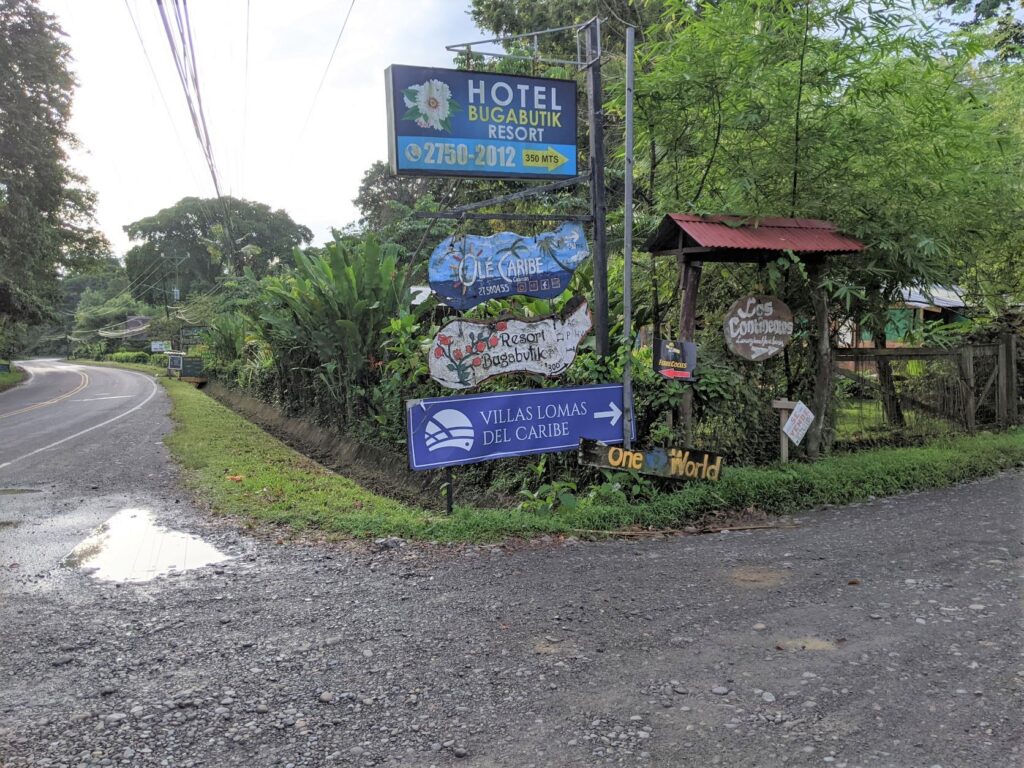
The first ten nights were spent at the delightful little resort, La Paz Del Caribe (LPDC), owned and operated by a friendly Canadian couple. It certainly wasn’t the least expensive lodging in the area ($150/night, including breakfast) though the facilities, services and food were superior. For doing artwork, Wade kindly installed a table, chair and lamp in my room. LPDC had been fully booked and for three unscheduled extra days I relocated to the rustic, somewhat dated, Bugabutik Resort ($75/night, including breakfast), which allowed me to continue surveying the same neighborhood each morning. This area, mainly along Ole Caribe Rd., turned out to be perfect for my daily bird surveys, which included patches of mature rain forest, gardens with fruiting trees, weedy vacant lots, and a palm-fringed beach overlooking the stunning blue-green waters of the Caribbean.
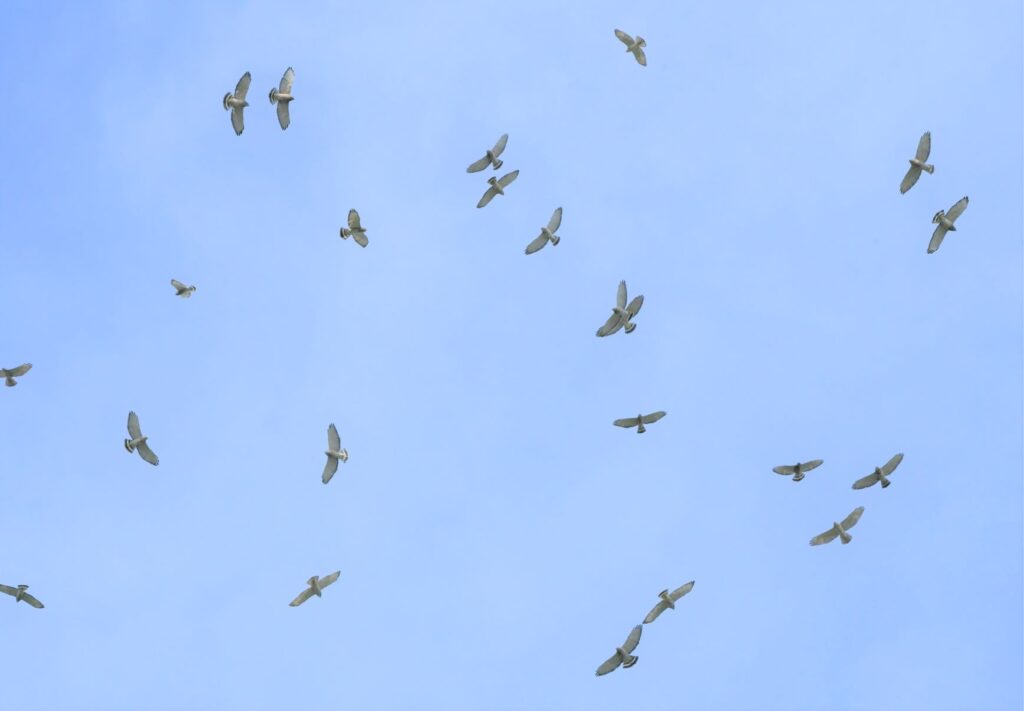
The place was convenient and productive for birding. Not only was there a surprising diversity of resident birds, including Purple-throated Fruitcrow (a lifer for me), the area was directly within southbound migratory route for multitudes of Cliff Swallows, Eastern Kingbirds and Broad-winged Hawks. And many of these migratory waves, often with a mixture of different species, could be seen from the breakfast table each morning at LPDC.
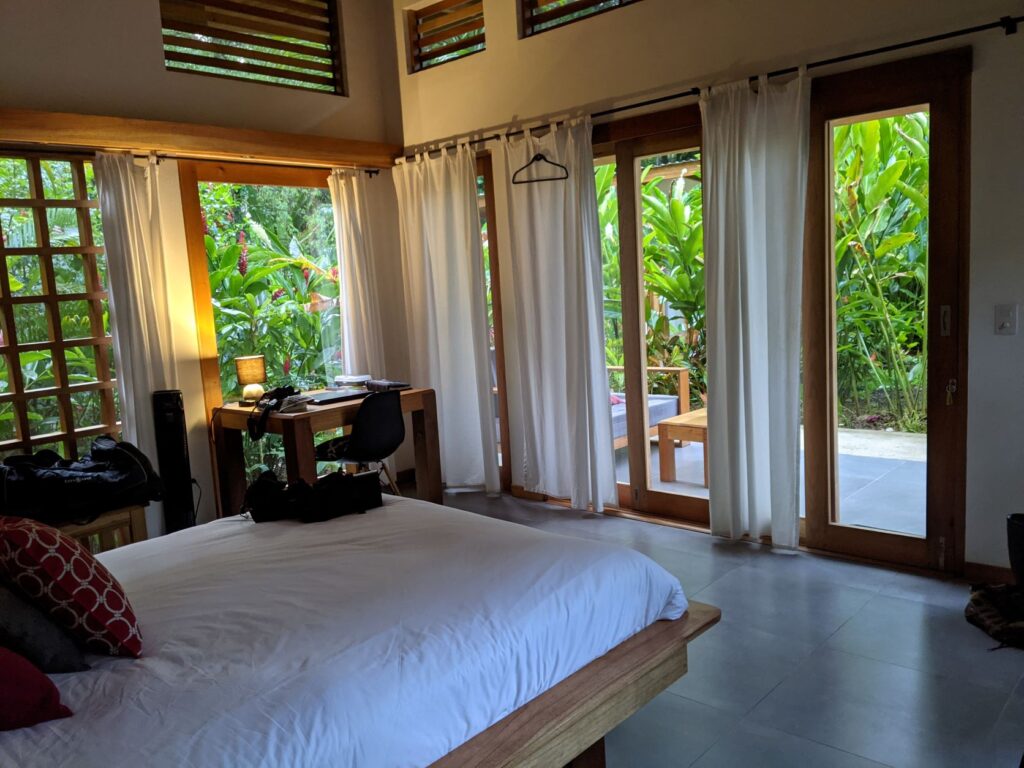
The LPDC owners, Wade and Laurie, were gracious hosts. They quickly caught on to my routine of an early bird-walk in the neighborhood before breakfast. When it became clear to me that most of the birds I was seeing along Ole Caribe Rd. frequented the LPDC garden, we discussed a plan to construct a bird feeder. I made a simple sketch of an elevated fruit (banana) feeder attached to a tall garden tree. Materials were acquired and construction began soon thereafter. Wade and his helper had nearly completed the project by the time I checked out of the lodge. I’m awaiting an update on the results of the new feeding station at LPDC. My guess is that a few of the resident birds, e.g. Yellow-throated Toucan, Collared Aracari and possibly Purple-throated Fruitcrow, would be regular visitors to the feeder.
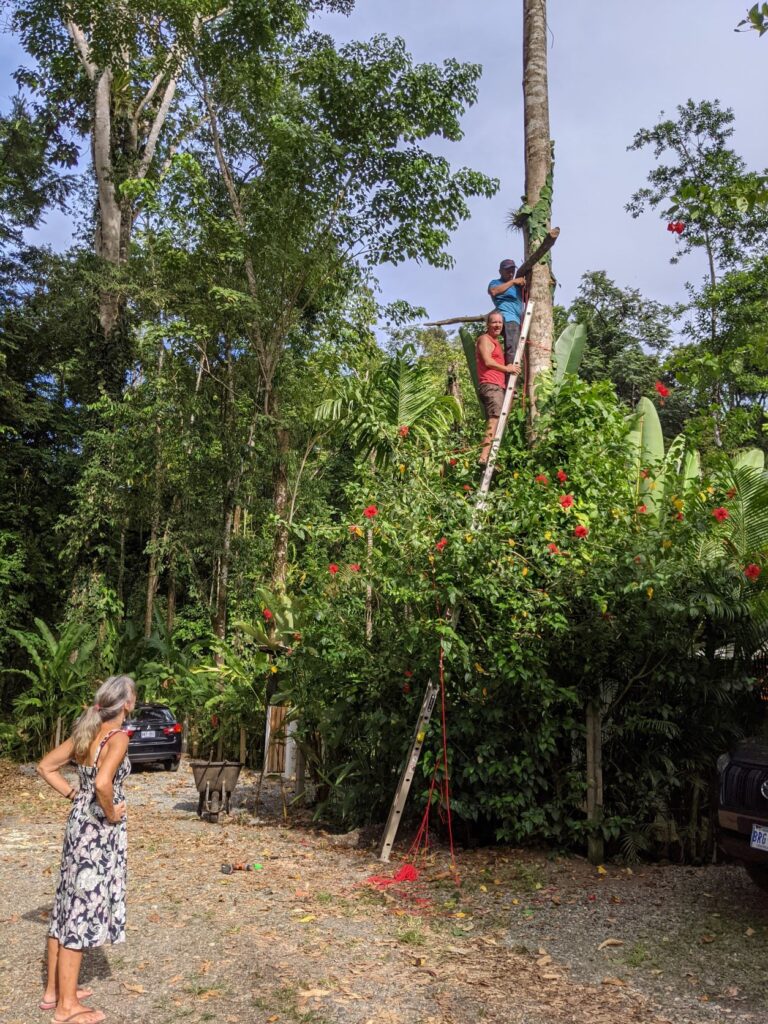
Nearby LPDC was a popular tourist trap called the Jaguar Rescue Center. I visited it once and found the place overpriced and underwhelming. There were no jaguars and the birds were flapping about and vocalizing in terribly cramped quarters. When I inquired if it would be possible to photograph some of their captive reptiles, a rather frazzled young docent said that wasn’t ordinarily possible but if I were to make a sizeable ($$) donation to the facility, my request might be considered. Really? I might have favored making a donation to have the entire facility demolished and returned to native forest.
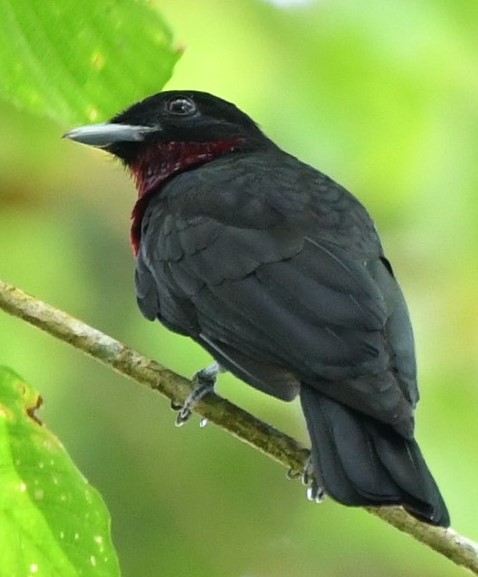
Fortunately, I hadn’t wasted my time coming to the jaguar-less rescue center. A potholed road in front of the facility led to an interesting birding area that I surveyed on foot. An immature Purple-throated Fruitcrow was being fed by two adults in the forest subcanopy. Nearby, a vocal flock of Chestnut-headed Oropendola, normally shy and retiring, allowed my close approach as the birds fed on inflorescences and fruits of a garden shrub.

Other areas for birding and exploration required a bit of drive-time. One of the best was Paraiso Rd. connecting Cocles with HWY 36 – the main route southward into Panama. Along Paraiso Rd., were several extensive tracts of mature, closed-canopy, lowland rainforest, rural homesteads, pastures, streams and marshes. The diversity of habitats supported a variety of birds, including a lifer, Little Tinamou, seen at close range when it ran across a side road. One morning I continued westward and south to Rio Sixaola and Playa Gandoca at the Panamanian border.

The drive to Playa Gondoca was fun. Turning east off HWY 36 at Rio Sixaola, a gravel road traverses a huge banana plantation with occasional overhead rail crossings. One of the crossings temporarily blocked the road with a lowered rail, which a few minutes later would be used by a banana caravan traveling to the loading dock. I had just been listening to Harry Belafonte’s (1957), ‘Day -O‘ on the car sound system with a Blue-tooth Spotify connection to my cell phone. Perfect.
When I reached the end of the plantation road, I was staring at heavy surf pounding Playa Gandoca. The regional maps show Playa Gandoca as part of the Gandoca-Manzanillo National Forest Reserve. Evidently, the adjacent banana plantation was ‘grandfathered in’ when the area was designated as a nature reserve in 1985. The area is ecologically significant, in that it contains the only Red Mangrove forest in Costa Rica; Harpy Eagles have reportedly occurred there.
Upon arrival at Playa Gandoca, at 1100 hrs, Tuesday, 5 October, I was apparently the only visitor. Located about a two-hour drive from Puerto Viejo, this was perhaps the most remote beach in the region. With the car locked in what could be the perfect place for a break-in, I walked south about 2 km, along a shoreline cluttered with driftwood, terminating at the mouth of the Rio Sixaola. Although there was a mature mangrove forest bordering the shore the entire way, I found very little birdlife there. A few waterbirds awaited me at the river mouth, e.g. Tricolored Heron, Black-bellied Plover and Ruddy Turnstone, and that was about it. The mid-day heat and incoming tide encouraged me to return to the car and call it a day at Playa Gandoca. When I got back to my car, a couple of village kids were playing in the breakers at the main beach.

Just a few km north of Cocles was a popular surf break. I had driven past it a few times en route to Puerto Viejo. One day I stopped, rented a longboard on the beach and spent an hour showing off to the local Rastafarians. I’m sure they were impressed. Out of about ten attempts to catch a wave, I got only one and rode it awkwardly for about five seconds. So much for my surfing safari in Costa Rica. Oh well. Maybe the conditions would be better next time. Besides, I was starving and it was lunchtime in Puerto Viejo.
Holy mackerel, despite the traffic congestion, construction noise and smell of raw sewage, the scenic little town of Puerto Viejo had decent restaurants and an excellent ice cream parlor overlooking the sea. I looked forward to birding there for an hour or so each time I came to town.

Before and after a meal, I usually walked along the shore and down side-streets. A fairly good diversity of birds hid in the weedy vacant lots, palms, overgrown gardens and a degraded mangrove estuary at the north end of town. Magnificent Frigatebirds and Brown Pelicans flew low circles around the bay where fishermen brought in their daily catch. There were some surprises, e.g. a Brown Noddy (rare on the Caribbean side of CR) was perched on a stump near shore. A Gray-cowled Woodrail (supposedly out of its normal range) was seen well in a drainage ditch and a pair of House Sparrow chirped in a weedy vacant lot (new for my trip list).
Wade, a Canadian ex-pat, ex-logger, now ardent consevationist and owner of LPDC, was my travel companion one Sunday. We drove to a couple of popular beaches in Cocles and then out on Paraiso Rd. to look at a new housing development. I didn’t see many birds in during our mid-day excursion, though Wade’s historical narrative was informative and insightful. Eden Beach, for example, had a remnant swamp forest (a very scarce habitat in Costa Rica), but was under some pressure from developers, not to mention hundreds of party-goers on weekends. By contrast, two European developers of a new housing tract in the Paraiso Rd. area, had avoided cutting down most of the rainforest trees in an effort to preserve the ecological integrity of the area. Wade mentioned that there was a local group of politically active conservationists who had been fighting various development proposals with some success, at least temporarily. He said that just obtaining basic utilities for residents, such as potable water, was an uphill battle with the local government; corruption was reportedly widespread.
My overall impression of the Puerto Viejo area was an uneasy mood of enchantment and disenchantment. A surprising and delightful diversity of birds and other wildlife clung to remnants of what once was one of richest lowland ecosystems in Central America. Toucans, macaws, tanagers, monkeys, sloths, anteaters and agoutis were conspicuous in towns, villages and gardens. I enjoyed staying at Wade and Laurie’s La Paz Del Caribe; it was tucked away on a relatively quiet and undisturbed side road with abundant birdlife in the immediate vicinity. On the other hand, traffic congestion in the town of Puerto Viejo, pollution, poverty, pitbulls, prostitution, drug and alcohol abuse, absence of law enforcement – all in sync with Reggae and hard-rock music on loudspeakers, was mind-numbing. Chaos and loud music was a convenient disguise for essentially an uninteresting, drive-through border town. If everyone was happy, dancing and celebrating, that would be one thing. Instead, the atmosphere was one beneath a dark cloud of desperation and hopelessness among residents, shop owners and handicraft workers; almost apocalyptic. It seemed as though the locals were resigned to an underlying belief that, no matter what they did, their life situation would never improve.
The pandemic had already run its course here, at least as far the government was concerned. Special medical insurance for vaccinated visitors was no longer required in Costa Rica. Wearing face coverings and Covid-19 protocol was optional. Tourism was booming. Puerto Viejo hosted busloads of backpackers, many presumably in transit to and from Panama; wealthy couples and families stayed for a week or so at luxury resorts. There was money being spent. Big money. Yet many locals appeared paralyzed by discontent.
The disparity between the haves and have-nots was nowhere more pronounced in Costa Rica than in Puerto Viejo. Perhaps the only thing mercifully missing was a city-sized cruise ship in the harbor. I’m sure the concept of blasting a deep water channel through the coral reef hadn’t escaped the imaginations of developers. It was at times difficult to ignore the fact that as a camera-toting tourist, I was probably more a part of a socioeconomic problem than part of a solution. Staring through a binocular into the trees above dilapidated houses and waving to locals smoking dope on the beach, seemed a convenient way to escape the reality of the everyday life here. Even with my rudimentary Spanish language skills, their world was utterly foreign to me. I tried my best to melt into the social landscape, though I could take Puerto Viejo only in small, daily doses, then hastened a retreat to the pleasant sanctuary of La Paz Del Caribe.
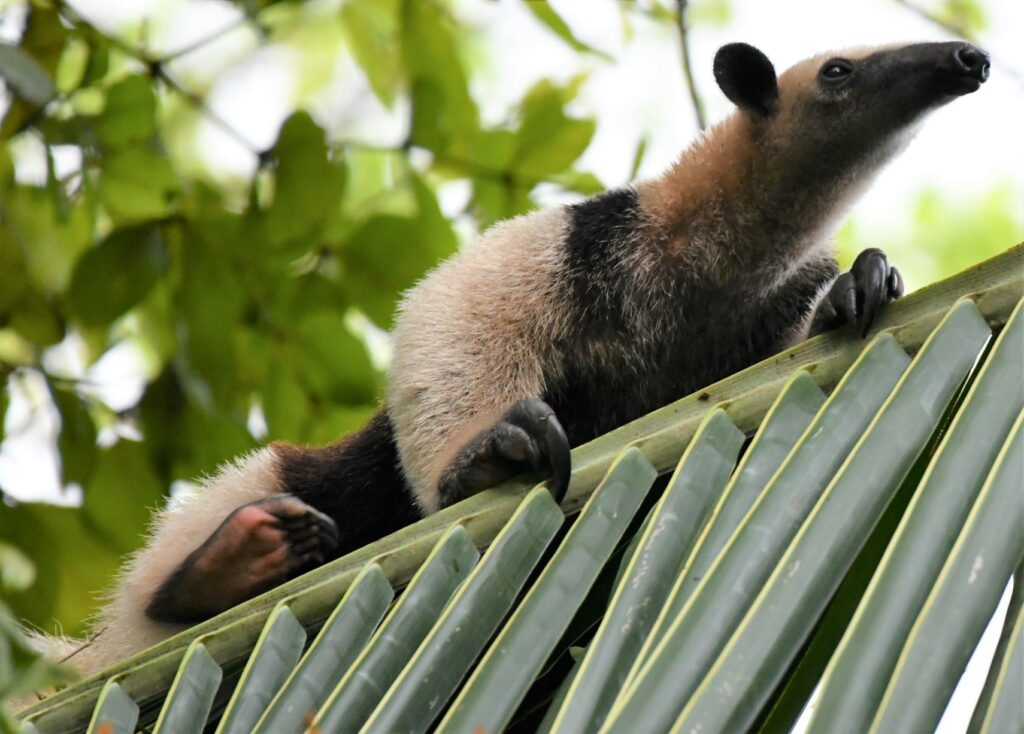
Wildlife (birds and mammals) in the Gandoca-Cocles-Puerto Viejo region, I found to be varied, interesting and comparatively accessible. Would I recommend the area to birders, wildlife photographers and other naturalists? Yes, definitely. And, if one can find decent lodging in the area, e.g., LPDC, it is definitely possible to have an enjoyable, productive visit.
Gandoca–Cocles-Puerto Viejo Annotated Bird List (October 1 -14, 2021) Callyn Yorke
The Weather during my two-week visit varied from sunny and warm (30 C) to overcast with heavy afternoon and evening thundershowers (25 C); winds were mostly from the NE at 2 – 20 km/hr. The tide was usually low in the morning and late afternoon; surf 0.2 – 1 m.
Explanation of Symbols
Locations: LPDC = La Paz del Caribe lodge, Bugabutik Resort and Ole Caribe Rd.; PC = Playa Cocles; PG = Playa Gandoca, including the shoreline leading to the mouth of Rio Sixaola; PM = Playa Manzanillo and vicinity; PU = Playa Uva and Playa Eden; PV = Puerto Viejo; RNG = Refugio Nacional Gandoca along Paraiso Rd.. Ubiq = Ubiquitous and widespread in appropriate habitat.

Abundance: Numbers following each species represent the maximum number of individuals found during a survey.
Frequency: C = Commonly found or expected to be found during all or most surveys; FC = Fairly commonly found in more than half of the surveys; UC = Uncommonly found in less than half of the surveys; R = Rarely found, i.e. only once during the surveys (Note: some areas, e.g. Playa Gandoca, were surveyed only once).
Plumage, sex, age (if known): alt = alternate, breeding plumage); bsc = basic, non-breeding plumage); trans = transitional i.e. molting into bsc or alt plumage; m = male; f = female; ad= adult; imm = immature.
Behavior, Position, etc.: agl = in flight, approximate height (m) above ground level; greg = gregarious; mid = middle height level, e.g. in trees, forest; msf = mixed species flock.
Systematics and Nomenclature follow Avibase and Clements (2021)
- Little Tinamou Crypturellus soui 1 ran across dirt side road between patches of tall forest bordering a stream, RNG
- Gray-headed Chachalaca Ortalis cinereiceps 4 gregarious in canopy of tall, fruiting trees, LPDC, UC
- Feral Rock Pigeon Columba livia 4 gregarious on roof-tops and on ground in town, PV, C
- Pale-vented Pigeon Patagioenas cayennensis 8 gregarious in canopy of tall fruiting trees, LPDC, C
- Ruddy Ground Dove Columbina talpacoti 20 gregarious pairs on utility lines and road through banana plantation, PG, LPDC, C
- Groove-billed Ani Crotophaga sulcirostris 5 (m,f) gregarious in gardens and dense second-growth, LPDC, FC
- Squirrel Cuckoo Piaya cayana 1 subcanopy of tall trees, LPDC, FC
- White-collared Swift Streptoprocne zonaris 2 flying >100 m above ground level (agl), LPDC, UC
- Vaux’s Swift Chaetra vauxi 3 loosely gregarious (migrating?) @ 50-60m agl, RNG, LPDC, UC
- Long-billed Hermit Phaethornis longirostris 1 around flowering garden shrubs and trees, LPDC, UC
- Stripe-throated Hermit Phaethornis striigularis 1 shaded areas around flowering garden shrubs, LPDC, FC
- Rufous-tailed Hummingbird Amazilia tzacatl 4 gardens and second-growth, ubiq. C
- Gray-cowled Wood-Rail Aramides cajaneus 2 vocal, active on ground in garden, chased by LPDC cat (vocalizations and field marks of the birds matched BOW audio recordings and photos of this species); another individual seen at close range, resting in small, weedy drainage ditch in PV, LPDC, UC (apparently a sympatric population of this widespread woodrail, recently split taxonomically into southern (A. cajaneus) and northern species (A. albiventris)).
- Black-bellied Plover Pluvialis squatarola 1 (bsc. plmg.) on south bank of Rio Sixaola estuary, PG
- Semipalmated Plover Charadrius semipalmatus 2 (bsc. plmg.) on south bank of Rio Sixaola estuary, PG
- Hudsonian Whimbrel Numenius hudsonicus 1 (bsc. plmg.) on shore, PV, PG
- Ruddy Turnstone Arenaria interpres 5 (bsc. plmg.) gregarious on north bank of Rio Sixaola estuary, PG; one on grounded barge sprouting coastal vegetation, PV
- Sanderling Calidris alba 4 (bsc. plmg.) gregarious shore, PG
- Spotted Sandpiper Actitis macularius 3 (bsc. plmg.) individuals on shore near and away from the tideline, estuaries and drainage ditches, ubiq., C
- Willet Tringa semipalmata 1 (bsc. plmg.) on grounded barge, and adjacent shore, PV
- Laughing Gull Leucophaeus atricilla 5 flying southeast at dusk, 200 m offshore, PC
- Brown Noddy Anous stolidus 1 (ad) standing on short piling in shallows, near shore, PV, R
- Magnificent Frigatebird Fregata magnificens 4 (m,f) loosely gregarious, flying around nearshore with BRPE, PV, PC, C
- Brown Pelican Pelecanus occidentalis 25 (ad, imm) flocks of 2 – 5 flying around bay; larger flocks flying southeast at dusk, PV, PU, PC, C
- Great Egret Ardea alba 30 flooded pasture, streams and ditches, shoreline, secluded estuaries; flocks flying s over reef at dusk, about 200m offshore, RNG, PC, PG, FC
- Snowy Egret Egretta thula 2 same areas as GREG, though less common, RNG, PC, PG
- Tricolored Heron Egretta tricolor 1 (ad) on south bank of Rio Sixaola estuary, PG
- Reddish Egret Egretta rufescens 3 flying offshore, SE at dusk, PC
- Green Heron Butorides virescens 1 in shallows and on shore of shady estuary, PC, PV, UC
- Yellow-crowned Night-Heron Nyctanassa violacea 1 (ad.) partially concealed in mangrove tree at edge of polluted estuary, PV, UC
- Roseate Spoonbill Platalea ajaja 8-12, a cohesive flock flying SE offshore at dusk PC
- Black Vulture Coragyps atratus 25 gregarious, feeding on trash, roosting in trees near shore, ubiq., C
- Turkey Vulture Cathartes aura 150 – 300 sporadic and gregarious in southward migration, elsewhere relatively uncommon, c.f. BLVU, 100-200m agl, ubiq..
- Osprey Pandion haliaetus 1 circling bays and nearshore elsewhere, PC, PV, FC
- Common Black Hawk Buteogallus anthracinus 1 perched low to medium level in trees near shore and edge of town, secondary forest and pasture, PC, PV, RNG, LPDC, FC
- Great Black Hawk Buteogallus urbitinga 1 (ad) in subcanopy at edge of forest, RNG
- Roadside Hawk Rupornis magnirostris 2 in roadside trees at edge of pasture, coastal scrub and secondary forest, ubiq., FC
- Broad-winged Hawk Buteo nitidus 120 + (ad, imm) gregarious, sporadically migrating SW at 50 – 100 m agl, LPDC, RNG, FC
- Slaty-tailed Trogon Trogon massena 2 (m,f) pairs in subcanopy of separate trees, gardens and edge of secondary forest, LPDC, FC
- Belted Kingfisher Megaceryle alcyon 1 flushed from edge of mangrove estuary PV; one flying over shore near wooded estuary, PC
- Collared Aracari Pteroglossus torquatus 6 gregarious; a pair raiding an active Black-cheeked Woodpecker nest cavity on main trunk of tall garden tree, consuming the young birds as adult BCWO watched, quite agitatedly from a nearby perch, failing to interfere and defend their nest, LPDC, C
- Yellow-throated Toucan Ramphastos ambiguus 4 gregarious, vocal, in subcanopy of garden and secondary forest trees, LPDC, C
- Keel-billed Toucan Ramphastos sulfuratus 2 pairs in subcanopy of tall fruiting trees in garden and forest edge, RNG, LPDC, FC
- Black-cheeked Woodpecker Melanerpes pucherani 3 vocal, gregarious, nesting in tall trees, gardens and secondary forest edge, LPDC, C
- Pale-billed Woodpecker Campephilus guatemalensis 1 (m) on main trunks of tall trees in gardens and secondary forest, LPDC, UC
- Chestnut-colored Woodpecker Celeus castaneus 1 on garden trees, LPDC, UC
- Peregrine Falcon Falco peregrinus 1 flying sw (migrating?) at about 50 m agl, LPDC, R
- Brown-hooded Parrot Pyrilia haematotis 2 (m,f) a pair alighting briefly in canopy of garden tree, LPDC, UC
- White-crowned Parrot Pionis senilis 3 vocal, gregarious, flying over and alighting in canopy of tall secondary forest edge of garden, LPDC, UC
- Red-lored Parrot Amazona autumnalis 6 (m,f) vocal, gregarious in flight and in canopy of tall garden and secondary forest trees, LPDC, C
- Mealy Parrot Amazona farinosa 6 (m,f) vocal gregarious, often in flight and canopy of tall forest edge trees, LPDC, FC
- Olive-throated Parakeet Eupsittula nana 5 (m,f) gregarious in canopy of garden and forest trees, LPDC, UC
- Great Green Macaw Ara ambiguus 7 (m,f) vocal, gregarious, in flight over secondary forest and garden, LPDC, FC
- Chestnut-backed Antbird Poliocrania exsul 1 vocal (calls) and active, though difficult to see at dawn on the ground in shady understory of forest edge behind my room at Bugabutic Resort, LPDC, FC
- Northern Barred Woodcreeper Dedrocolaptes sanctithomae 1 mid level on large tree in shady, mature secondary forest, LPDC, UC
- Streak-headed Woodcreeper Lepidocolaptes souleyetii mid to upper level on main trunk of a variety of secondary forest and garden trees, LPDC, FC
- Purple-throated Fruitcrow Querula purpurata 4 (m,f, imm) gregarious, small flocks or family groups in subcanopy of secondary forest and gardens; adults feeding fledgling, LPDC, FC
- Black-crowned Tityra Tityra inquisitor 1 subcanopy of secondary forest and garden trees, LPDC, UC
- Common Tody-Flycatcher Todirostrum cinereum 1 very active in lower to mid-level in second-growth shrubs, trees, forest edge and gardens, LPDC, FC
- Mistletoe Tyrannulet Zimmerius parvus 1 active in lower to upper mid-level of second-growth trees and shrubs, LPDC, FC
- Eastern Wood Pewee Contopus virens 1 sallying from mid- level limb, edge of gardens, secondary forest, vacant lots, LPDC, FC
- Tropical Pewee Contopus cinereus 1 low to mid-level perch in shrubs and tree-limbs at edge of secondary forest and gardens, LPDC, UC
- White-throated Flycatcher Empidonax albigularis 1 lower mid-level of second-growth at edge of vacant lot and garden, LPDC, UC
- Bright-rumped Attila Attila spadiceus 2 vocal, gardens and second-growth, forest edge, LPDC, UC
- Great-crested Flycatcher Myiarchus crinitus 2 a pair in adjacent garden trees, LPDC, UC
- Great Kiskadee Pitangus sulphuratus 5 vocal, loosely individuals and pairs, on utility lines and low limbs of trees at edge of clearings, snatch-gleaning large insects (e,g, katydid) from ground and garden shrubs, ubiq., C
- Social Flycatcher Myiozetetes similis 5 vocal, individuals and small flocks on utility lines and tall shrubs at edge of clearings, ubiq., C
- Gray-capped Flycatcher Myiozetetes granadens 1 lower to mid-level at edge of garden and tall second-growth, LPDC, UC
- Tropical Kingbird Tyrannus melancholicus 4 vocal, pairs on utility lines and low limbs of garden trees, roadside clearings, towns, ubiq. C
- Eastern Kingbird Tyrannus tyrannus 25 gregarious in migration, flocks in open fields and flying sw, ubiq., FC
- Red-eyed Vireo Vireo olivaceus 3 often in mixed species flocks (msf) with flycatchers and tanagers, mid to upper levels of tall secondary forest edge, gardens, ubiq. C
- Southern Rough-winged Swallow Stelgidopteryx ruficollis 2 flying over secondary forest and open areas, ubiq. FC
- Gray-breasted Martin Progne chalybea 5 gregarious, flying over pasture and open areas, RNG, UC
- Barn Swallow Hirundo rustica 10 pairs and loose flocks migrating sw over shoreline and open, wetland areas, ubiq., C
- Cliff Swallow Petrochelidon pyrrhonota 300 + loosely gregarious when migrating 20 – 100 m agl, s, sw, se, ubiq., C
- Tree Swallow Tachycineta bicolor 50 + gregarious while migrating s, sw above shoreline with CLSW, LPDC, UC
- White-browed Gnatcatcher Polioptila bilineata 1 in and around garden shrubs, LPDC, UC
- Bay Wren Cantorchilus nigricapillus 1 vocal, lower level at edge of secondary forest and garden, LPDC, UC
- Yellow-throated Euphonia Euphonia hirundinacea 2 (m,f) subcanopy of tall garden trees and edge of secondary forest, LPDC, FC
- Olive-backed Euphonia Euphonia gouldi 2 lower mid-upper levels in garden trees and edge of secondary forest, LPDC, FC
- Stripe-headed Sparrow Peucaea ruficauda 2 vocal in garden shrubs, LPDC, UC
- White-lined Tanager Tachyphonus rufus 2 (m,f) low-mid level in gardens and forest edge, LPDC, FC
- Scarlet-rumped Tanager Ramphocelus passerinii 5 (m,f) gregarious, low to mid-level in gardens, pasture, and edge of secondary forest, ubiq., C
- Blue-gray Tanager Thraupis episcopus 2 mid-upper level in tall secondary forest and garden trees, ubiq., C
- Palm Tanager Thraupis palmarum 4 gregarious, pairs active in low-middle to upper canopy, secondary forest and gardens, ubiq. C
- Golden-hooded Tanager Stilpnia larvata 2 (m,f) pairs active in mid-upper level of garden trees and edge of secondary forest, occasionally joining msf, ubiq., FC
- Shining Honeycreeper Cyanerpes lucidus 2 (m,f) mid-upper level of tall garden trees and edge of secondary forest, LPDC, UC
- Sulphur-rumped Tanager Heterospingus rubrifrons 2 a pair moving quickly through subcanopy of garden and secondary forest, LPDC, R
- Variable Seedeater Sporophila corvina 10 (m,f) gregarious, pairs active in weedy roadside ditches and vacant lots, LPDC, C
- Morelet’s Seedeater Sporophila morelleti 2 (m,f) edge of grassy vacant lot and gardens, LPDC, UC
- Bananaquit Coereba flaveola 2 active low- upper levels of garden shrubs and trees, ubiq. C
- Swainson’s Thrush Catharus ustulatus 2 on ground in gardens and edge of secondary forest, LPDC, FC
- Clay-colored Thrush Turdus grayi 4 individuals on ground and in lower-mid level in gardens and edge of secondary forest, ubiq., C
- House Sparrow Passer domesticus 2 (m,f) vocal in weedy lot/garden next to drainage ditch, PV
- Chestnut-headed Oropendola Psarocolius wagleri 20 (m,f, imm) gregarious, vocal, moving quickly through secondary forest and garden shrubs, foraging on fruits, RNG, LPDC, FC
- Montezuma Oropendola Psarocolius montezuma 10 (m,f) gregarious, vocal, active in canopy of tall fruiting trees, secondary forest and gardens, LPDC, C
- Scarlet-rumped Cacique Cacicus uropygialis 4 (m,f) gregarious, active in mid-upper levels in fruiting trees, garden and secondary forest edge, LPDC, FC
- Black-cowled Oriole Icterus prosthemelas 2 (m,f) pairs active in garden shrubs and lower limbs of trees, LPDC, UC
- Great-tailed Grackle Quiscalus mexicanus 10 (m,f) gregarious, vocal, on ground, shoreline and ruderal roadsides, ubiq., C
- Northern Waterthrush Parkesia noveboracensis 2 individuals foraging at edge of shady estuaries, shorelines, drainage ditches, LPDC, FC
- Tennessee Warbler Leiothlypis peregrina 1 mid-upper level in tall secondary forest edge, LPDC, UC
- Summer Tanager Piranga rubra 2 (m,f) mid-upper levels in secondary forest and adjacent gardens, ubiq., FC
- Tawny-crested Tanager Tachyphonus delatrii 2 (m,f) in subcanopy of secondary forest-garden tree, Playa Negra (north of PV)
- Buff-throated Saltator Saltator maximus 2 pairs in lower to upper mid-level in garden shrubs and secondary forest, LPDC, FC
- Black-headed Saltator Saltator atriceps 1 subcanopy at edge of tall secodary forest, LPDC, UC
_____________________________________________________________________________________________
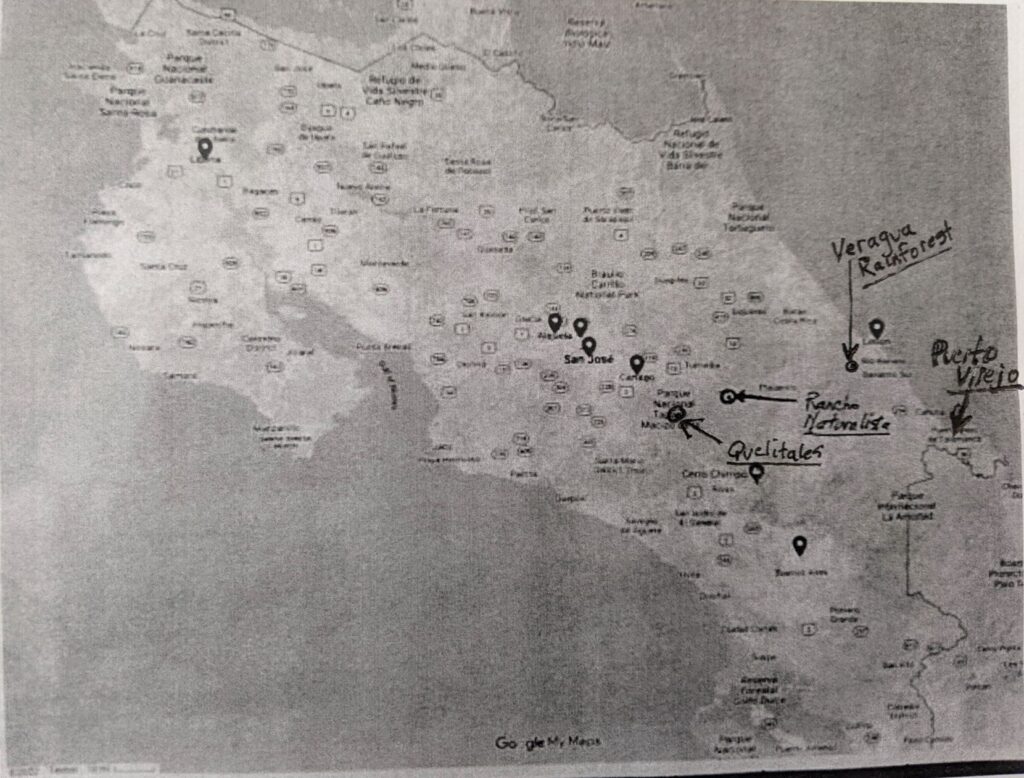
Veragua Rainforest, Limon Province, Costa Rica (14-16 October, 2021) Callyn Yorke
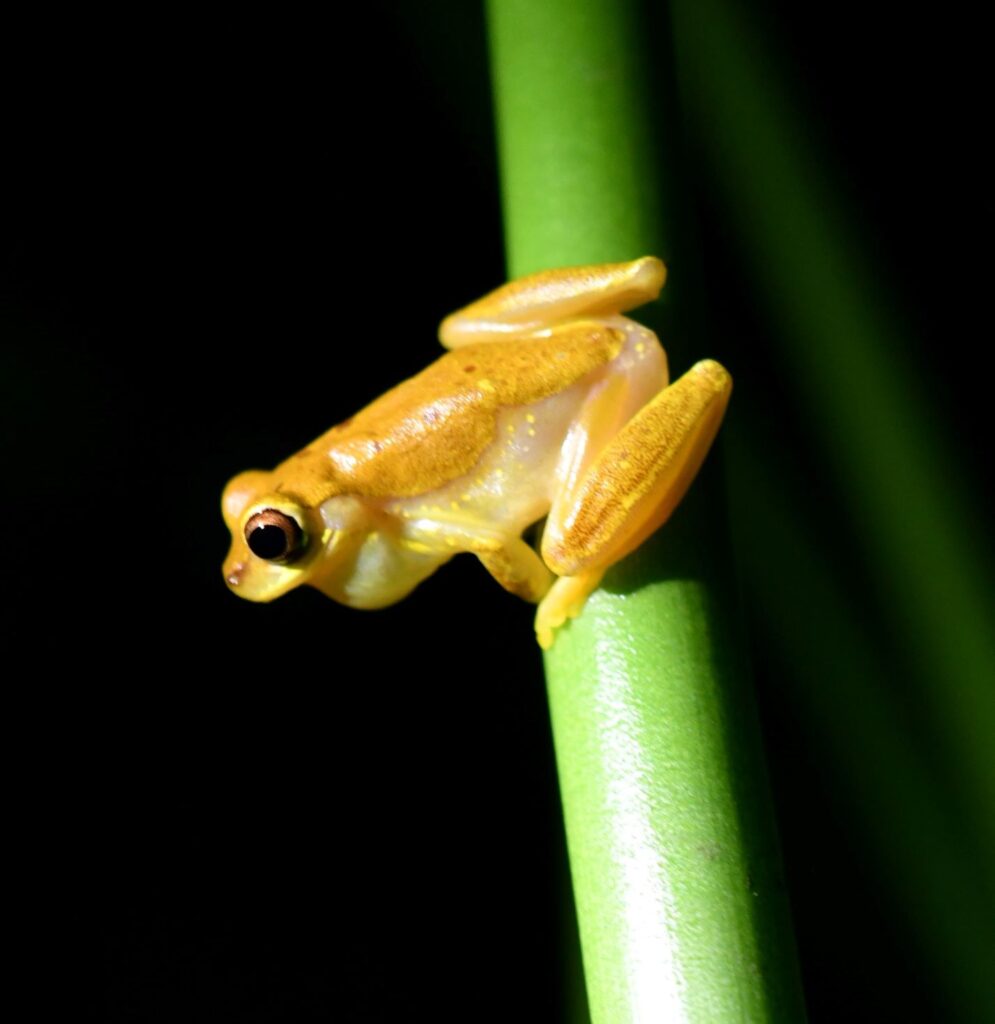
Veragua Rainforest (VR) was about a two-hour drive north of Puerto Viejo-Coccles; the last twelve km through the Talamanca mountains was on a mostly unsigned,rough road leading to VR. The property covers about 1,376 hectares at an elevation of about 470 m above sea level. There are simple, bunkhouse barracks for a pre-booked two-night stay. A small kitchen and covered patio-dining area are attatched to the barracks, providing coffee and traditional meals, i.e., beans and rice.
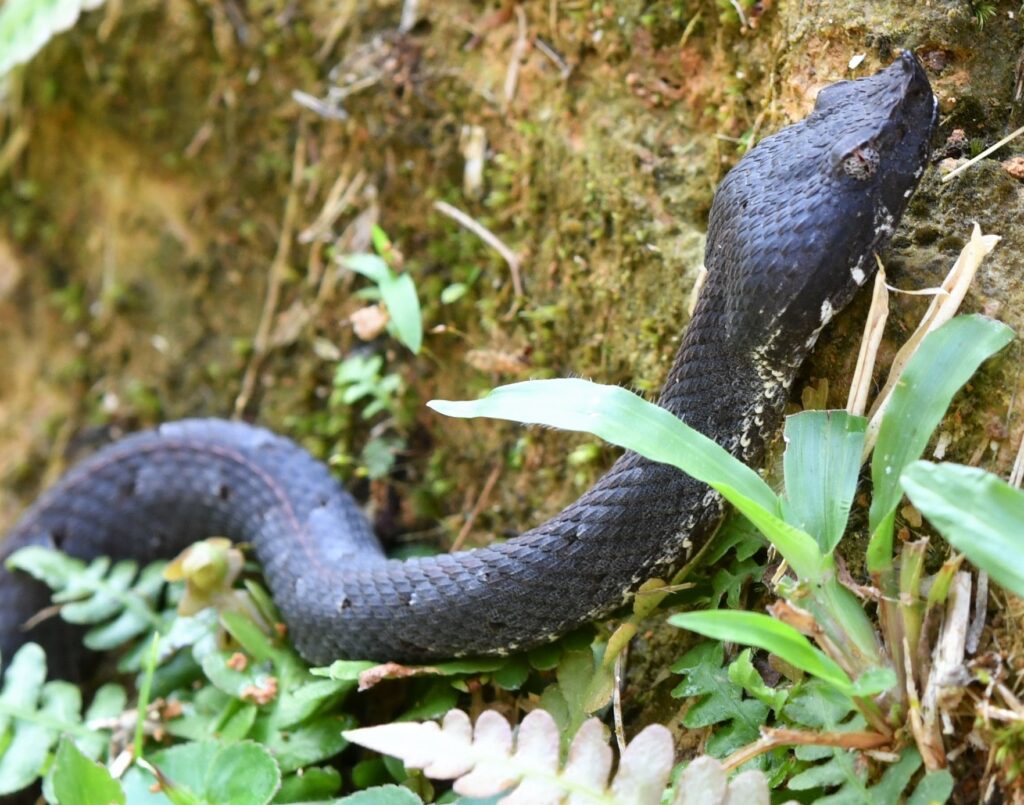
I arrived at the VR facility at 1010 hrs. on Oct. 14 and was greeted by the workers, Carlos (general maintenance), Marcos (a naturalist guide living in Puerto Limon) and Yensi, the cook. The entire staff was uniformly warm and welcoming. Marcos asked if I had any particular bird species that I was interested in seeing. Of course, that was an easy response for me: Bare-necked Umbrellabird, which would be an exciting life bird. Marcos said that the bird had been recently seen near the reptile house but due to its rather secretive nature, was not guaranteed to be found. I told him that I was also very interested to photograph local amphibians and reptiles. Marcos seemed a little uneasy with that request, which apparently was unusual. No worries. A native herpetologist, Jefferson, would prove to be an excellent photographic assistant for me.

A few days earlier, I contacted another rainforest park in this region (Guayacan Rainforest Reserve, near Siquirres), that specialized in native amphibians and reptiles. Unfortunately, the owners were reluctant to book a reservation for only one individual, unless they were willing to pay a very high price for overnight accomodation and guided tours ($350).
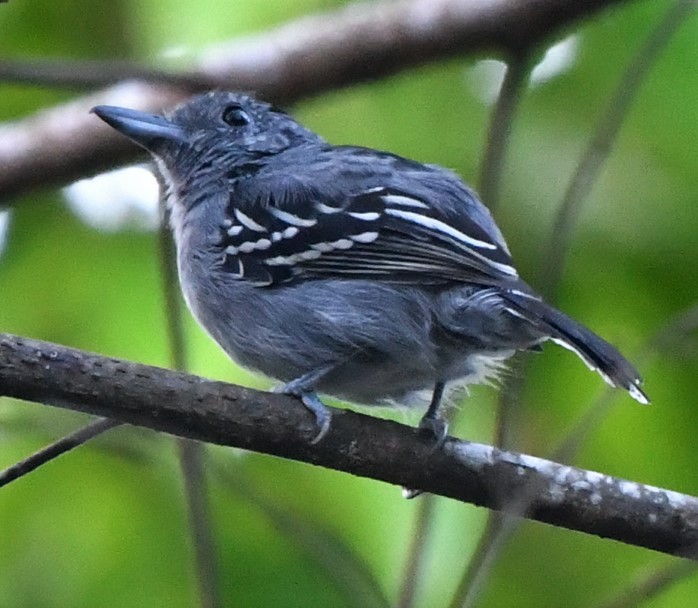
That option was scrapped in favor of Veragua, which was able to accomodate me and two couples for an all-inclusive two-night, three-day visit ($172 + tips for the workers). Although Veragua was set up more as a day-tour for a multitude of cruise line passengers docked in Puerto Limon, they managed to organize a natural history venue for the five of us (Ann and Rick Prum, Mr. & Mrs. Javier Santos Villareal and myself), focused mostly on birds. Marcos, an avid birder, would be our primary guide.
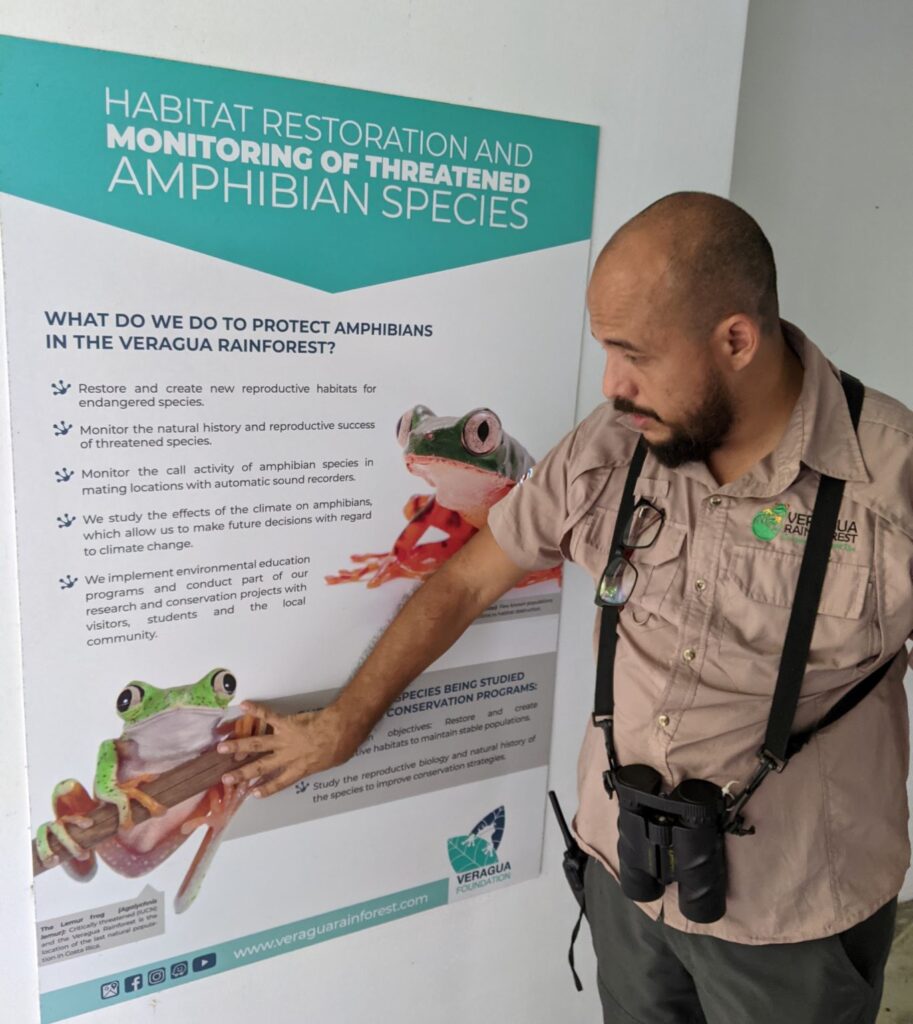
Marcos led our small group around the immediate facility, visiting the reptile house, night frog enclosure and entomology museum. Boardwalks around those facilities faced into a mature rainforest which provided a varied birdlife. Javier, bringing up the rear of our group, spotted a Bare-necked Umbrellabird in this area, which the rest of us had entirely missed. We all had excellent views of it – a lifer for everyone except Marcos. We ventured further on treks along a rainforest stream on foot and by cable tram. While wading in a shallow stream, an interesting anole lizard was found partially submerged on the stream bank; I photographed it and later determined it was referable to Anolis aquaticus, a rather specialized anole, as its Latin binomial indicates.

Veragua forests support a number of rare and critically threatened amphibian species, e.g. the Lemur Frog (Agalychnis lemur). A series of ponds have been constructed to protect these frogs and encourage breeding. Marcos said that the anuran recovery and conservation program has been fairly successful, though we were unable to locate any individual Lemur Frogs during our visit.
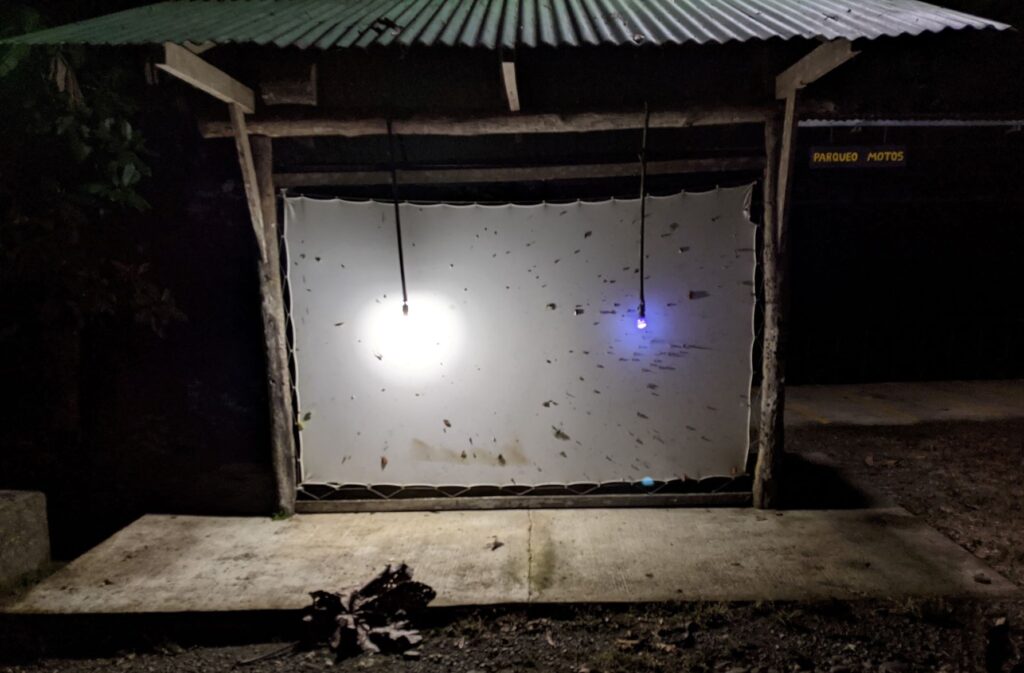
We also spent some time night-walking around the facility with flashlights. A few frogs were found in the landscaped ponds, including glass frogs – named for their transluscent abominal skin (above photo). An insect light trap next to main parking area was switched on after dark, attracting a variety of insects (mostly Lepidoptera and Coleoptera). Significantly more insects were attracted to the blue light than the white light. Unfortunately for our group, no birds were found taking the easy pickings the following morning (I checked it on two successive mornings).

Veragua Rainforest, Limon, Costa Rica Annotated Bird List (October 14-16, 2021) Callyn Yorke
Weather at Veragua was fair to partly cloudy with heavy afternoon showers on 16 Oct. Air temperatures ranged between 23 and 31.6 C. Winds were light out of the NE.
Explanation of Symbols
Locations: All observations of birds were within the Veragua Rainforest property. Specific locations are given for some species, e.g. Cicada Trail (CT); main facility, including entry road, parking and forest edge (MF); aerial tram stream and forest trail (ATS).
Abundance: Numbers following each species represent the maximum number of individuals found during a survey.
Frequency: C = Commonly found or expected to be found during all or most surveys; FC = Fairly commonly found in more than half of the surveys; UC = Uncommonly found in less than half of the surveys; R = Rarely found, i.e. only once during the surveys (Note: some areas, e.g. CT and ATS, were surveyed only once).
Plumage, sex, age (if known): alt = alternate, breeding plumage); bsc = basic, non-breeding plumage); trans = transitional i.e. molting into bsc or alt plumage; m = male; f = female; ad= adult; imm = immature.
Behavior, Position, etc.: agl = in flight, approximate height (m) above ground level; greg = gregarious; mid = middle height level, e.g. in trees, forest; msf = mixed speces flock.
Systematics and Nomenclature follow Avibase and Clements (2021)
- Crested Guan Penelope purpurascens 2 subcanopy of forest edge. MF, UC
- Short-billed Pigeon Patagioenas nigrirostris 2 flying over clearing, MF, FC
- Gray-chested Dove Leptotila cassinii 2 a pair on forest trail, MF, FC
- Squirrel Cuckoo Piaya cayana 1 subcanopy of forest, MF, FC
- Short-tailed Nighthawk Lurocalis semitorquatus 2 flying a circular route over forest edge and clearing, 15-30 m agl, at dusk, MF, FC
- Great Potoo Nyctibius grandis 1 resting on top of a tall snag at the edge of the forest at dusk, MF, FC
- White-collared Swift Streptnoprocne zonaris 2 flying 30-50 m agl over forest and clearings, MF, FC
- Vaux’s Swift Chaetura vauxi 2 flying sw (migrating?), 20-50m agl, MF, UC
- Lesser Swallow-tailed Swift Panyptila cayannensis 1 flying over open area, MF, R
- White-necked Jacobin Florisuga mellivora 2 around verbena hedge, MF, FC
- Long-billed Hermit Phaethornis longirostris 1 edge of forest, MF, FC
- Stripe-throated Hermit Phaethornis striigularis 1 verbena hedge and edge of forest, MF, FC
- Bronze-tailed Plumeleteer Chalybura urochrysia 1 verbena hedge, edge of forest, MF, FC
- Crowned Woodnymph Thalurania colombica 2 one ad. in nest at edge of secondary forest, verbena hedge, edge of forest, MF, FC
- Rufous-tailed Hummingbird Amazilia tzacatl 2, forest edge and clearings, garden flowers, ubiq. C
- Blue-chested Hummingbird Polyrata amabilis 4 loosely gregarious around verbena hedge, MF, C
- Turkey Vulture Cathartes aura 10 gregarious, flying sw 20-50m agl, MF, FC
- White Hawk Pseudastur albicollis 1 flying over forest canopy, ATS, R
- Broad-winged Hawk Buteo platypterus 1 flying over forest, MF, UC
- Central American Pygmy Owl Glaucidium griseiceps 1 vocal (unseen) at edge of forest, MF, UC
- Slaty-tailed Trogon Trogon massena 2 (m,f) subcanopy at edge of forest, MF, FC
- Gartered Trogon Trogon caligatus 1 (m) subcanopy of forest interior, MF, UC
- Broad-billed Motmot Electron platyrhynchum 2 vocal, middle level perch, forest interior, CT, R
- Collared Aracari Pteroglossus torquatus 4 gregarious, vocal, edge of forest, MF, FC
- Yellow-throated Toucan Ramphastos ambiguus 4 forest edge canopy, MF, FC
- Keel-billed Toucan Ramphastos sulfuratus 2 forest edge canopy, MF, FC
- Black-cheeked Woodpecker Melanerpes pucherani 2 middle and upper levels, forest edge and clearings, MF, C
- Peregrine Falcon Falco peregrinus 1 flying over forest @ 70 m agl, MF, R
- Brown-hooded Parrot Pyrilia haematotis 10 gregarious, subcanopy and flying at forest edge, ATS, MF, FC
- White-crowned Parrot Pionus senilis 2 forest edge canopy, MF, UC
- Mealy Parrot Amazona farinosa 6 gregarious, forest edge canopy, MF, FC
- Black-crowned Antshrike Thamnophilus atrinucha 2 (m,f) lower-mid level, forest edge, MF, UC
- Chestnut-backed Antbird Poliocrania exsul 3, vocal low-middle level, forest edge, MF, FC
- Wedge-billed Woodcreeper Glyphorynchus spiruris 1 on vertical limb, forest edge, MF, UC
- Cocoa Woodcreeper Xiphorhynchus sussurans 1 upper mid-level, forest edge, MF, R
- Black-striped Woodcreeper Xiphorhynchus lachrymosus 1 mid-upper level, forest interior, CT, R
- Streak-headed Woodcreeper Lepidocolaptes souleyetii 2 mid-upper level, forest edge, MF, FC
- Bare-necked Umbrellabird Cephalopterus glabricollis 1 (m) middle level of forest, staying on same perch about 10 m from boardwalk for several minutes, partially obscured by foliage but allowing extended observations, MF, R
- Ochre-bellied Flycatcher Mionectes oleagineus 1 mid-level, forest edge, MF, UC
- Eastern Wood-Pewee Contopus virens 1 mid-level, edge of clearing, MF, UC
- Tropical Pewee Contopus cinereus 1 lower level, edge of forest, MF, UC
- Rufous Mourner Rhytipterna holerythra 1 perched motionless in subcanopy near forest edge, MF, R
- Great Crested Flycatcher Myiarchus crinitus 5 upper-mid level, edge of forest, MF, FC
- Boat-billed Flycatcher Megarynchus pitangua 3 gregarious, in subcanopy, one attacking and taking a Golden-hooded Tanager with its beak, flying away with it, forest edge, ATS, MF, FC
- Sulphur-bellied Flycatcher Myiodynastes luteiventris 1 subcanopy, forest edge, MF,
- Red-eyed Vireo Vireo olivaceus 20 loosely gregarious in middle to upper level of forest edge, ubiq. C
- Yellow-green Vireo Vireo flavoviridis 2 middle level, forest edge, MF, FC
- Barn Swallow Hirundo rustica 3 flying sw (migrating) over forest and clearings, MF, FC
- Cliff Swallow Petrochelidon pyrrhonota 100 + gregarious, flying sw (migrating) 30 -60m agl over forest and clearings, MF, C
- White-browed Gnatcatcher Polioptila bilineata 1 second-growth at forest edge, MF, FC
- Bay Wren Cantorchilus nigricapillus 1 vocal, forest edge, second-growth, MF, FC
- White-breasted Wood-Wren Henicorhina leucosticta 1 vocal, forest edge, MF, FC
- Song Wren Cyphorhinus phaeocephalus 1 vocal (unseen) forest interior, CT, R
- Veery Catharus fuscescens 2 lower to middle level, forest edge, MF, FC
- Swainson’s Thrush Catharus ustulatus 4 on ground, lower, mid- level perch, forest edge and interior, ubiq., C
- Olive-backed Euphonia Euphonia gouldi 2 (m,f) subcanopy, forest edge, MF, FC
- Chestnut-headed Oropendola Psarocolius wagleri 3 gregarious, subcanopy, forest edge, MF, UC
- Montezuma Oropendola Psarocolius montezuma 3 vocal, gregarious, subcanopy, forest edge, MF, FC
- Scarlet-rumped Cacique Cacicus uropygialis 2 forest edge, MF, UC
- Black & White Warbler Mniotilta varia 2 (m,f) subcanopy at edge of forest, MF, FC
- Blackburnian Warbler Setophaga fusca 1 (m, imm.) canopy and subcanopy, forest edge, MF, FC
- Chestnut-sided Warbler Setophaga pensylvanica 2 (m,f) canopy and subcanopy, forest edge, MF, FC
- Canada Warbler Cardellina canadensis 2 canopy and subcanopy, forest edge, MF, UC
- Summer Tanager Piranga rubra 3 (m,f, imm.) middle level to subcanopy, forest edge, MF, C
- Scarlet Tanager Piranga olivacea 2 (m,f, imm) subcanopy, forest edge, MF, FC
- Rose-breasted Grosbeak Pheucticus ludovicianus 1 (f) subcanopy, forest edge, MF, FC
- White-shouldered Tanager Loriotus luctuosus 1 (m) lower-middle level, forest edge, MF, UC
- Tawny-crested Tanager Tachyphonus delatrii 1 upper middle, subcanopy, forest edge, MF, UC
- Blue Dacnis Dacnis cayano 2 (m,f) subcanopy, forest edge, MF, FC
- Shining Honeycreeper Cyanerpes lucidus 2 lower-middle level, forest edge, MF, FC
- Green Honeycreeper Chlorophanes spiza 2 (m,f) middle to subcanopy, forest edge, MF, FC
________________________________________________________________________________________
Ara Ambigua Lodge, Puerto Viejo, Heredia Province, Costa Rica (October 16-17, 2021) Callyn Yorke
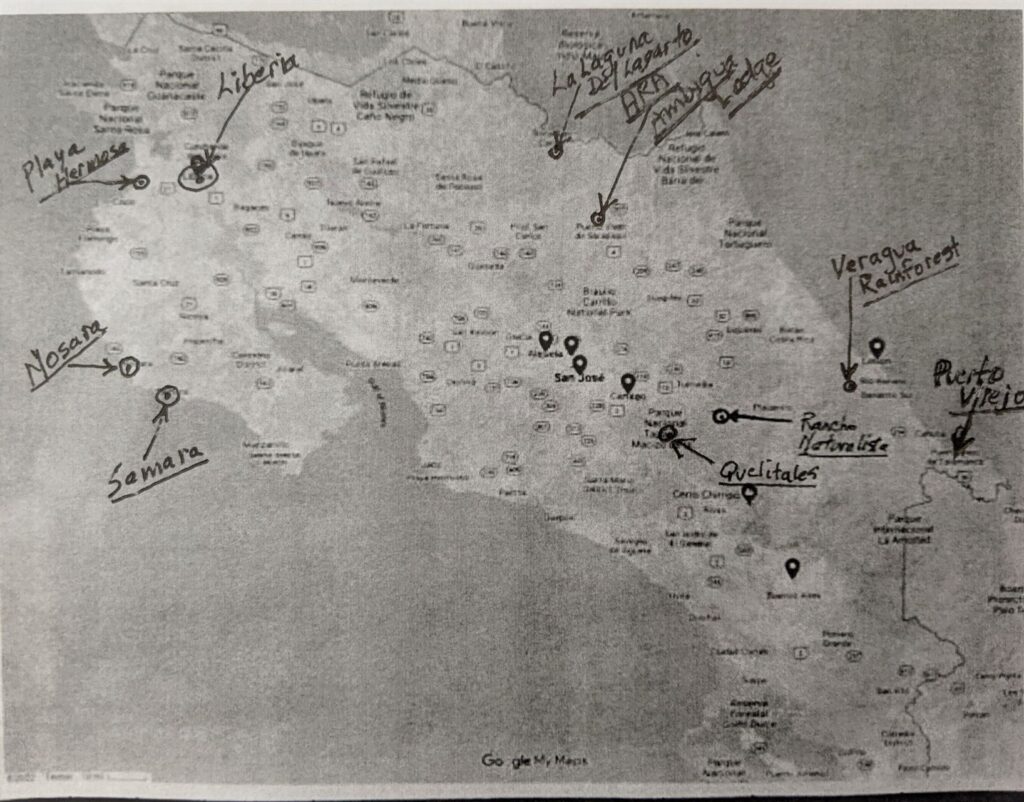
Although I had planned to drive directly from Veragua Rainforest to La Laguna Del Lagarto Lodge on October 16, the latter was fully booked until the 17th. Along the route northward on CR-4, I obtained alternative lodging at the Ara Ambigua Lodge, just west of Puerto Viejo, Heredia Province (one of many towns with duplicate names in Costa Rica). The lodge was well maintained with large, clean, bungalow-style rooms ($72 /night, buffet-style breakfast included) situated in an attractive garden. Birding in and around the lodge grounds was productive the afternoon of my arrival and following morning. Heavy rains occurred during the late evening hours; daytime weather was fair to partly cloudy, 22C to 24C with light winds from the northeast.
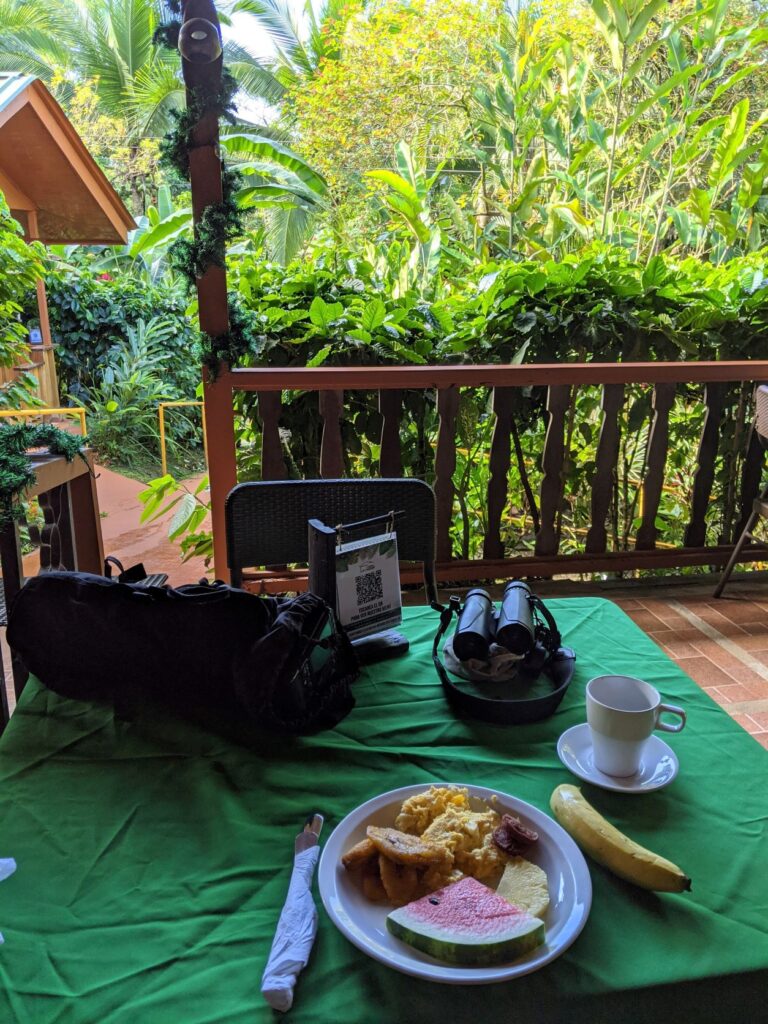
In addition to many tall trees on the lodge property, nearby was a stream with a patch of mature secondary forest, bordered by pasture and a mosaic of developed and undeveloped land. Birds were relatively habituated to auto and pedestrian traffic and could be found and observed at fairly close range. My two walking surveys combined, totaling about 3 hours in duration, covered an area of approximately 10 hectares.
Ara Ambigua Lodge, Puerto Viejo, Heredia Annotated Bird List (October 16-17, 2021) Callyn Yorke
Key to Abbreviations
Abundance: Numbers following each species represent the maximum number of individuals found during a survey.
Plumage, sex, age (if known): alt = alternate, breeding plumage); bsc = basic, non-breeding plumage); trans = transitional i.e. molting into bsc or alt plumage; m = male; f = female; ad= adult; imm = immature.
Behavior, Position, etc.: agl = in flight, approximate height (m) above ground level; greg = gregarious; mid = middle height level, e.g. in trees, forest; msf = mixed species flock.
Systematics and Nomenclature follow Avibase and Clements (2021)
- Red-billed Pigeon Patagioenas flavirostris 3 gregarious in garden tree canopies
- Short-billed Pigeon Patagioenas nigrirostris 2 garden and secondary forest trees
- Ruddy Ground Dove Columbina talpacoti 4 gregarious pairs on roadside and utility lines
- White-tipped Dove Leptotila verreauxi 1 on ground, roadside beneath shady grove of trees
- Long-billed Hermit Phaethornis longirostris 1 flying quickly around flowering garden plants
- Rufous-tailed Hummingbird Amazilia tzacatl 3 hovering around garden flowering shrubs and trees, edge of second-growth
- Green Ibis Mesembrinibis cayennensis 3 (ad, imm) gregarious, foraging on ground in wet pasture
- Black Vulture Coragyps atratus 4 flying 20-50m agl over open areas
- Turkey Vulture Cathartes aura 100 + gregarious, migrating SW @ 50 -100m agl
- Yellow-throated Toucan Ramphastos ambiguus 2 in canopy of tall trees, edge of secondary forest,
- Black-cheeked Woodpecker Melanerpes pucherani 3 (m,f) gregarious, vocal in garden trees
- Peregrine Falcon Falco peregrinus 1 flying sw @ 100m agl
- Red-lored Parrot Amazona autumnalis 4 gregarious in canopy of garden trees
- Wedge-billed Woodcreeper Glyphorynchus spirurus 1 middle level of shady secondary forest next to stream
- Eastern Wood Pewee Contopus virens 1 lower-middle edge of secondary forest
- Great Kiskadee Pitangus sulphuratus 4 vocal, loosely gregarious on utility lines and subcanopy at edge of pasture and gardens
- Social Flycatcher Myiozetetes similis 4 gregarious on utility lines and garden shrubs
- Gray-capped Flycatcher Myiozetetes granadens 1 mid-level perch at edge of garden
- Tropical Kingbird Tyrannus melancholicus 3 on utility lines and mid-level perches at edge of secondary forest and pasture
- Southern Rough-winged Swallow Stelgidopteryx ruficollis 3 gregarious on a utility line and flying low over pasture and open areas
- Gray-breasted Martin Progne chalybea 2 a pair on utility line and flying 10-30 m over open areas
- Southern House Wren Troglodytes musculus 1 vocal (repeated song) at edge of garden next to homestead
- Tropical Mockingbird Mimus gilvus 2 in and around garden trees and shrubs
- Swainson’s Thrush Catharus ustulatus 3 on ground in garden and edge of secondary forest
- Clay-colored Thrush Turdus grayi 3 on ground in garden and pasture
- Olive-backed Euphonia Euphonia gouldi 2 (m,f) in canopy of garden trees
- Montezuma Oropendola Psarocolius montezuma 3 (m,f) vocal, gregarious in garden and edge of secondary forest
- Chestnut-sided Warbler Setophaga pennsylvanica 1 (m) canopy of garden trees
- Summer Tanager Piranga rubra 2 (m,f) canopy and subcanopy of garden trees
- Gray-headed Tanager Eucometis penicillata 1 mid-level, edge of secondary forest
- Scarlet-rumped Tanager Ramphocelus passerinii 4 (m,f) gregarious in and around garden and open, ruderal areas
- Blue-gray Tanager Thraupis episcopus 2 canopy of garden trees and shrubs
- Palm Tanager Thraupis palmarum 2 subcanopy and canopy of garden trees
- Golden-hooded Tanager Stilpnia larvata 2 (m,f) canopy of garden trees and secondary forest edge
- Variable Seedeater Sporophila corvina 5 (m,f) gregarious, roadside ruderal patches and edge of pasture
- Morelet’s Seedeater Sporophila morelleti 3 gregarious roadside ruderal and edge of gardens
_____________________________________________________________________________________________
La Laguna Del Lagarto Lodge, Santa Rita, Boca Tapada, Rio San Carlos, Pital and Surrounding Areas, Alajuela Province, Costa Rica (October 17 – November 10, 2021) Callyn Yorke
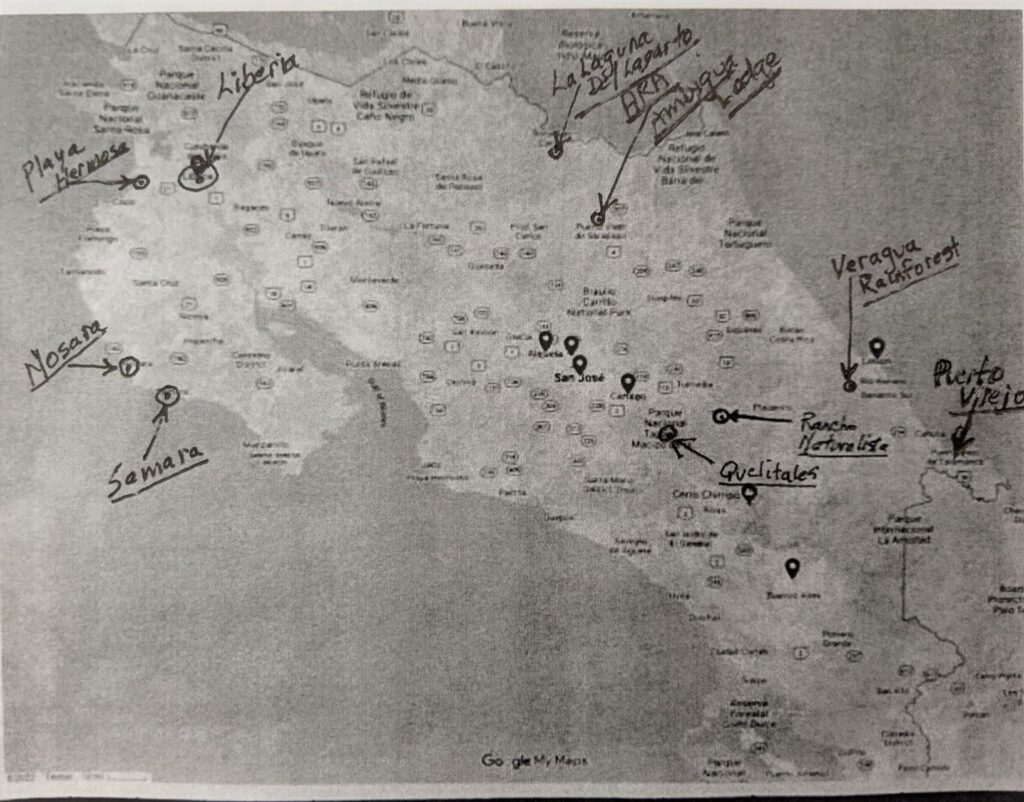
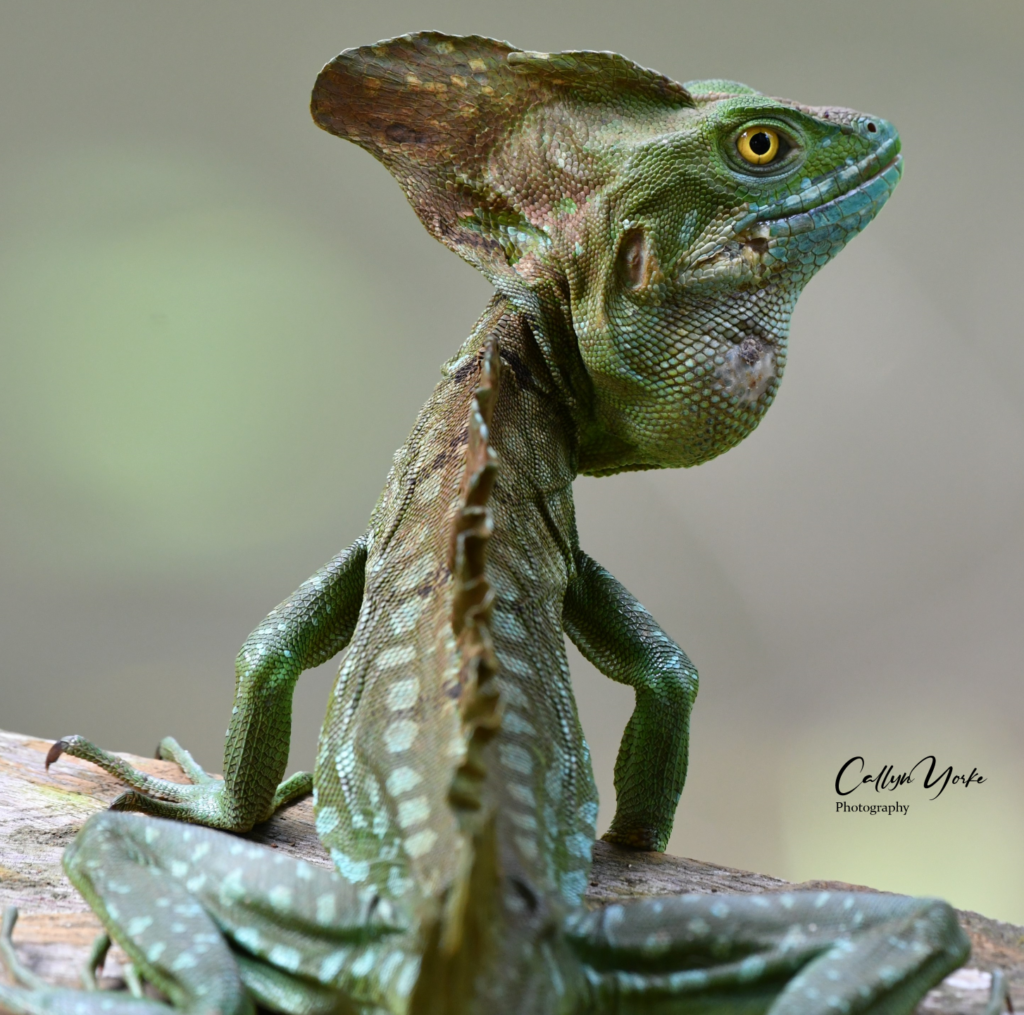
The drive from Ara Ambigua Lodge to La Laguna Del Lagarto (LDL) would have normally taken about two hours; the 30 km stretch between Pital and LDL had been partially improved with a gravel topping, cutting about twenty minutes off the drive. I was in no particular hurry, since my plan was to spend about three weeks at LDL.

Along the way, I had time for a little birding and the best option was to first stop at Didier’s place in Boca Tapada. Luckily, he was home. Didier had been the main bird guide and general maintenence worker at LDL for nearly twenty years. We had been on many local birding trips together over the years, during my multiple visits to LDL.
Since my last visit, Didier had installed a makeshift bird feeding station in a small tree behind his house. I was delighted to see that several birds were on a bunch of bananas tied to the tree, including Red-lored Parrot, Black-cowled Oriole, Shining Honeycreeper and Plain-colored Tanager. Like the other resident workers at LDL, e.g. Adolfo and Diego, Didier had made an investment in a modest little home with a garden where birds could be attracted, along with visiting birders with big cameras. It has been a successful micro-business venture that generates extra income for the local workers and their families. Didier has big plans. He envisions a larger, permanent feeding station with an adjacent deck/hide for photography on his property.

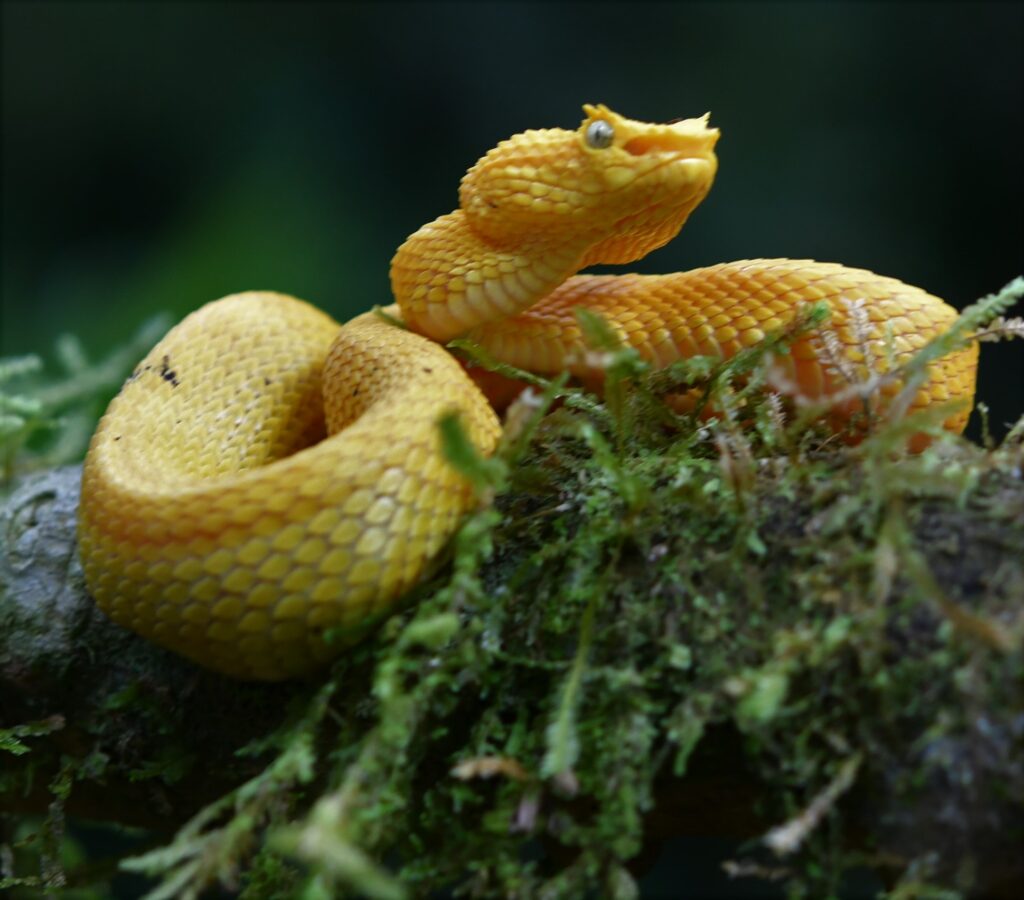
Ten years earlier, I purchased a one-hectare (2.5 acre) parcel adjacent to LDL. The land was part of the LDL property and had been cleared for pasture decades before I acquired it. Vinzenz Schmack and his son, Kurt, later planted a monoculture of fast-growing trees (Gmelina arborea) intended to be harvested about every fourteen years for the construction of furniture, wooden pallets, etc.. My vision for the property was simply to remove the tree plantation and allow the natural forest to regrow – a seemingly straightforward forest recovery plan. Bulldozing the hectare of young Gmelina trees, however, displaced most of the thin topsoil, resulting in a coverage of mostly exotic grasses and perennial weeds, which delayed regrowth of the forest. That coupled with regular use of the property by a neighbor’s cattle, necessitated a gated fence and periodic repairs. Finally, there were some legal hoops to jump through, i.e. ownership registration and annual taxes. Adolfo and I came up with a name for the property, Loma Lapa Verde, or Hill of the Great Green Macaw, an endangered species of parrot that once nested in a large Alamendro tree next to the site. Today, the Loma Lapa Verde Ecological Preserve is well along in the process of ecological succession and regrowth into a climax lowland rain forest; it has a ways to go yet, but Didier, who oversees the place, has been busy cutting trails through the dense second-growth and constructing bird feeders with photography platforms. The LLV bird list is growing and has a few notable species, e.g. King Vulture, Ornate Hawk Eagle, Brown-hooded Parrot and White-collared Manakin.
In addition to doing daily bird surveys at LDL and surrounding areas, I was occasionally busy photographing amphibians and reptiles occurring in the area. Finding those creatures was a challenge, even for an experienced field biologist, as I reckoned myself to be.
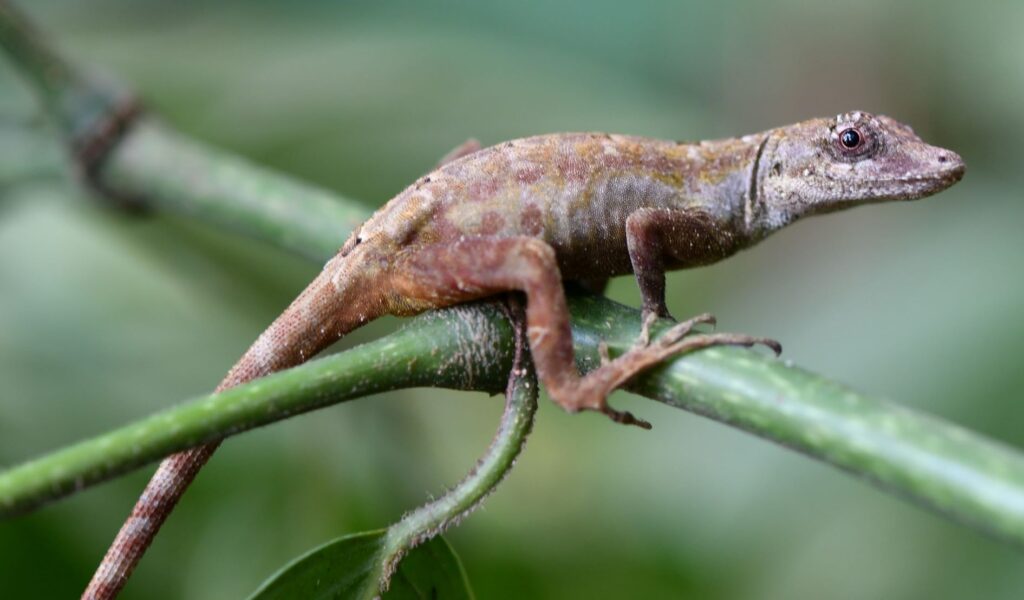
When I chanced upon an interesting specimen, if it was close, I was seldom prepared with the correct lens and camera setup (Nikon D 850 and Nikon 60mm Micro lens); by the time I got the gear together, the subject had vanished. Clearly, I would need assistance to locate critters and to get much more than a series of blurry images.
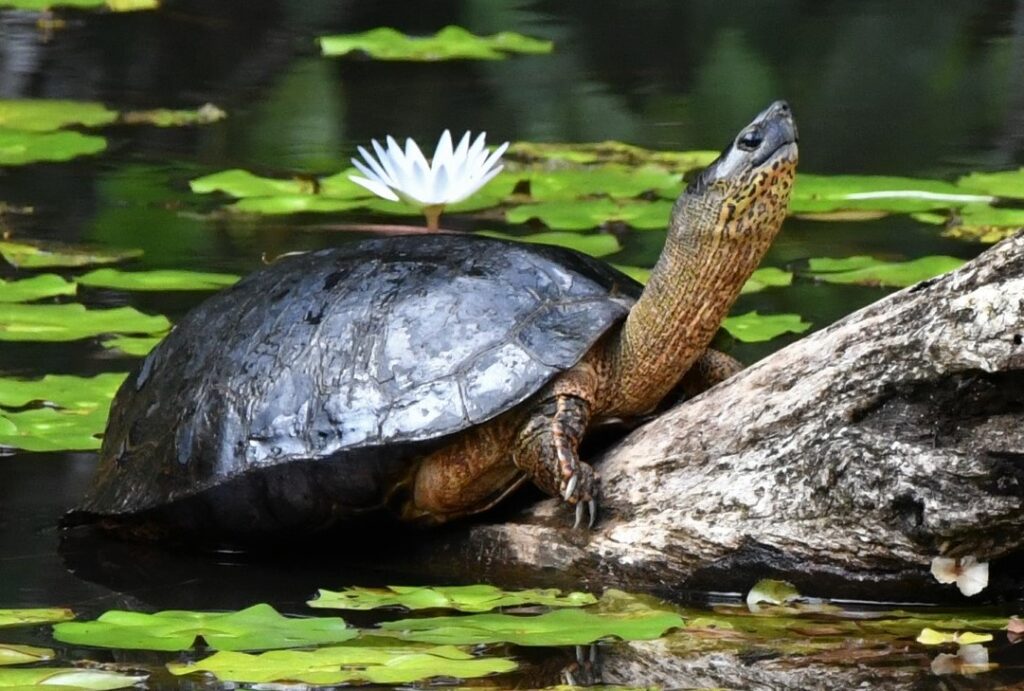
I learned years ago while working in the jungles of Southeast Asia, to trust the natives, regarding the whereabouts and habits of local animals. I asked around. Of course, I had to make such effort worthwhile. Rather arbitrarily, I agreed to pay the finder of each different species of amphibian or reptile, $3,000 Colones (US $4.60).
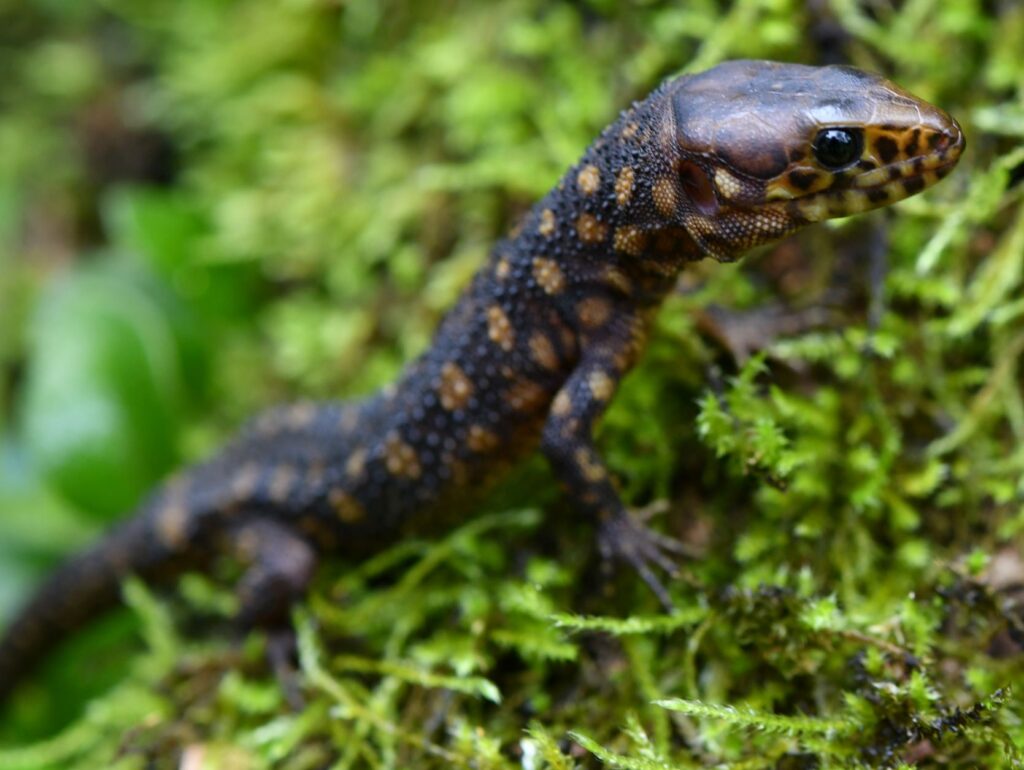
That seemed to be the right sized carrot. Word of a new source of employment spread amongst lodge workers like news of a gold discovery. Within a couple of days, everyone and their cousin proudly presented me with something they expected to be paid for. But often, it was a species I had already photographed or that had been beaten senseless, or simply in the wrong taxonomic category, e.g. an insect. A few of the village boys left with their catch, visibly disappointed, having obtained only a brief lesson in animal taxonomy. Ahh. Better luck would be in store for most of them over the next few days. It was a learning process for all of us.

There were delightful surprises. Several of the species brought in were entirely new to me, e.g. a secretive, little known Xantusid (Night Lizard Family), Lepidophrynum flavimaculatum and a beautifully camouflaged, emerald-and-black forest anole (Anolis biporcatus). Most of the snakes I received were familiar to me, though seldom seen. One species in particular (Erythrolamprus mimus), was stunningly colorful, interesting and completely harmless relative of North American kingsnakes (Lampropeltis spp.). As the species’ Latin name, mimus. suggests, it displays a superficial resemblance to the unrelated and deadly coral snake, Micrurus nigrocinctus, which also occurs in this area. When Didier came out of the forest one day, gently holding a writhing, black, red & white banded serpent, I did a double-take.
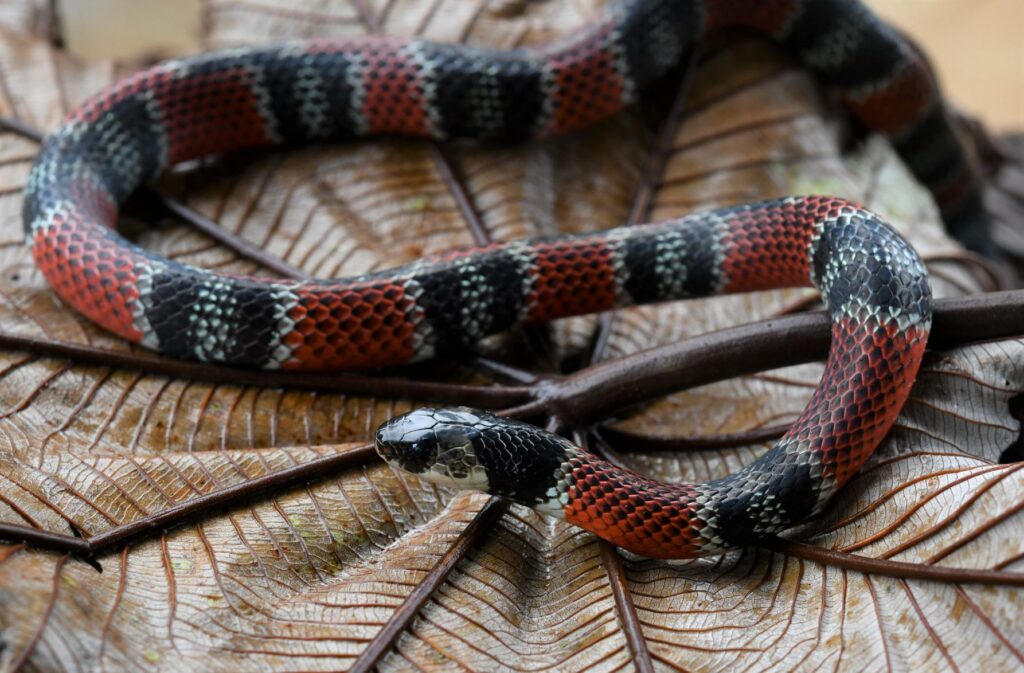
Didier, noting my concern, smiled and reassured me that the snake was harmless. As much curious as skeptical, I approached cautiously. When examined closely, I could see that the mimic black, red and white banded snake had a distinctive head shape and scale pattern with relatively large eyes, unlike a true Elapid coral snake. Didier confidently recognized the local snakes. But sometimes even experts are fooled.
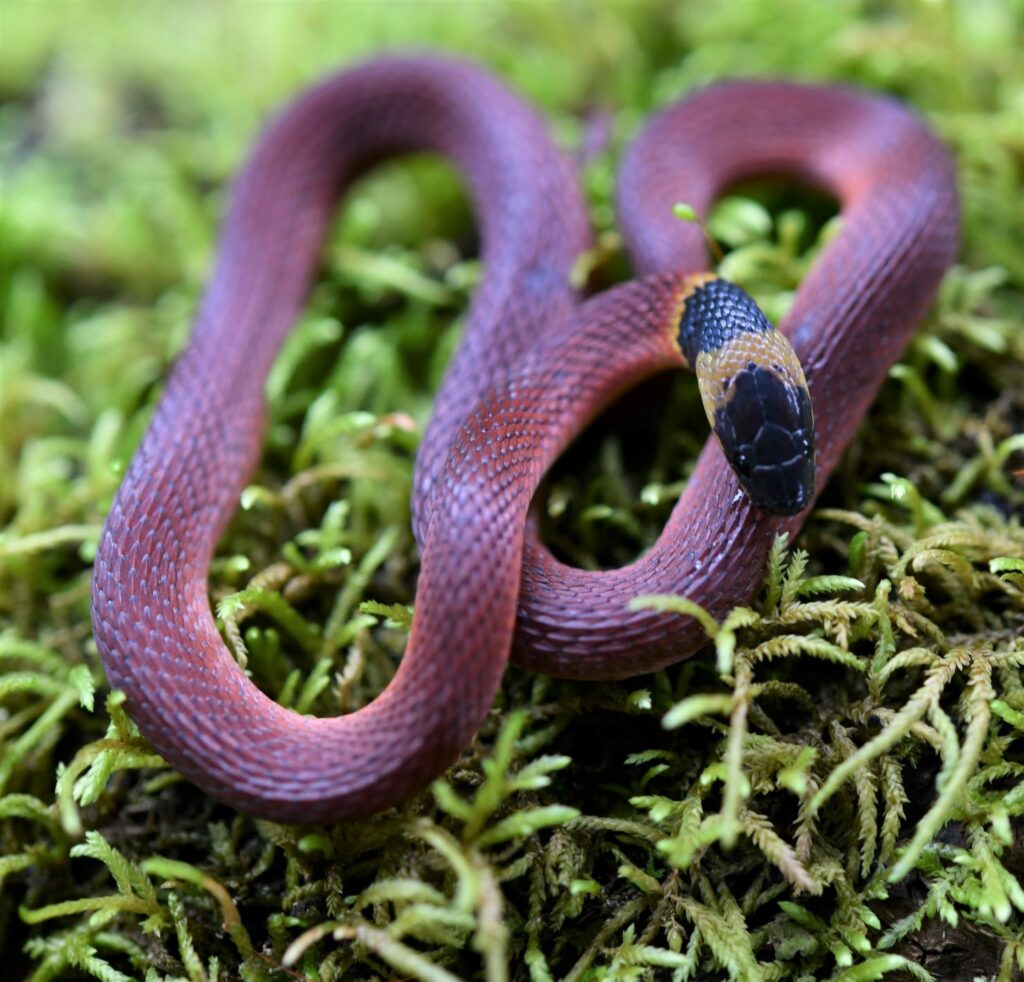
Consider the well publicized case of Dr. Joe Slowinski, an experienced herpetologist from the California Academy of Sciences, San Francisco. Dr. Slowinski, who had collected snakes since childhood, specialized in the study of neurotoxic snake venom. He had reportedly been bitten and sprayed by venomous snakes during his illustrious career and, like most herpetologists, probably included those incidents among his most entertaining adventure stories. But his luck finally ran out one autumn morning in northeast Myanmar (Burma). During a natural history expedition with a team of ten scientists and ninety porters, all trekking into a remote part of northeastern Myanmar, Joe reached into a sack and grabbed what he and his field assistant mistakenly believed to be a harmless mimic krait (Dinodon sp.). As he lifted the little snake out of the sack, still attached by its fang(s) to his index finger, Joe immediately knew he had made a potentially grave error. The young, black-and-white banded snake was far from a harmless mimic – indeed it was a deadly Chinese banded krait (Bungarus multicinctus). Even with a miniscule amount of its venom in the blood (the LD50 of which is around 0.09 mg/kg, meaning only about 0.01 cc could take down a 100 kg man), without prompt medical attention, Joe’s chance of survival was vanishingly remote (statistically, 20%). Apparently, there was no radio contact with the outside world, no motorized transportation, no viles of antivenom, no extractor kit, and essentially nothing within the tons of expedition supplies, that could be used to save Joe’s life. Immediate amputation of the finger, proximal to the bite wound, would probably have worked but that painful option was not chosen.
Mark Moffet, an entomologist who was part of the scientific expedition, later wrote a gripping, first-person account of the event. Predictably, with krait envenomation, there were no immediate symptoms from the bite. That might mislead a victim to believe the bite was dry (i.e. without venom, which sometimes happens when snakes bite defensively). Another almost gratifying fact, was that the snake was a relatively small specimen (I’m guessing with a fang penetration length of 1-2 mm). Perhaps there was nothing to worry about. Joe sat down for breakfast with his group. Shortly thereafter, while resting from a long night of collecting, Joe reported a tingling sensation in his hand. This was serious and everyone, including Joe, surely realized it. Joe proceeded to describe in detail, the paralytic course that the envenomation symptoms would probably take. There was no time to waste. At rest, blood completes a circuit in the body about every forty-five seconds. Bungarotoxin produces a unique descending sequence of paralysis. Once the presynaptic neuromuscular junctions are occupied by the alpha-bungarotoxin (a 3-finger shaped, 74-amino acid polypeptide stabilized by five, hydrophobic disulfide bonds), acetylcholine transmitter molecules are blocked and paralysis is irreversible for days, even with massive doses of antivenom, e.g. 200 cc). Runners were sent to the nearest village which had a radio, about 13 km away. In the interim, as Joe had indicated would happen, neuromuscular paralysis included ptosis, exopthalmoplegia, dysphagia, dyspnea, nausea, progressively rendering him into a horrifying, coma-like state, still fully conscious but unable to breathe on his own. His companions spent several more hours taking turns, giving Joe mouth-to-mouth resuscitation, and continued with CPR long after his heart had stopped. A military rescue helicopter had been summoned but couldn’t land near the field station due to heavy rain; Joe Slowinsky was pronounced dead about thirty hours after being bitten by the krait. He was cremated in Myanmar and his remains were taken home to San Francisco, along with specimens collected during the expedition. The juxataposition of two tragedies was only later known to the isolated group of scientists; Joe Slowinski died on September 12, 2001, local time (September 11, in New York City).
There are really only two kinds of accidents: avoidable and unavoidable. Clearly, this particular case fell within the first category. Several precautions could have been taken, including a proper medical kit with an adequate supply of antivenom. Polyvalent antivenom, produced in Australia, India and Thailand, while not cheap (US $6.50 per vial; 10 – 80 vials are needed for a single, effective treatment) would certainly be high on the list of necessary supplies for a herpetological expedition into a remote part of Southeast Asia. Considering the size of the expedition – ten field biologists, a squad of native collectors and scores of barefooted porters, a supply of antivenom and functional ventilators, if omitted, would be a highly questionable oversight; tragically regrettable in this case. In fact, roughly two-thirds of the five-million annual snake bite casualties in the world occur in Southeast Asia. Additionally, a basic first aid kit including a suction pump extractor (see below), which I have found effective for ant and wasp stings, might be useful for shallow snake bites as well. But the best option is avoiding the need for treatment in the first place. Handling venomous snakes is risky, even for pros. Handling live specimens of uncertain identity in a remote part of Southeast Asia, is flirting with the devil.
Fieldwork can also be treacherous in Costa Rica. Some years ago, the young German manager of LDL accidentally disturbed a wasp nest while paddling a canoe with tourists through a local waterway. He was stung on the head and neck by one of the large wasps, which reportedly caused him to go into shock (a small percentage of people are severely allergic to wasp venom). He suffocated and died before reaching a local clinic. A basic first aid kit, e.g. extractor, epinephrine and syringe, was evidently unavailable.
After hearing the sad story of the death of his manager, whom I had met during my previous visit to LDL, I recommended that Kurt keep an extractor kit at the lodge. I showed him the one I carried with me when in the field and how simple it was to use. Realizing that the purchase of such a kit (e.g. $15 at Walmart) would involve a lengthy journey to the capitol, San Jose, about a 5-hour drive from LDL, I donated my extractor kit on the day I left the lodge. I’m hoping someone there still knows where it is stored.
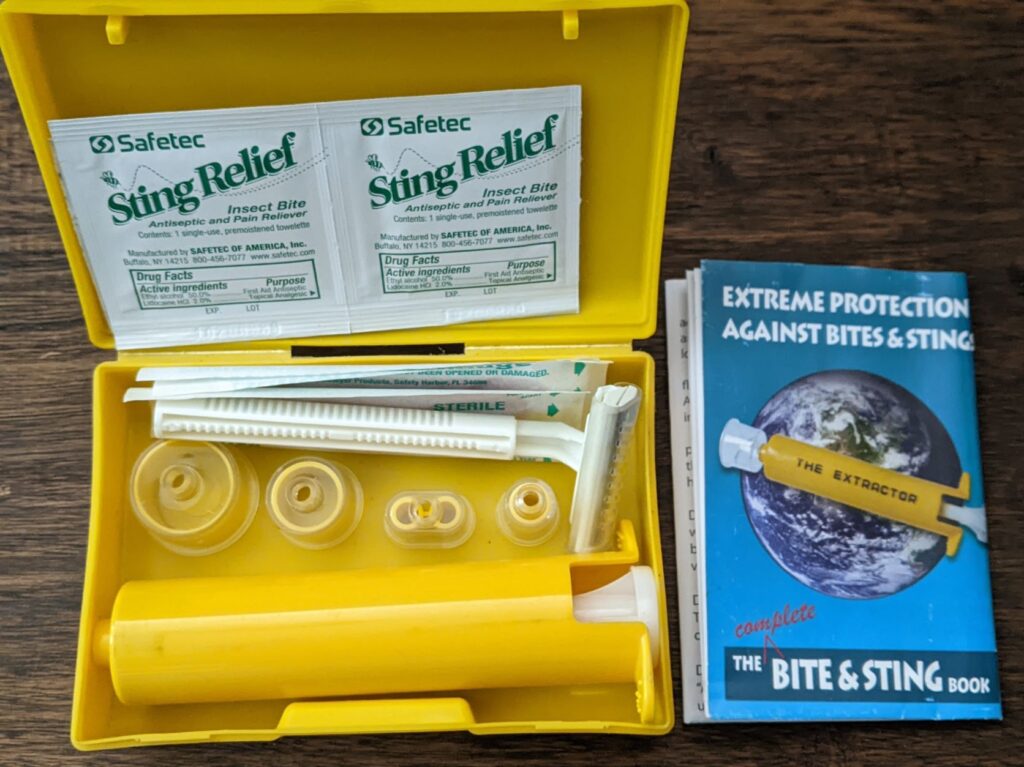
Although the extractor is probably useless for deep-fang envenomation, e.g. from a Fer de Lance, it is definitely useful for comparatively shallow bites and stings from ants, bees and wasps. This I know from a first-hand experience in the highlands of Savegre, Costa Rica. While sitting barefooted on a patio outside a hotel room, I was stung on my big toe by a medium-sized, dark wasp. Immediately, I felt an intense burning sensation and ran to the room for my extractor kit. Within a few more minutes I had the suction cup and plunger-pump applied, which expressed a small amount of yellowish-red fluid from the sting wound. I left the device in place for about ten minutes. After its removal, there was absolutely no swelling or pain, only a temporarily raised area of skin where the suction cup had been attached. That was my first successful use of the extractor; several more insect bites and stings were treated similarly in subsequent years. Now, most of my dearest friends and relatives have an extractor kit of their own, receiving it as either a holiday or birthday gift.

Back to the herp collecting and photography business at LDL. I was presented with several other live amphibian and reptile specimens collected by the LDL workers, sometimes assisted by their family members. Among those, was a small, terrestrial snake, Tantilla sp., which has a relatively uncommon relative in the southern deserts and Central Valley of California. According to Diego, the LDL worker who found the snake, it is common in and around the gardens and at the edge of the forest. Apparently, its diet includes venomous arthropods such as centipedes, hence the common name.
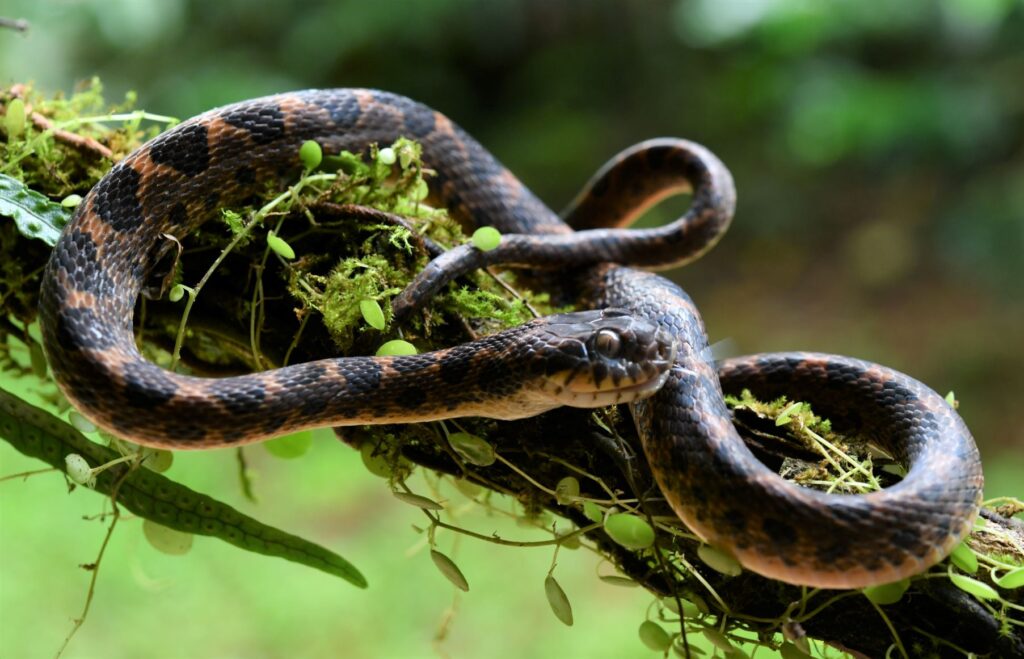
Several species within this group of Neotropical, nonvenomous snakes (Tantilla spp.) may have a color phase similar to young coral snakes (Micrurus spp.). This phenomenon is referred to by biologists as form of either Batesian Mimicry or Mullerian Mimicry, i.e., a harmless species or group of species obtaining avoidance protection from predators due to resemblance to a venomous species. There are many examples of these kind of mimicry systems, widespread among unrelated animal taxa, particularly in the tropics.
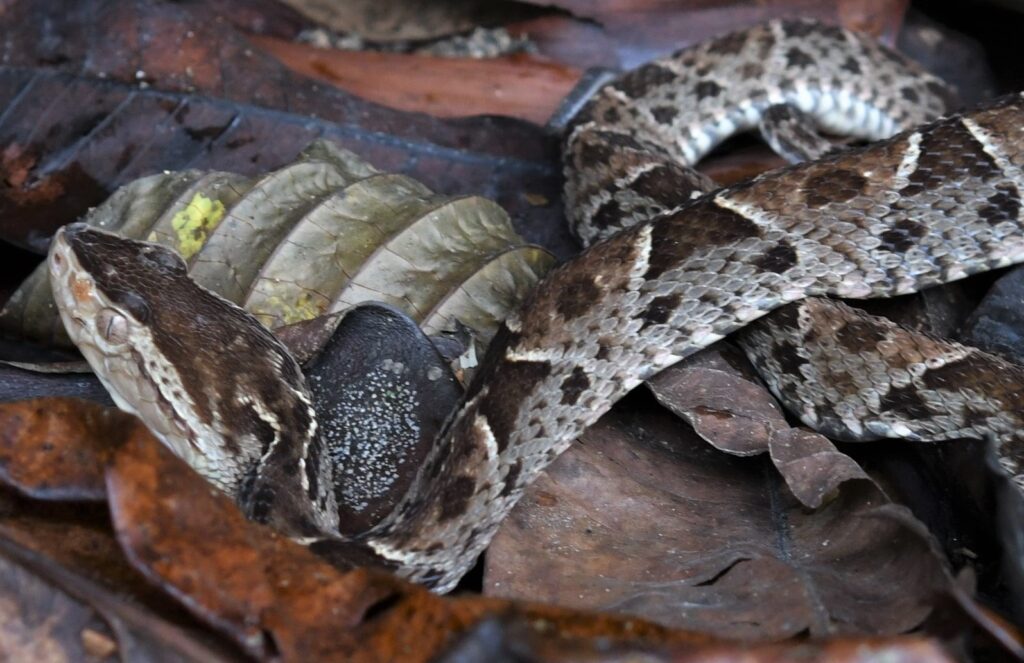
Other, relatively common species presented to me were also interesting subjects for close-up photography. Admittedly, photographing a Fer de Lance (Bothrops asper) was rather tricky. This terrestrial pit-viper is typically irritable and quick to strike, resulting in several hundred snake-bite casualities in Costa Rica each year. Adolfo, the LDL manager, had a captive specimen that was relatively calm and could be photographed at close range. But as I manuevered around the snake, it became increasingly active and difficult to bring into sharp focus.
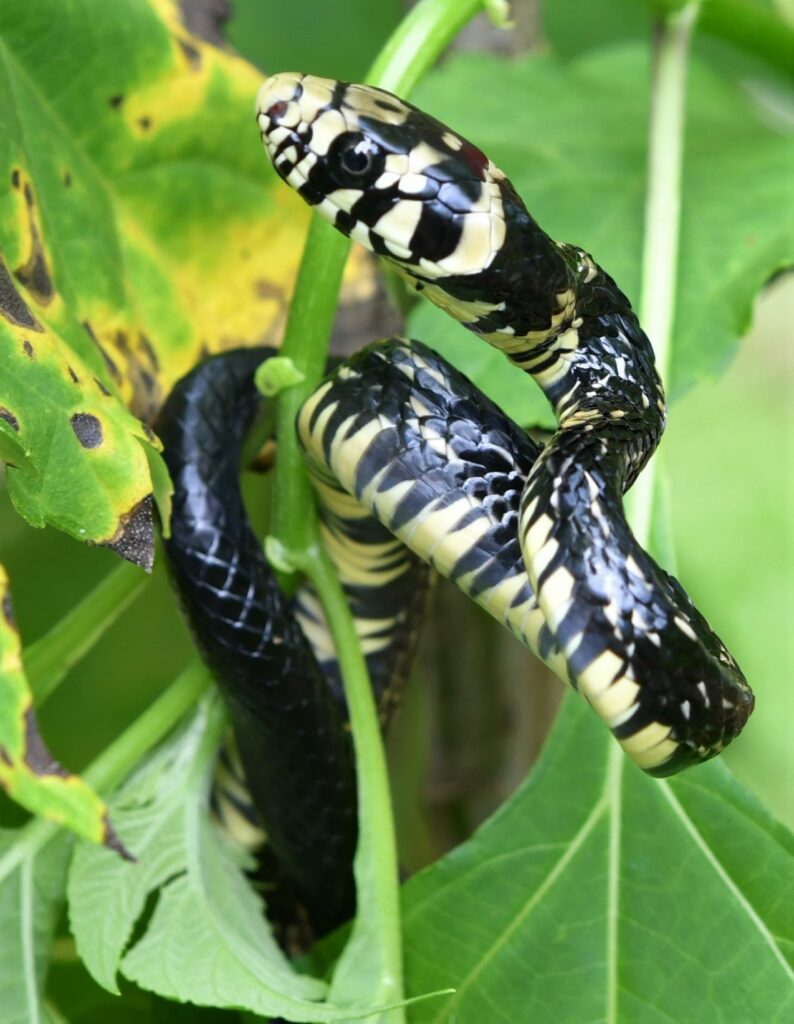
A fairly docile and attractive snake for photography was an adult Tiger Rat Snake (Psilotes pullatus) caught by Didier on the forest road in front of LDL. This predominantly arboreal snake was cooperative and allowed me to capture a few sharp images of it.
I was hoping to see some new species of frog brought in, however only two species of common poison dart frog (Dendrobates spp.) had been found. Dutifully, I photographed both of them, despite the fact that I had already photographed those two colorful anurans during previous visits to LDL;
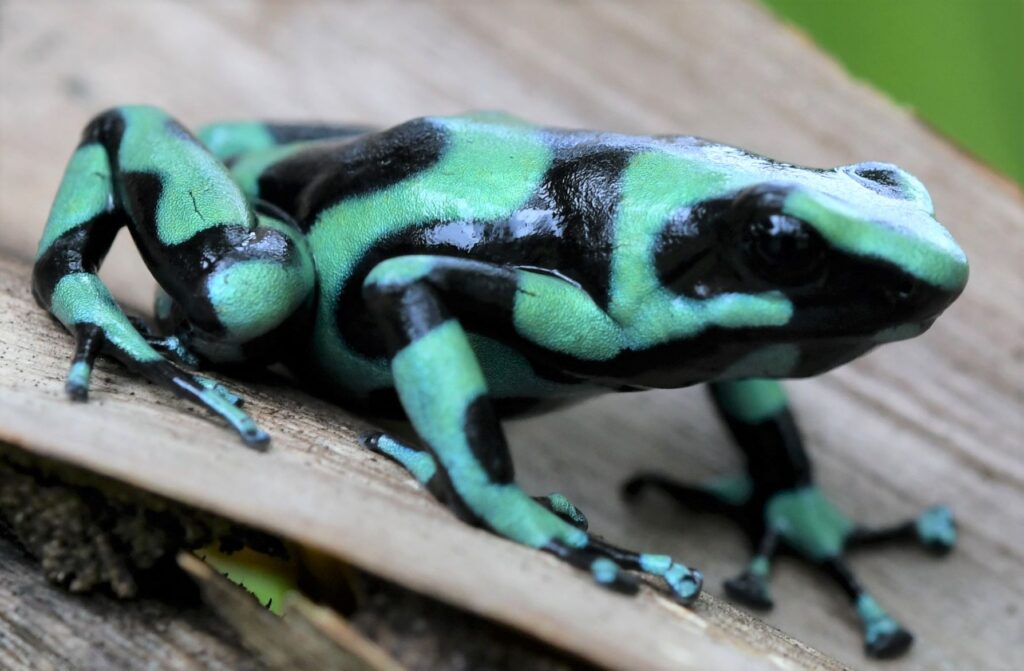
so had about a million other visitors in Costa Rica. Nonetheless, these were fascinating little amphibians, unusual for being diurnal (bright colors warn predators of their toxic skin), conspicuous and easily captured from the forest floor.
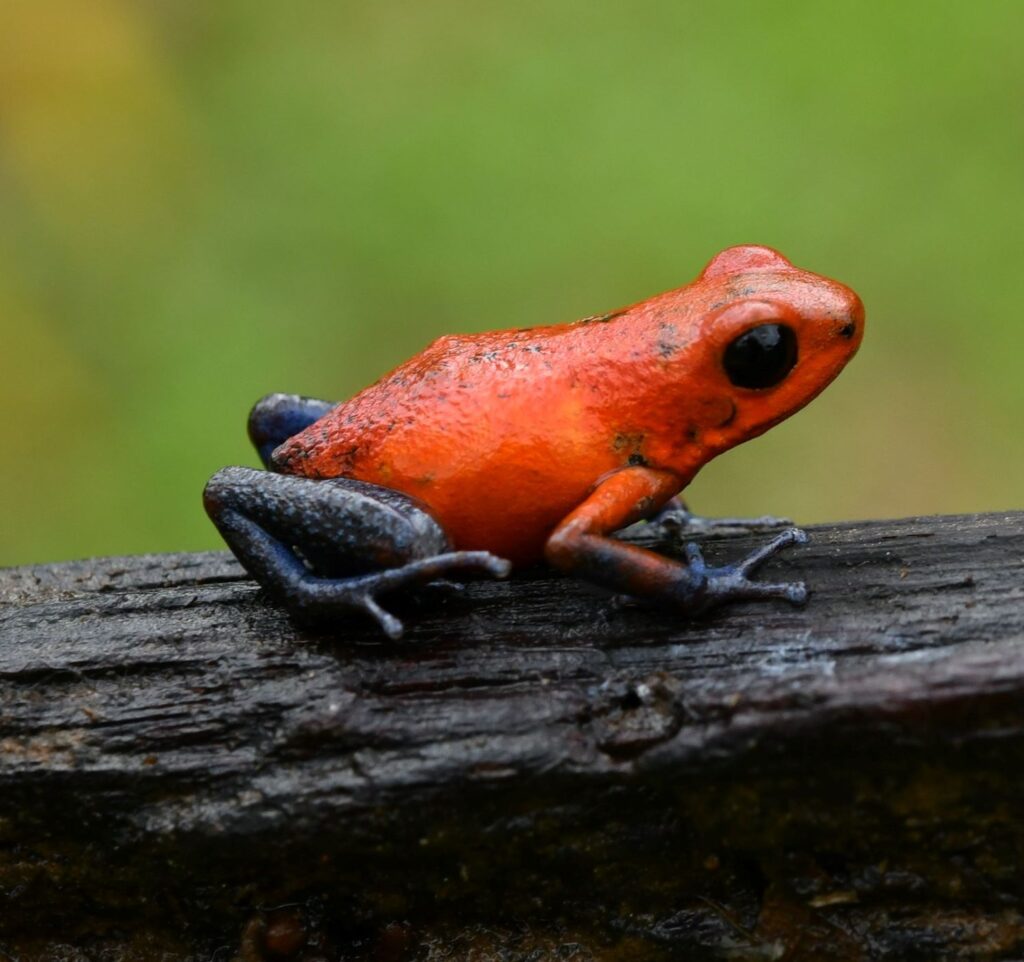
La Laguna del Lagarto Ecolodge facilities, food and service were excellent and affordable. I paid a discounted rate of $62 per night (24 nights), including two daily meals and laundry service. Adolfo and his well trained kitchen staff prepared delicious meals, always within the relatively non-traditional confines of my dietary range, i.e. no rice, bread, beans, corn, potato, tomato, onion, and so on. I returned the favor by making occasional grocery and supply runs into Pital.
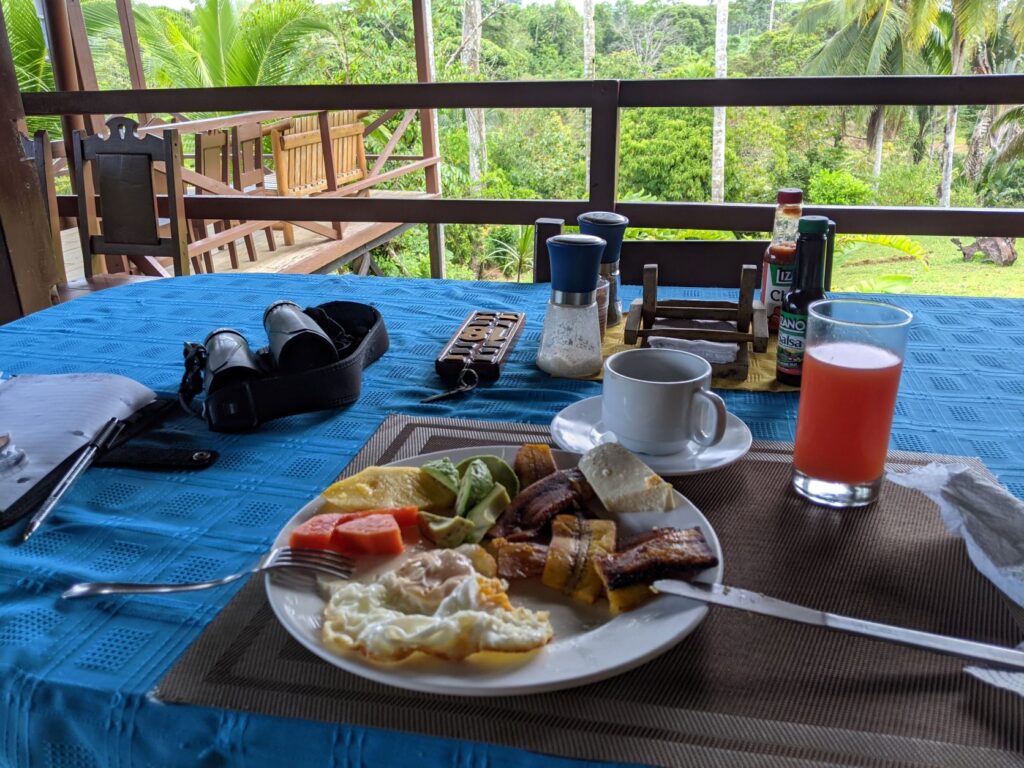
Since I had visited LDL during the Spring of 2021, the kitchen staff was already familiar with the foods I had labeled “yes” and “no” on a paper print-out. Adolfo, who had trained with gourmet chefs in France, was endlessly creative in the kitchen. I was always pleasantly surprised with the meals he served. Even though the pandemic had subsided by this time and tourism in Costa Rica was slowly returning to normal, I dined alone mostly, keeping my notebook, binocular and camera close at hand.
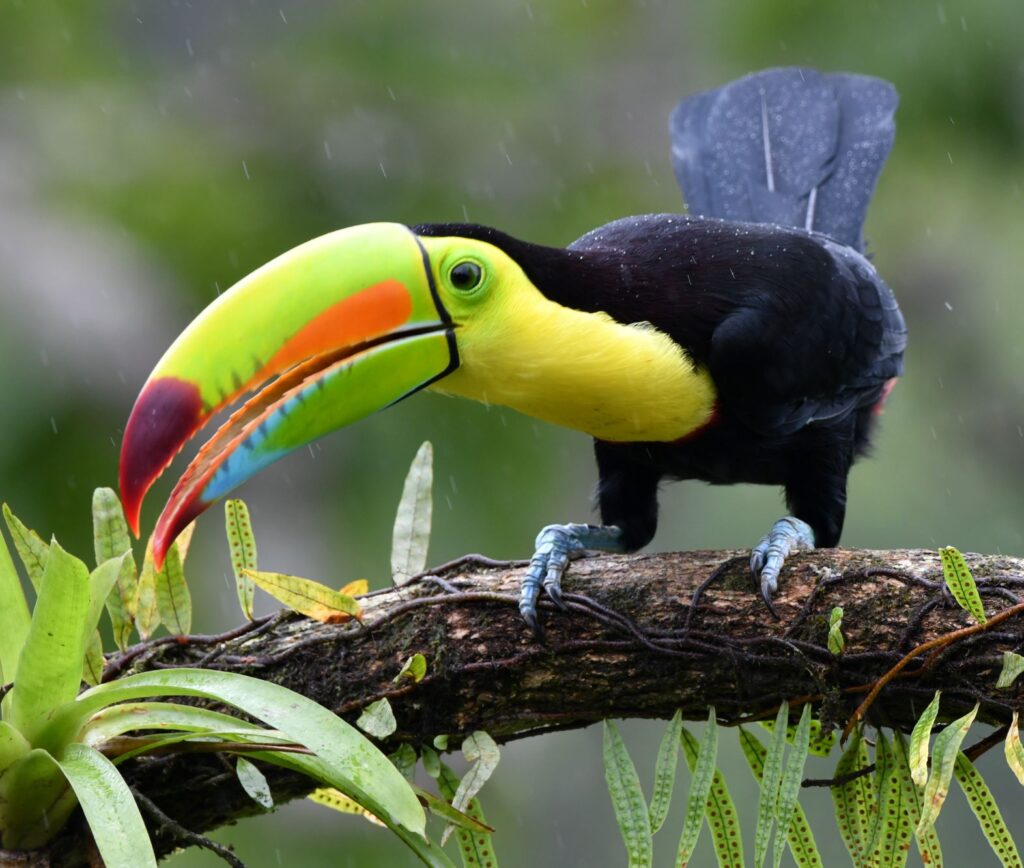
Occasionally, groups of birders, wildlife photographers, and families would drop in and stay or one or two nights at LDL. Those times were always exciting; more eyes searching for birds and wildlife usually meant some new, interesting sightings. One afternoon, Rick and Ann Prum from Yale University showed up; it was great spending a couple of more days with them, birding and socializing at mealtimes.
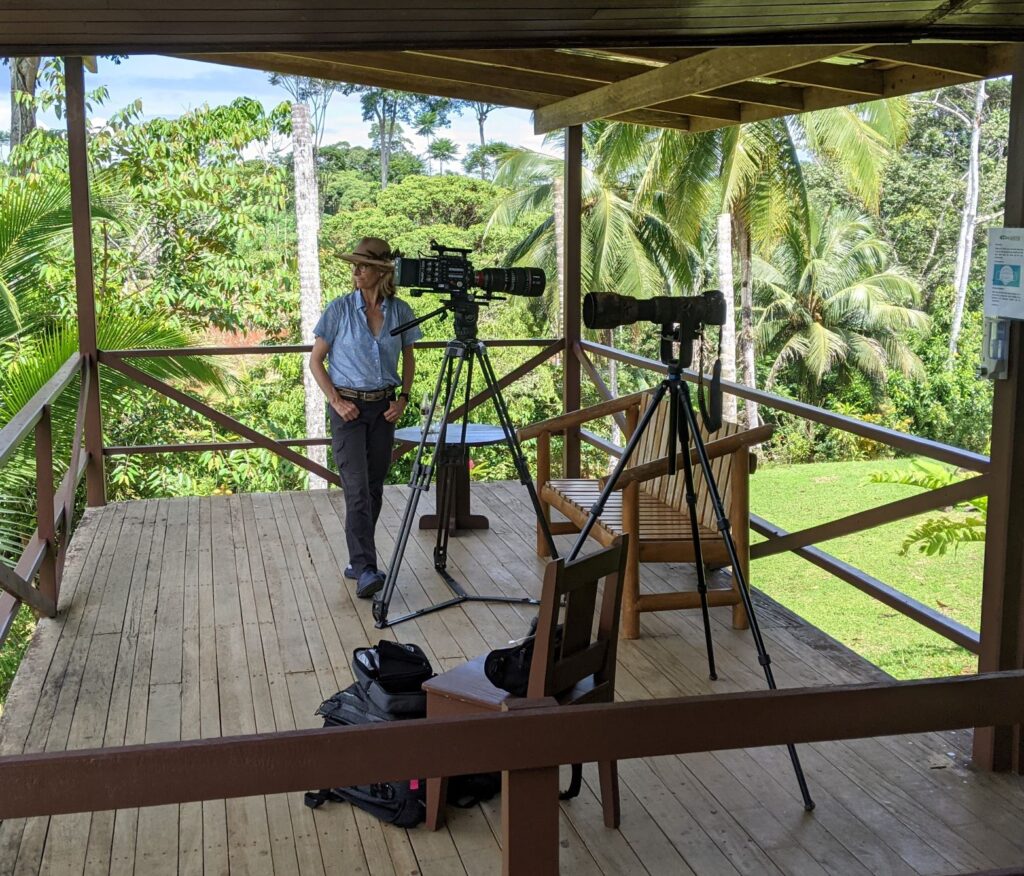
As usual, I was given a room near the back of the main lodge (#18), which was quiet and convenient for my early morning bird surveys and photography. The room had a double bed, comfortable mattress and pillows, a wall-mounted reading light over the bed (a much appreciated upgrade), ceiling fan and two windows with curtains. A clean and functional bathroom was attached. Linens were changed daily or whenever I requested. My laundry was usually dried, folded and returned to me the same day. LDL accomodations, though basic (i.e. 2-star), were perfect; the sounds of birds and other wildlife in the forest awakened me each morning. This was as close to paradise as any field biologist could possibly want.

Of course, birding and bird photography are the main attractions at LDL. The place has deservedly achieved international acclaim for both a high diversity of birds and excellent facilities designed for bird photography.
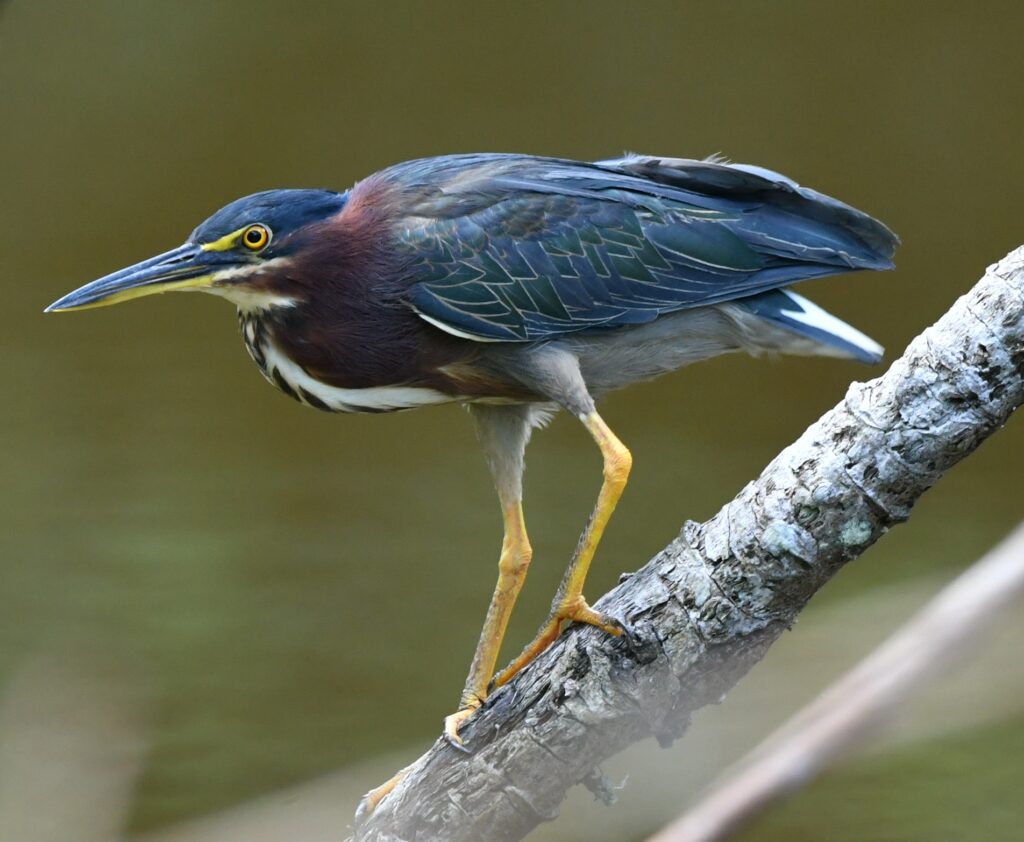
In early March, 2021, we installed an insect light trap, intending to attract forest birds. Unfortunately, it didn’t pan out. Relatively few insects and even fewer birds showed up. Kurt Schmack noted that, for unknown reasons, insect populations at LDL had declined over the past decade. He suspected it was due to the widespread use of insecticides in the regional pineapple farms. That reasoning seemed plausible, though rather far-fetched. I wondered if low numbers of insects correlated with the constant night lighting at LDL, thus having a cumulative impact on local insect diversity and abundance — a testable hypothesis. Next year, I am planning to install the same insect light trap at Loma Lapa Verde to see if the same results are obtained (LLV is across the main road and about 200 m from LDL; there has never been artificial lighting at LLV).
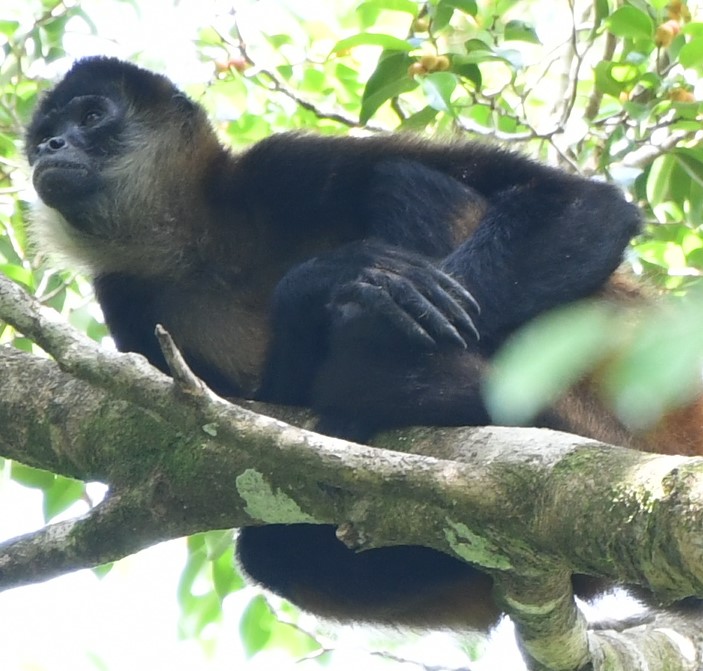
The outlook for La Laguna Del Lagarto is uncertain. Kurt recently announced his intention to sell the resort and associated land (about 500 ha). I imagine that everyone familar with LDL is hoping whatever becomes of the property, that it will continue to be maintained as a world-class ecolodge. The last I heard, LDL was on the market for US $6.5 million and some serious offers were being considered.
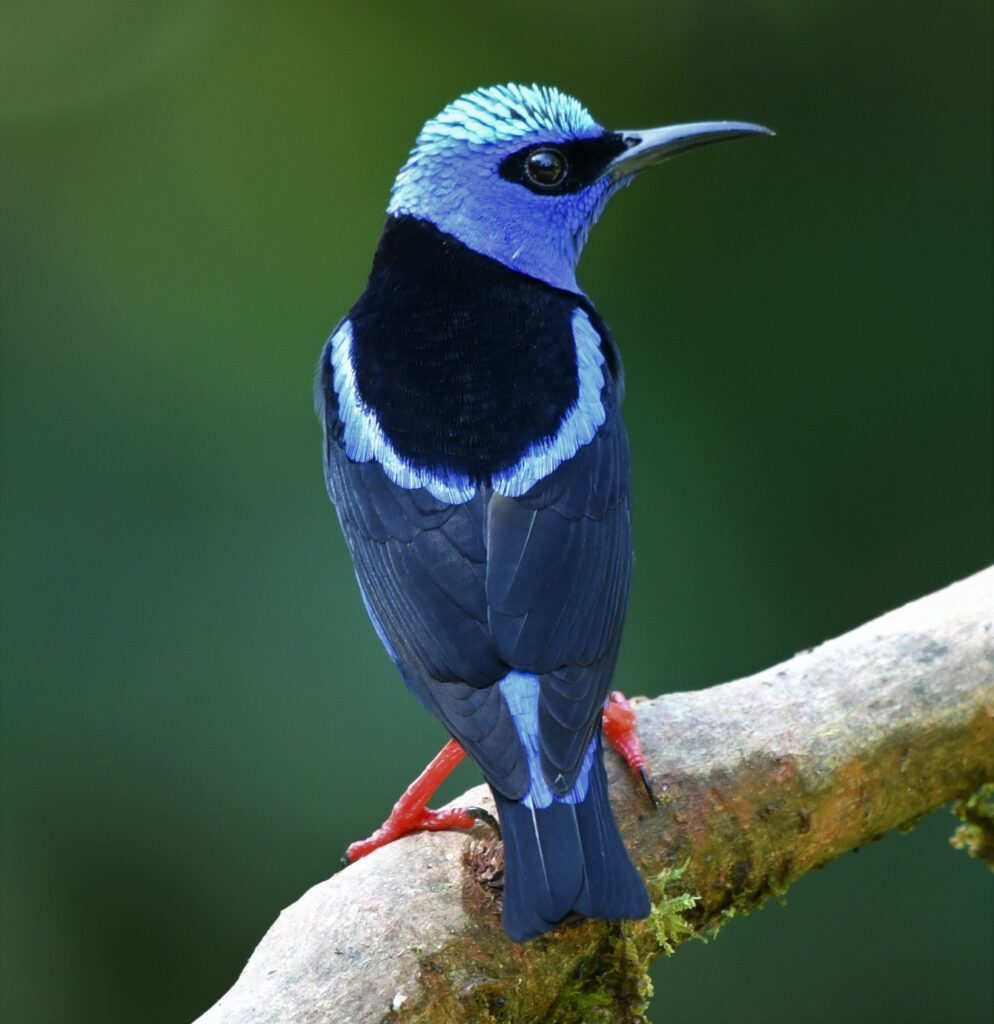
Many wonderful experiences await visitors at LDL. For example, birders, wildlife photographers, naturalists and armchair biologists, could spend an entire day on the dining room deck overlooking the forest, gardens and bird feeders, and see perhaps fifty species of bird. Many of those birds are habituated to human presence and regularly visit the banana feeders, placed at an optimal distance for photography. Each day one or more new species appears. When combined with visits to local bird gardens, i.e. Adolfo’s & Diego’s (Santa Rita), Henry’s & Didier’s (Boca Tapada) and the new Loma Lapa Verde Reserve, this is definitely one of the most exciting places in Central America for birding and wildlife photography.

La Laguna Del Lagarto, Santa Rita, Boca Tapada, R 250, Pital and Adjacent Areas, Alajuela-Heredia, Costa Rica – Annotated Bird List (October 17 – November 10, 2021) Callyn Yorke
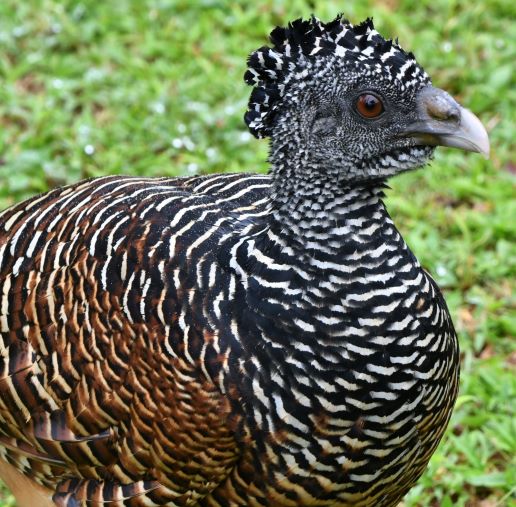
The Weather during my visit varied from sunny and warm (28 C to 35 C), to overcast with variable, light to heavy showers, afternoon and evening thunderstorms; winds were mostly from the NE at 2 – 20 km/hr.
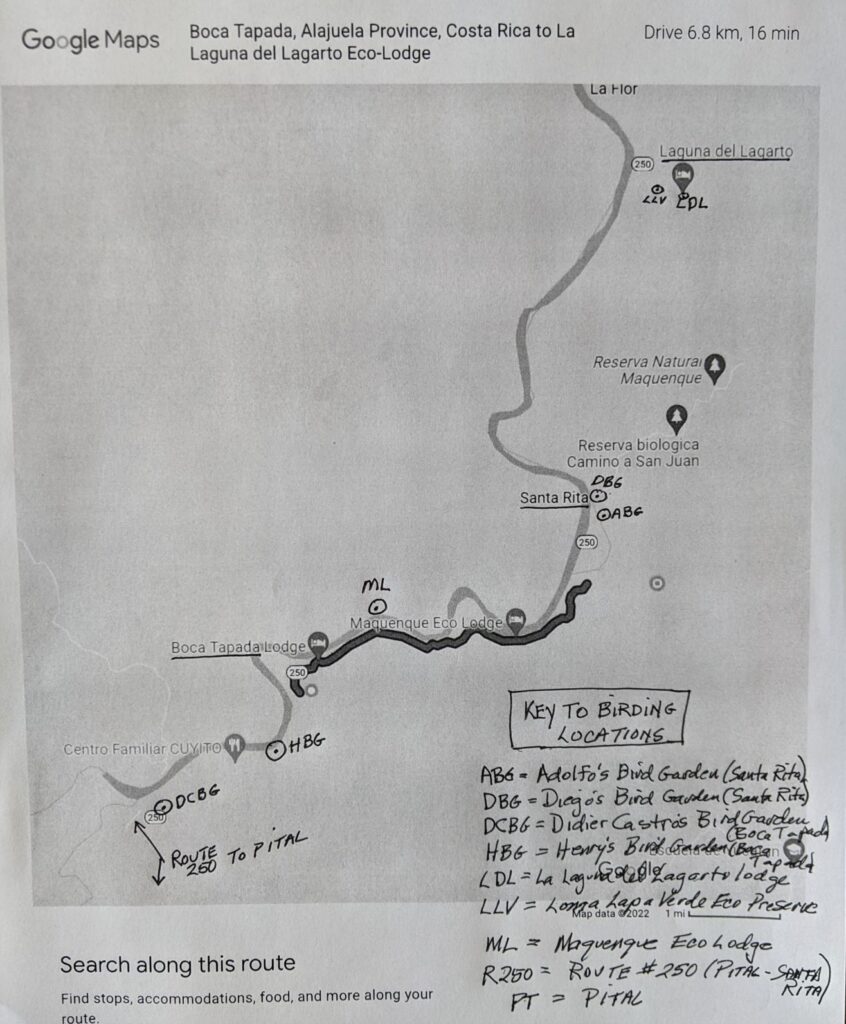
Explanation of Symbols
Locations: ABG = Adolfo’s Bird Garden, Santa Rita; DBG = Diego’s Bird Garden, Santa Rita; DCBG = Didier Castro’s Bird Garden, Boca Tapada; HBG = Henry’s Bird Garden, Boca Tapada; LDL = Laguna Del Lagarto Ecolodge; LLV = Loma Lapa Verde Ecological Reserve; ML = Maquenque Ecolodge; PT = Pital; R 250 = Route #250 Santa Rita – Pital. Ubiq = Ubiquitous and widespread in appropriate habitat.
Abundance: Numbers following each species represent the maximum number of individuals found during a survey.
Frequency: C = Commonly found or expected to be found during all or most surveys; FC = Fairly commonly found in more than half of the surveys; UC = Uncommonly found in less than half of the surveys; R = Rarely found, i.e. only once during multiple surveys.
Plumage, sex, age (if known): alt = alternate, breeding plumage); bsc = basic, non-breeding plumage); trans = transitional i.e. molting into bsc or alt plumage; m = male; f = female; ad= adult; imm = immature.
Behavior, Position, etc.: agl = in flight, approximate height (m) above ground level; greg. = gregarious; mid = middle height level, e.g. in trees, forest; msf = mixed species flock.
Systematics and Nomenclature follow Avibase and Clements (2021)
- Great Tinamou Tinamus major 1 vocal at 1720 hrs. (unseen) LDL , FC
- Black-bellied Whistling Duck Dendrocygna autumnalis 20 greg. on muddy shore of Iguana Lagoon, north R250, Boca del Ceiba, Rio San Juan, UC
- Muscovy Duck Cairina moschata 2 (m,f) a pair swimming and perched at edge of main pond, LDL, north R250, C
- Gray-headed Chachalaca Ortalis cinereiceps 3 greg., ML, FC
- Crested Guan Penelope purpurascens 2 subcanopy of forest edge and tall second-growth, LDL, LLV, ML, UC
- Great Curassow Crax rubra 18 (m,f, imm) greg. on ground, garden; flying up to feeder, LDL, C
- Feral Rock Pigeon Columba livia 20 greg., central PT, C
- Short-billed Pigeon Patagioenas nigrirostris 3 greg, pairs in subcanopy of garden and forest edge trees, utility lines, LDL, R250, FC
- Ruddy Ground Dove Columbina talpacoti 20 greg, pairs widespread on roadside ruderal and edge of pasture, towns and villages, R250
- White-tipped Dove Leptotila verreauxi 2 individuals and pairs on short grass beneath feeder, LDL, C
- White-winged Dove Zenaida asiatica 1 on utility line, PT, UC
- Groove-billed Ani Crotophaga sulcirostris 8 greg. family groups in tall grass and second-growth in pastures and roadside ditches, R250, C
- Squirrel Cuckoo Piaya cayana 1 subcanopy of tall garden and forest edge trees, ubiq, C
- Short-tailed Nighthawk Lurocalis semitorquatus 1 flying around garden and open areas at edge of forest at dusk, LDL, UC
- Common Pauraque Nyctidromus albicollis 2 flushed from roadway in evening, R250, FC
- White-collared Swift Streptoprocne zonaris 3 loosely gregarious, making wide circles 100-150 m agl, lower with heavy cloud cover, LDL, FC
- Chaetura sp. 2 flying 50- 100 m agl over open areas, LDL, FC
- White-necked Jacobin Florisuga mellivora 3 at feeders, ABG, DBG, C
- Long-billed Hermit Phaethornis longirostris 1 garden flowering shrubs and forest edge, LDL, ABG, DBG, C
- Stripe-throated Hermit Phaethornis striigularis 2 garden flowering shrubs and forest edge, LDL, FC
- Green-crowned Brilliant Heliodoxa jacula 1 garden flowers and forest edge, LDL, UC
- Crowned Woodnymph Thalurania columbica 1 mid to canopy level of forest, LDL, UC
- Scaly-breasted Hummingbird Phaeochroa cuvierii 1 edge of forest and garden, LDL, AG, UC
- Rufous-tailed Hummingbird Amazilia tzacatl 2 flowering garden shrubs, LDL, LLV AG, C
- Russet-naped Woodrail Aramides albiventris 5 (ad, imm) greg., on lawn in garden; at seed feeder, LDL, C
- Purple Gallinule Porphyrio martinica 1 edge of lagoon and pasture- wetlands, R250, UC
- Southern Lapwing Vanellus chilensis 1 edge of pasture and wetlands, Tilapia ponds, R250, PT FC
- Northern Jacana Jacana spinosa 8 pairs at edge of lagoons and wetlands, LDL, ML, R250, FC
- Spotted Sandpiper Actitis macularius 1 foraging at edge of lagoons and streams, LDL, DG, FC
- Greater Yellowlegs Tringa melanoleuca 2 a pair in a flooded, alluvial field in an industrial section of town, PT, R
- Anhinga Anhinga anhinga 1 perched on snag in main lagoon, LDL, ML, FC
- Bare-throated Tiger-Heron Tigrisoma mexicanum 1 (ad) at edge of main lagoon, LDL, UC
- Great Egret Ardea alba 5 individuals in flooded pasture and wetlands, edge of lagoons, ML, R250, FC
- Snowy Egret Egretta thula 2 flooded pasture, wetlands and edge of lagoons, LDL, ML, R250, FC
- Little Blue Heron Egretta caerulea 3 (ad) edge of main lagoon, ML, R250, UC
- Cattle Egret Bubulcus ibis 12 greg. flooded fields and pasture, R250, DBG, FC
- Green Heron Butorides virescens 1 edge of main lagoon, LDL, DCBG, FC
- Green Ibis Mesembrinibis cayennensis 2 vocal, flying at dawn and dusk at edge of main lagoon, LDL, UC
- King Vulture Sarcoramphus papa 12 (ad.,imm) greg. at cow head feeding station; 2-3 individuals perched together in surrounding tall trees; most habituated and perhaps now attracted to human presence, even after the removal of the window (one-way glass) of Bence Mate’s vulture photography bunker; often associated with BLVU at feeding station, LLV, LDL, FC
- Black Vulture Coragyps atratus 30 greg. resident at LDL, most abundant when the vulture feeding station is supplied with a cow head. Elsewhere, flocks circling high overhead and on roof tops and ground at lodge, largely habituated to human presence.
- Turkey Vulture Cathartes aura 200 + loosely greg., migratory flocks occasionally seen 100m + agl; otherwise relatively few or no birds at vulture feeding station with BLVU and KIVU, LDL, FC
- White-tailed Kite Elanus leucurus 1 perched in lone tree at edge of pineapple plantation and shrimp farm, PT, UC
- Ornate Hawk-Eagle Spizaetus ornatus 1 ad. perched in subcanopy of tall trees at edge of main lagoon and second-growth woodland, LLV, LDL, R
- Accipiter sp. 1 a medium-sized, darkish hawk, seen briefly perched at about 15 ft. agl in the subcanopy of a tree, appearing in a typical, upright Accipiter posture, then flying rapidly around the secondary woodland and out of view. A potentially significant sighting with reference to confirmed (photo-documented) records of Gray-bellied Hawk (Accipiter poliogaster) at LDL. This South American species has only recently been discovered in Costa Rica, LLV, R.
- Roadside Hawk Rupornis magnirostris 3 frequently seen perched in roadside trees, and at the edge of secondary forest, ubiq.,FC
- Semiplumbeous Hawk Leucopternis semiplumbeus 1 flying over forest and open areas, LDL, UC
- Gray Hawk Buteo plagiatus 2 (ad) individuals perched in isolated trees, on utility lines, roadside and pasture; circling 30m agl over forest and open areas, relatively habituated to human presence, LDL, LLV, R250, FC
- Broad-winged Hawk Buteo platypterus 1 flying with and/or associated with migrating TUVU and SWHA, LDL, R
- Swainsons Hawk Buteo swainsoni 8 greg., flying southwest (migrating?) with TUVU, 50-80m agl over open areas and forest, LDL, UC
- Slaty-tailed Trogon Trogon massena 2 (m,f) subcanopy at edge of forest, LDL, AG, R250, FC
- Broad-billed Motmot Electron platyrhynchum 1 mid-level in forest, along hill trail, ML, UC
- Ringed Kingfisher Megaceryle torquata 1 flying around main lagoon and perched in adjacent forest edge subcanopy, LDL, UC
- Amazon Kingfisher Chloroceryle amazona 2 flying low over main lagoon, ML, UC
- Green Kingfisher Chloroceryle americana 1 on snags and posts in main lagoon; diving into bait fish enclosures, LDL, FC
- Pied Puffbird Notharchus tectus 1 in subcanopy of tall at forest edge LDL, UC
- White-fronted Nunbird Monasa morphoeus 1 in subcanopy of tall tree in garden, LDL, UC
- Collared Aracari Pteroglossus torquatus 5 greg., frequent at banana feeders, LDL, LLV, AG, HBG, C
- Yellow-throated Toucan Ramphastos ambiguus 4 vocal, greg., pairs frequent at banana feeders, LDL, LLV, HBG, C
- Keel-billed Toucan Ramphastos sulfuratus 3 greg., pairs frequent at banana feeders, forest edge, LDL, LLV, HBG, R250
- Olivaceous Piculet Picumnus olivaceus 1 in isolated trees at edge of lagoon and roadside near DCBG, R250, LDL, UC
- Black-cheeked Woodpecker Melanerpes pucherani 2 (m,f) vocal, pairs frequent at banana feeder, garden trees, LDL, AG, HBG, DCBG, C
- Pale-billed Woodpecker Campephilus guatemalensis 1 (m,f) on main trunks and limbs of large trees at edge of lagoon, gardens and forest, LDL, UC
- Lineated Woodpecker Dryocopus lineatus 1 (m) on main trunk of large garden trees, DBG, LDL, UC
- Chestnut-colored Woodpecker Celeus castaneus 1 in garden tree next to banana feeder, LDL, ABG, UC
- Rufous-winged Woodpecker Piculus simplex 1 low to mid. level on garden trees, ABG, LDL, UC
- Crested Caracara Caracara plancus 3 (ad, imm) perched in subcanopy in isolated trees of pasture and semi-open country; on ground at vulture feeding station, LDL, LLV, R250, FC
- Yellow-headed Caracara Milvago chimachima 1 in isolated tree, pasture wetland, R250, PT, UC
- Laughing Falcon Herpetotheres cachinnans 1 in subcanopy of tall garden and isolated trees near forest edge, LDL, R250, UC
- Bat Falcon Falco rufigularis 2 flying around semi-open areas at dusk, LDL, UC
- Orange-chinned Parakeet Brotogeris jugularis 5 greg., frequent at banana feeders, ML, ABG, HBG, C
- Brown-hooded Parrot Pyrilia haematotis 13 greg., shy, occasional at banana feeders, ML, LDL, UC
- White-crowned Parrot Pionus senilis 5 greg., pairs flying over lodge and in canopy at forest edge, LDL, UC
- Red-lored Parrot Amazona autumnalis 7 greg., vocal, small flocks in canopy at forest edge and in garden trees, LDL, R250, C
- Mealy Parrot Amazona farinosa 2 pairs flying over lodge and in adjacent forest canopy, LDL, LLV, FC
- Olive-throated Parakeet Eupsittula nana 8 greg., vocal flocks flying over clearings, LDL, R250, FC
- Great Green Macaw Ara ambiguus 6 greg., vocal pairs and small flocks flying over clearings early morning and late afternoon, LDL, FC
- Scarlet Macaw Ara macao 20 vocal, pairs and small flocks in canopy at edge of forest, flying over clearings early morning and late afternoon, ubiq. FC
- Slaty Antwren Myrmotherula schisticolor 1 vocal (unseen, ID- DC), forest edge, LDL, UC
- Dot-winged Antwren Microrhopias quixensis 2 active low at edge of forest trail, LDL, UC
- Chestnut-backed Antbird Poliocrania exsul 1 vocal (unseen) forest interior, LDL, UC
- Wedge-billed Woodcreeper Glyphorynchus spirurus 1 mid-level main limbs at edge of forest, LDL, UC
- Northern Barred Woodcreeper Dendrocolaptes sanctithomae 1 lower to mid-level main limbs at forest edge, LDL, FC
- Cocoa Woodcreeper Xiphorhynchus sussurans 1 mid to upper level of interior forest edge trees, LDL, UC
- Streak-headed Woodcreeper Lepidocolaptes souleyetii 2 vocal, individuals at mid-upper level of forest edge trees, LDL, FC
- Slaty Spinetail Synallaxis brachyura 1 mid-level forest edge trees, LDL, R250, UC
- White-collared Manakin Manacus candei 2 vocal, garden shrubs and second-growth; apparent lek in dense understory of LLV; LDL, FC
- Masked Tityra Tityra semifasciata 2 canopy of forest edge and garden trees, LDL, FC
- Cinnamon Becard Pachyramphus cinnamomeus 2 pairs and individuals in subcanopy at forest edge and garden trees, LDL, UC
- Common Tody-Flycatcher Todirostrum cinereum 1 active in second-growth, garden shrubs, LDL, HBG, R250, FC
- Brown-capped Tyrannulet Ornithion brunneicapillum 1 lower-mid level of second-growth, forest edge, LDL, UC
- Yellow-bellied Elaenia Elaenia flavogaster 1 low to mid-level in second-growth bordering clearings, R250, HBG, UC
- Mistletoe Tyrannulet Zimmerius parvus 1 mid to upper-mid level of trees and taller shrubs, second-growth and forest edge, LDL, FC
- Olive-sided Flycatcher Contopus cooperi 2 individuals perched on tall snags in pasture, roadside, and open areas, LLV, LDL, R250, FC
- Eastern Wood Pewee Contopus virens 1 low-middle second-growth, forest edge, LDL, R250, FC
- Tropical Pewee Contopus cinereus 2 sallies from low perch in second-growth bordering pasture, roadside fences, secondary forest, LDL, R250, FC
- Empidonax sp. c.f. virescens 1 bw fence lines beneath row of shade trees bordering pasture, roadsides, R250, FC
- Long-tailed Tyrant Colonia colonus 1 in tree at edge of secondary forest and lagoon, ML, UC
- Bright-rumped Attila Attila spadiceus 1 vocal, flying between garden shrubs and trees, LDL, FC
- Dusky-capped Flycatcher Myiarchus tuberculifer 1 subcanopy of garden trees, second-growth bordering open areas, LDL, LLV, R250, FC
- Great Crested Flycatcher Myiarchus crinitus 1 second-growth at edge of clearings, garden, LDL, LLV, UC
- Great Kiskadee Pitangus sulphuratus 10 vocal, gregarious, pairs on utility lines, roadside second-growth, gardens, banana feeders, ubiq. C
- Boat-billed Flycatcher Megarynchus pitangua 5 vocal, gregarious, gleaning insects from foliage in canopy of garden and secondary forest trees, LDL, FC
- Social Flycatcher Myiozetetes similis 5 gregarious, vocal, sallying from mid-level of second-growth, utility lines, open areas and roadways, ubiq., C
- Gray-capped Flycatcher Myiozetetes granadens 1 edge of second-growth, gardens, clearings, LDL,R250, UC
- White-ringed Flycatcher Conopias albovittatus 1 sallying from low perches in trees at edge of second-growth, gardens, DCBG, R250, FC
- Tropical Kingbird Tyrannus melancholicus 8 pairs sallying from utility lines and roadside trees adjacent to pasture, villages and other homesteads, ubiq. C
- Red-eyed Vireo Vireo olivaceus 2 canopy at forest edge, LDL, FC
- Yellow-green Vireo Vireo flavoviridis 1 subcanopy of garden trees and forest edge, msf, LDL, UC
- Southern Rough-winged Swallow Stelgidopteryx ruficollis 6 roadside utility lines, flying low over pasture and open areas, R250, PT, FC
- Gray-breasted Martin Progne chalybea 2 flying over town and adjacent fields, PT, R250, FC
- Mangrove Swallow Tachycineta albilinea 6 gregarious, flying over San Juan River crossing, alighting on ferry and docks, ML, C
- Barn Swallow Hirundo rustica 8 pairs and loose flocks flying low over wet meadow, pasture and open areas, ubiq, FC
- Cliff Swallow Petrochelidon pyrrhonota 6 small flocks circling and flying direct, 30 -150 m agl over open fields, pasture, towns, ubiq., FC
- White-browed Gnatcatcher Polioptila bilineata 1 second-growth, garden trees, forest edge, mid level, LDL, UC
- Southern House Wren Troglodytes musculus 2 (one molting tail) vocal in mornings (although House Wren populations in this region are still considered by some authorities as conspecific, to my ear, the songs are distinctly different in pitch, frequency and duration, c.f. Western North American T. aedon), active on lawn in garden and on floor of dining area, LDL, PT, C
- Gray Catbird Dumetella carolinensis 1 staying mostly concealed, low in garden shrubs; one bird collided with the window of my room and after a few minutes being held in hand, evidently recovered and flew off, LDL, UC
- Swainson’s Thrush Catharus ustulatus 2 on ground on forest trails and shady edge, LDL, HBG, DBG, FC
- Wood Thrush Hylocichla mustelina 2 rather shy, staying in shade on ground at edge of stream forest and forest trail near insect light trap, another bird following army ants, LDL, HBG, FC
- Clay-colored Thrush Turdus grayi 4 individuals on ground and on low limbs at forest edge and in garden, homesteads, villages, roadside, ubiq., FC
- House Sparrow Passer domesticus 10 (m,f) gregarious, vocal, apparently highly local in small numbers; weedy industrial area in town, PT, C
- Yellow-throated Euphonia Euphonia hirundinacea 2 (m,f) pairs frequent at banana feeders, LDL, HBG, ABG, C
- Olive-backed Euphonia Euphonia gouldi 4 (m,f) pairs frequent at banana feeders, LDL, ABG, C
- Stripe-headed Sparrow Peucaea ruficauda 2 secretive, on ground beneath banana feeder, low in dense second-growth,DBG, LLV, UC
- Black-striped Sparrow Arremonops conirostris 1 on ground at edge of secondary forest, garden, LDL, FC
- Yellow-breasted Chat Icteria virens 1 seen briefly in flowering garden shrubs next to driveway, LDL, R
- Eastern Meadowlark Sturnella magna 2 in pasture near La Legua marsh, R250, PT, UC
- Chestnut-headed Oropendola Psarocolius wagleri 3 greg., in garden trees, ABG, LDL, HBG, UC
- Montezuma Oropendola Psarocolius montezuma 5 (m,f) greg., pairs occasionally coming to banana feeders, LDL, ABG, R250, ML, FC
- Black-cowled Oriole Icterus prosthemelas 3 (m,f, imm & molting) pairs frequenting banana feeders, LDL, ABG, DCBG, C
- Bullock’s Oriole Icterus bullockii 2 (m,f) at banana feeders and second-growth, isolated tree subcanopy, forest edge, LDL, UC
- Baltimore Oriole Icterus galbula 6 (m,f) greg., at and ain trees around banana feeders, canopy of adjacent trees & shrubs, LDL, FC
- Red-winged Blackbird Agelaius phoeniceus 2 (m) La Legua marsh next to roadway, R250, PT, UC
- Bronzed Cowbird Molothrus aeneus 15 (m,f) gregarious on ground in pasture and roadside, R250, DCBG, FC
- Giant Cowbird Molothrus oryzivorus 2 (m) on ground next to seed feeder; another in neaby garden tree subcanopy, LDL, UC
- Melodius Blackbird Dives dives 3 (m,f) greg., vocal, in garden, pairs at banana feeder, LDL, C
- Great-tailed Grackle Quiscalus mexicanus 10 (m,f) vocal, gregarious, in villages and towns, pasture, ubiq. C
- Louisiana Waterthrush Parkesia motacilla 1 walking on shady streambank, DBG, UC
- Northern Waterthrush Parkesia noveboracensis 1 on ground in garden beneath banana feeder, LDL, FC
- Golden-winged Warbler Vermivora chrysoptera 1 (m) in msf with SHWC and REVI, moving quickly through tree canopies adjacent to main lagoon, LDL, UC
- Prothonotary Warbler Protonotaria citrea 1 (m) in branches of fallen tree at edge of lagoon, R250 – north (Iguana Lagoon Cafe, near Rio San Juan), UC
- Tennessee Warbler Leiothlypsis peregrina 1 canopy of garden trees, ABG, UC
- Gray-crowned Yellowthroat Geothlypis poliocephala 1 edge of roadside marsh; garden shrubs, R250, PT, LDL, UC
- Common Yellowthroat Geothlypis trichas 1 in garden shrubs, LDL, UC
- Bay-breasted Warbler Setophaga castanea 2 (m,f, imm) in msf with REVI, CSWA, BLWA, canopy of garden and forest edge, LDL, LLV, DBG, FC
- Blackburnian Warbler Setophaga fusca 2 (m,f) in msf with other warblers and insectivorous birds, canopy of garden and forest edge, LDL, UC
- Yellow Warbler Setophaga petechia 1 (m) second-growth at edge of lagoon, roadside drainage, gardens, LDL, R250, DBG, UC
- Chestnut-sided Warbler Setophaga pensylvanica 2 (m,f) in msf with REVI, BBWA, and other insectivorous birds, canopy of garden and forest edge trees, LDL, HBG, DCBG, R250, C
- Buff-rumped Warbler Myiothlypis fulvicauda 1 on ground near stream, DBG, FC
- Wilson’s Warbler Cardellina pusilla 2 roadside trees, second-growth near water, R250, PT, UC
- Summer Tanager Piranga rubra 3 (m,f, imm) in canopy of garden trees, at banana feeder, LDL, ABG, HBG, LLV, FC
- Scarlet Tananger Piranga olivacea 2 (m,f, imm) garden tree canopy, forest edge, LDL, DBG, FC
- Rose-breasted Grosbeak Pheucticus ludovicianus 2 (m, f) in canopy of garden trees around feeder, LDL, DCBG, UC
- Blue-black Grosbeak Cyanoloxia cyanoides 1 (m) in tall, grassy field adjacent to homestead, DCBG, UC
- Scarlet-rumped Tanager Ramphocelus passerinii 6 (m,f) greg. pairs frequent at banana feeders, ubiq., C
- Blue-gray Tanager Thraupis episcopus 4 pairs frequent at banana feeders and in canopy of adjacent garden, forest, ubiq., C
- Palm Tanager Thraupis palmarum 2 pairs frequent at banana feeders and in canopy of adjacent garden trees, ubiq., C
- Golden-hooded Tanager Stilpnia larvata 2 occasional at banana feeders; frequent in canopy of garden and forest edge, LDL, AG, HG, DBG, C
- Plain-colored Tanager Tangara inornata 3 greg., pairs fairly freqent at banana feeders, LDL, DBG, FC
- Shining Honeycreeper Cyanerpes lucidus 2 (m,f) pairs fairly frequent at banana feeders, LDL, DBG, ABG, HBG, FC
- Red-legged Honeycreeper Cyanerpes cyaneus (m,f) 3 pairs frequent at banana feeders, LDL, DBG, HBG, ABG, C
- Green Honeycreeper Chlorophanes spiza 3 (m,f) pairs frequent at banana feeders, LDL, DBG, HBG, ABG, C
- Blue-black Grassquit Volatinia jacarina 4 (m,f) roadside ruderal and tall grass, fence lines, R250, DCBG, FC
- Nicaraguan Seed-Finch Sporophila nuttingi 5 greg. very locally distributed in tall grass of overgrown drainage ditch and adjacent pasture, R250, DCBG, FC
- Variable Seedeater Sporophila corvina 20 (m,f) gregarious, loose flocks in roadside tall grass, fence lines, gardens, pasture, R250, C
- Morelet’s Seedeater Sporophila morelleti 5 (m,f) loosely gregarious in roadside tall grass, fence lines, pasture, dense second-growth, R250, FC
- Bananaquit Coereba flaveola 2 garden flowering shrubs, edge of forest, ubiq., C
- Yellow-faced Grassquit Tiaris olivaceus 4 gregarious, roadside ruderal, tall grass, overgrown pasture, fence lines, gardens, R250, DBG, FC
- Buff-throated Saltator Saltator maximus 2 tall second-growth, forest edge, garden trees, ubiq., FC
- Grayish Saltator Saltator grandis 2 tall second-growth, forest edge, DCBG, R250, UC
____________________________________________________________________________________________
Nosara, Rio Nosara, Playa Guiones, Playa Garza, Ostional, Guanacaste Province, Costa Rica (November 10- 26, 2021) Callyn Yorke
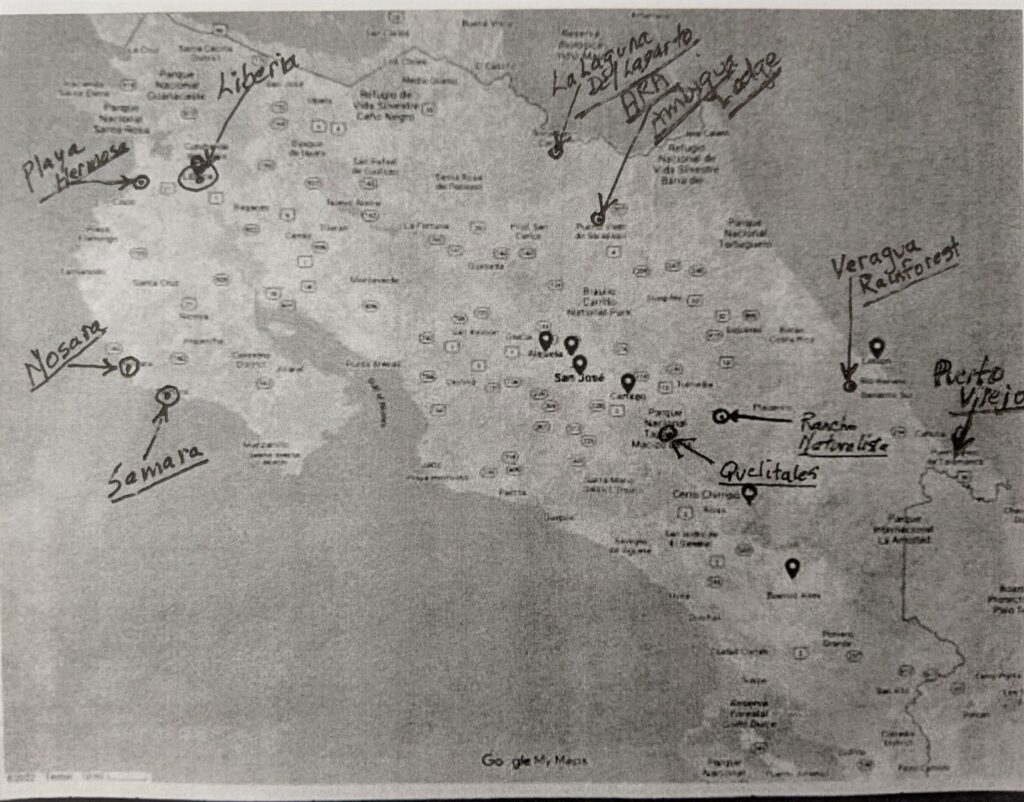
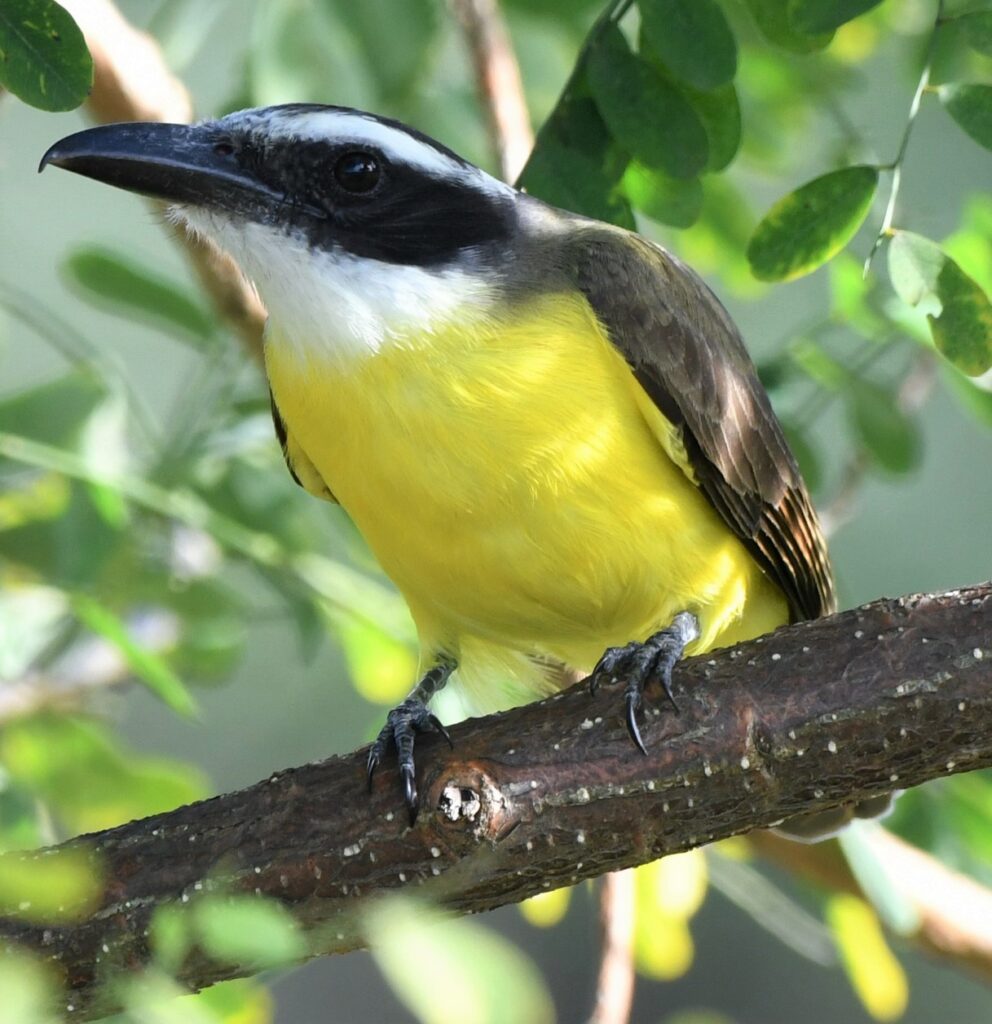
Nosara, unlike the quiet coastal community of Samara, about 25 km to the south (see map above and previous trip reports), was a rapidly developing resort town; fast and furious traffic on Route 160, perpetual congestion on narrow, deeply pot-holed roads aternating with dust-mud-dust, and hoardes of kids on ATVs, was the predominant vibe. Finding an undisturbed area for birding was a challenge and ultimately required a sturdy vehicle with high ground clearance. I spent my last seventeen days in Costa Rica in the Nosara area and after the first week, wished that I had gone somewhere else.
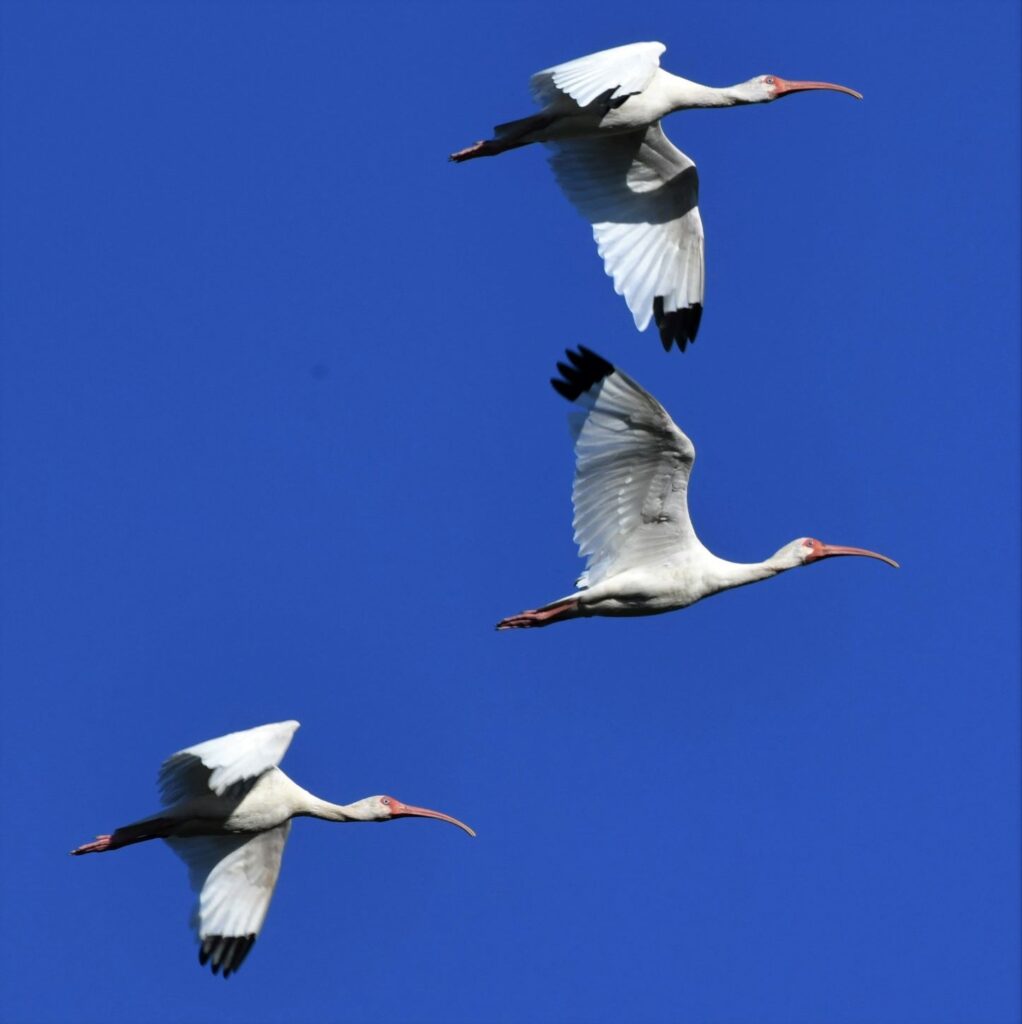
The biggest mistake I made in Nosara, indeed in all of Costa Rica, was pre-booking what appeared online to be an ideal lodge, called the Nosara Sunrise Bed and Breakfast (NSL). Upon arrival to this secluded hillside retreat overlooking the Nosara River Valley, full payment in advance was demanded. Since I was planning an extended stay of more than two weeks, I was a little hesitant to make such a lengthy commitment. Sorry, that is the policy here, I was told by the young receptionist. This better be worth it ($95 per night), I said under my breath and reluctantly handed over my credit card. It definitely wasn’t. The place initially appeared quiet and surrounded by a deciduous secondary forest that might have new birds for my Guanacaste province list (there were two, Gartered Trogon and Yellow-throated Vireo). The staff included a young Tico receptionist who spoke intelligble English but had little to offer regarding my inquiries about locations for observing birds and nature. Evidently, most of the visitors here had only one destination firmly in mind, the famed surfing-party hangout, Playa Guiones. No hay problema. I would just take an early morning walk through the neighborhood and see what birds I could find.

At dawn the next day, I walked from the lodge down to the neighborhood access road, one of the many pot-holed, poorly maintained roads in Nosara. That set off a cacophany of vicious-looking, barking dogs, rendering the birding rather tenuous. I continued to the entrance of a signed botanical reserve and took a trail inside for about 100m. Not a bird in sight and nothing vocalizing. Only a welcomed silence. This heavily wooded area with little to no understory, was an island of peace. The meditative mood was soon spoiled when dump trucks roared by, then pickups with workers, followed by a back-hoe and several more big trucks. The road dust was chokingly thick. I shuffled along quickly, figuring there might be better birding close to the lodge. A few warblers and vireos flitted in the distant canopy but the lighting and viewing angle made identifications difficult.
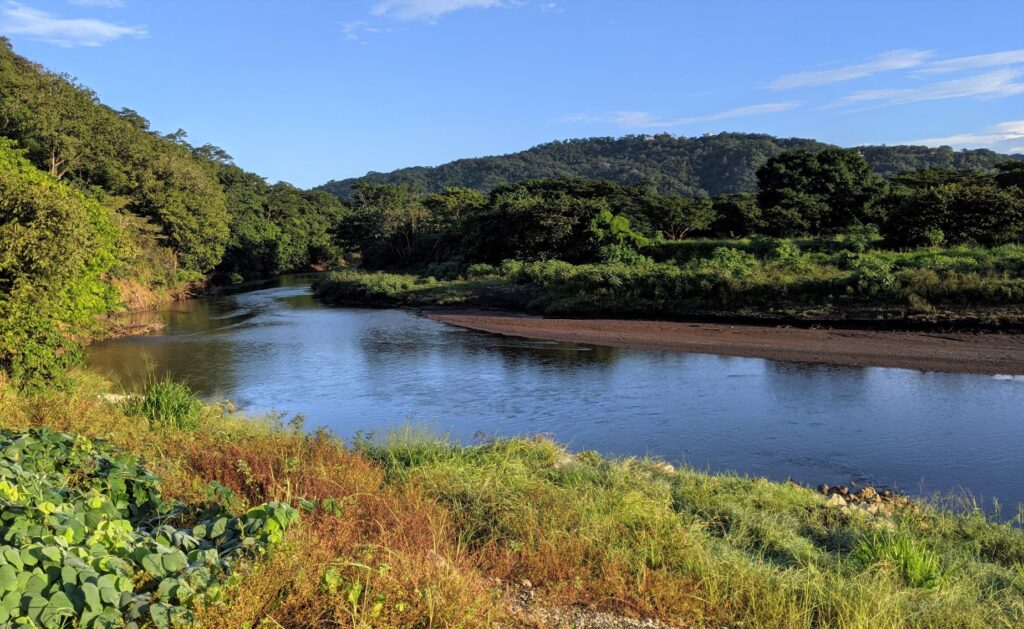
I reached the base of the steep, curved NSL driveway and began the climb. Half way up, three of the owner’s German Shepherds came running for me, barking and growling. The alpha beast was displaying formidable frontal dentition. The dogs had me cornered against a stone retaining wall. Checkmate, motherfucker. Well, not quite. I had another move. My aluminum walking pole was keeping them off me. Heart pounding out of my chest, I side-stepped my way up the rest of the driveway and reached the main lobby, nearly breathless from the adrenaline rush. Meanwhile, the owner appeared briefly in front of their house, recalled the dogs and I returned to my upstairs room without further incident (and without an apology or so much as a casual greeting from whomever these strange, paranoid troglodytes were — fugitive Texans? Billy Joe and Bobby Sue? Ostensibly, they were absentee American lodge owners, who, throughout my entire stay at NSL, avoided all contact with their bewildered guests, perhaps fearing that any one of them could be an undercover US Marshal). That was my first sunrise at NSL. And it was the last of my NSL neighborhood morning bird walks. Fortunately, I had the rental Landcruiser and could get away from the hellish place as often as necessary, which was at least twice a day. The owner’s dogs seldom missed an opportunity to chase my car up the driveway – the next best option to terrorizing pedestrians.
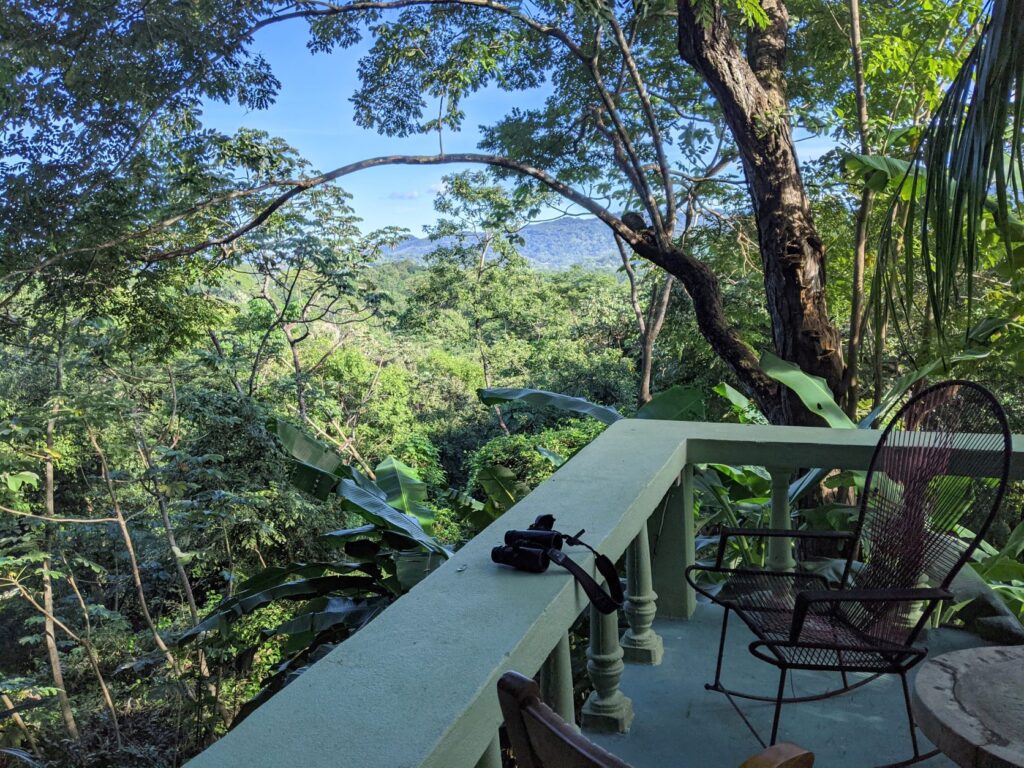
Menacing guard dogs was only one of several annoyances at NSL. The staff (a receptionist and cook) was present only in the morning; other times no one was available to answer questions, such as, “How long will the power be off; when will the water be turned back on; is there anyone who can mop up the water in my room from the refrigerator meltdown last night; who the fuck is in charge here?” Then there was the daily problem of fitting my rental Toyota Landcruiser into the miniature parking area, barely large enough for five compacts and virtually no room to turn around. The steep driveway had a blind curve that sometimes resulted in having to back up to the parking area to allow incoming traffic. I wondered how long it would be until there was a collision, which I’m sure would have been endlessly amusing to the three guard dogs.

Driving around Nosara, which was largely unmapped with unsigned roads (normal for Costa Rica), I found a couple of good birding spots. One that I returned to regularly before breakfast, was a stretch of the Rio Nosara adjacent to the Nosara Airport (RNA). This location, a five-minute drive from NSL, produced a good variety of waterbirds and landbirds, usually with one or two new species found each visit.
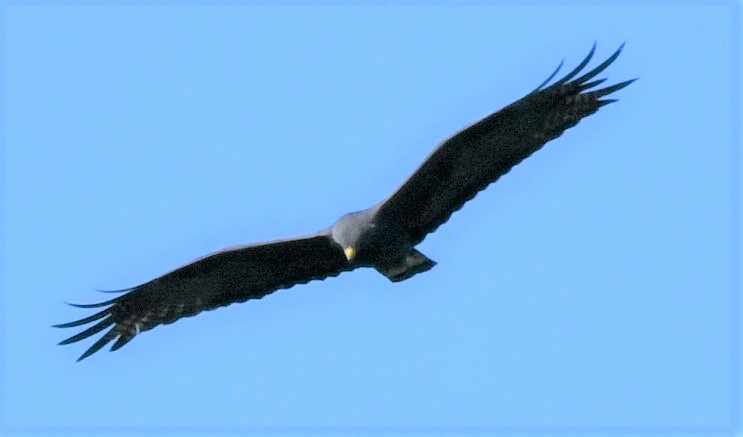
One day at RNA, I spotted a Zone-tailed Hawk among a kettle of Turkey Vultures, flying leisurely over the river. The Zone-tailed Hawk not only looks like a Turkey Vulture from a distance, they frequently fly with them and with a similar, teetering style of soaring. The resemblance has been noted by ornithologists and appears to be an unusual type of mimicry, allowing the hawk to swoop down on unsuspecting prey, presumably fooled by the harmless vulture profile and behavior. As such, this sort of evolutionary development could be called, Reverse Batesian Mimicry, a relatively uncommon example of a lethal predator (e.g., angler fish; alligator snapping turtle) resembling a harmless species.
On another morning, Ed Tricker, a Brit who was staying a few days at NSL, joined me for a bird survey of RNA. We had a splendid time, tallying nearly fifty species. It was great having another set of sharp eyes at the RNA birding site.
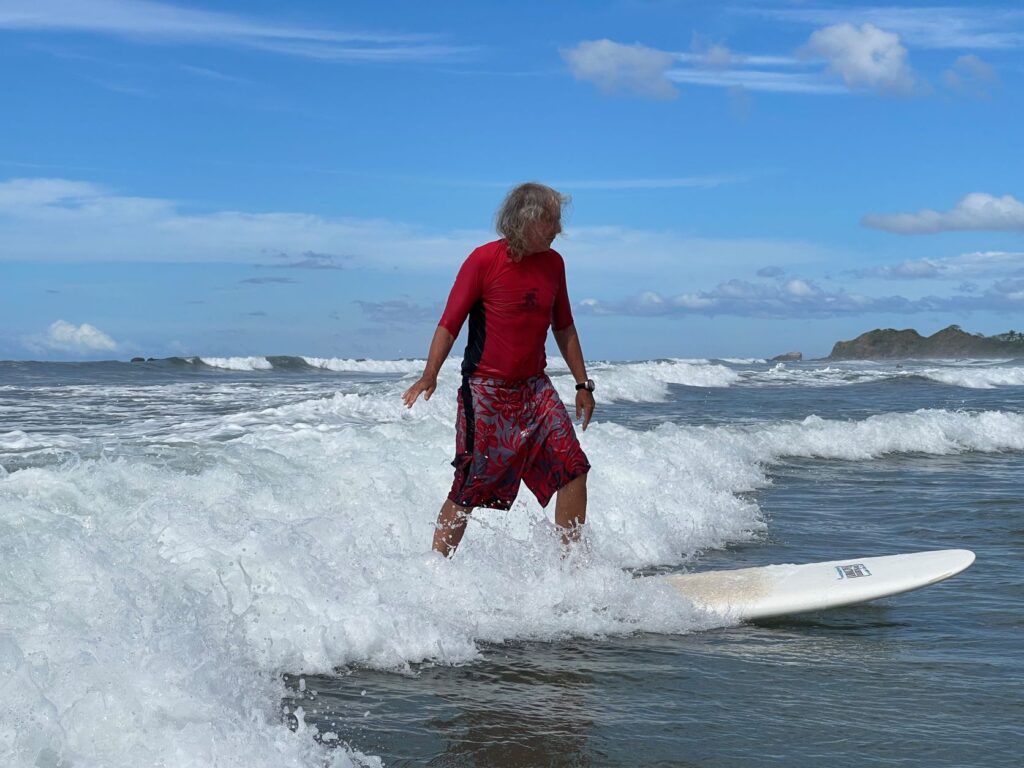
Ed was also a surfer and we made a couple of local trips to Playa Guiones (PGU), a popular break with fairly consistent waves. Ed paddled to the outside for the biggest waves, while I was master and commander of the white water.
In our casual discussions, Ed mentioned that his father was a seasoned birder. I suggested that he bring his dad to Costa Rica next time. Ed smiled politely. For some reason, Ed, who had excellent bird-finding skills (he spotted a distant Crested Caracara at RNA, a new bird for my list at that location), had chosen a different path from his dad. That was an interesting topic for me. My son, Ethan, was also a distant acorn who had chosen a non-academic route, despite the many years traveling and camping with me, listening to me babble on about my college classes or some particular bird that I wanted to see. Although both Ed and Ethan were now well beyond their formative years, I wondered if either of them might have a sentimental return to their father’s love of birding and nature.
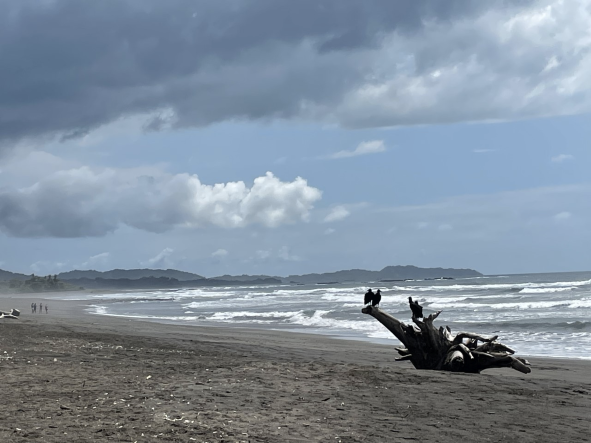
Nosara, Rio Nosara, Playa Guiones, Playa Garza, Ostional, Guanacaste Province, Costa Rica – Annotated Bird List (November 10-26, 2021) Callyn Yorke
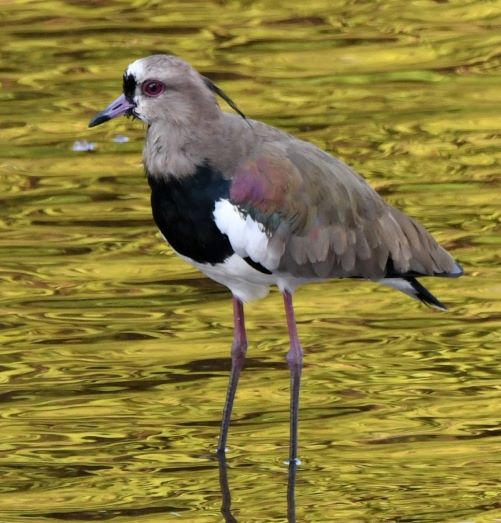
The Weather during my visit varied from sunny and warm (28 C to 35 C), to partly cloudy with occasional, light to heavy showers, afternoon and evening thunderstorms; winds were mostly from the NE and NW at 5 – 20 km/hr; low tide @ 0600 hrs., surf 1-2 m, seas variable, often comparatively calm in the morning; choppy in the afternoon.
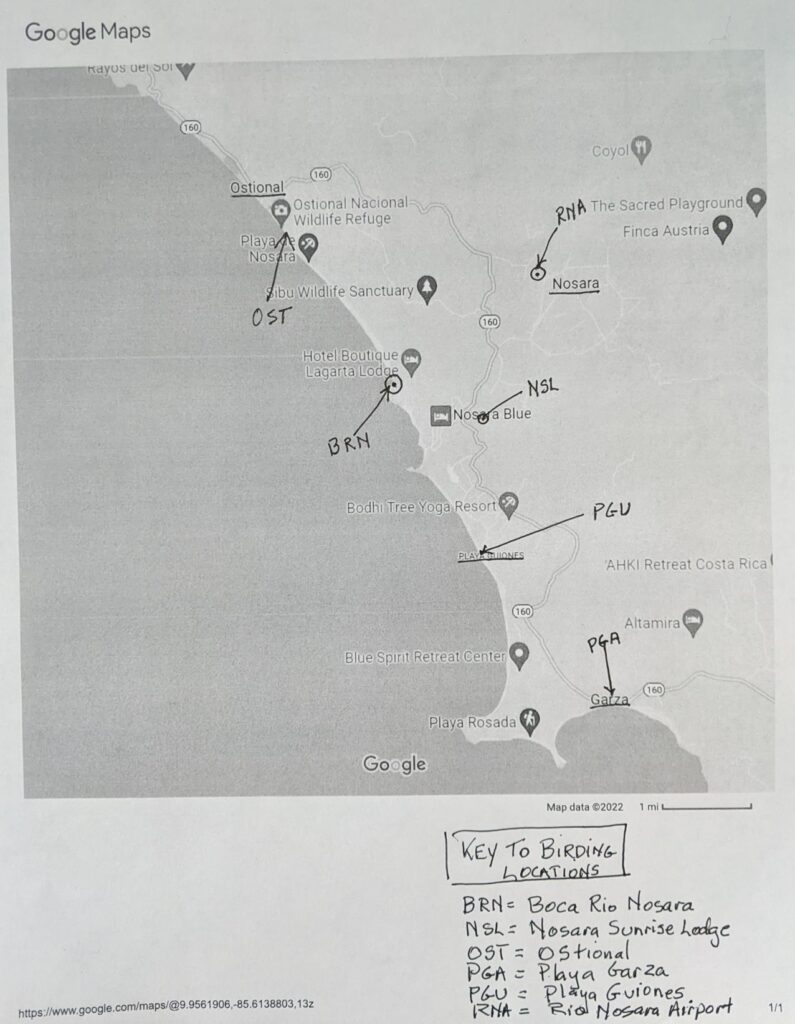
Explanation of Symbols
Locations: BRN = Boca Rio Nosara; NSL = Nosara Sunrise Lodge; OST = Ostional, including sea turtle nesting reserve; PGA = Playa Garza, including tidepools; PGU = Playa Guiones, north, middle and southern sections, including adjacent woodland, gardens and ruderal fields; RNA = Rio Nosara adjacent to the Nosara Airport; R160 = Route 160 through Nosara and adjacent areas. Ubiq = Ubiquitous and widespread in appropriate habitat.
Abundance: Numbers following each species represent the maximum number of individuals found during a survey.
Frequency: C = Commonly found or expected to be found during all or most surveys; FC = Fairly commonly found in more than half of the surveys; UC = Uncommonly found in less than half of the surveys; R = Rarely found, i.e. only once during multiple surveys (Note: Ostional was briefly visited only once).
Plumage, sex, age (if known): alt = alternate, breeding plumage); bsc = basic, non-breeding plumage); trans = transitional i.e. molting into bsc or alt plumage; m = male; f = female; ad= adult; imm = immature.
Behavior, Position, etc.: agl = in flight, approximate height (m) above ground level; greg = gregarious; mid = middle height level, e.g. in trees, forest; msf = mixed species flock.
Systematics and Nomenclature follow Avibase and Clements (2021)
- Black-bellied Whistling Duck Dendrocygna autumnalis 4 greg. on river shoreline, RNA, FC
- Feral Rock Pigeon Columba livia 12 greg. on and around central soccer field in Nosara, C
- Pale-vented Pigeon Patagioenas cayennensis 2 in forest subcanopy at edge of river, RNA, UC
- Red-billed Pigeon Patagioenas flavirostris 2 greg. pairs flying over river; in subcanopy of open woodland and forest, RNA, FC
- Inca Dove Columbina inca 4 greg., pairs in clearings and in corn field, RNA, C
- Common Ground Dove Columbina passerina 2 greg., pairs in clearings, RNA, UC
- Ruddy Ground Dove Columbina talpacoti 6 greg. ruderal roadsides, clearings, RNA, C
- White-tipped Dove Leptotila verreauxi 2 a vocal pair in trees and on ground at edge of a patch of tall secondary forest, RNA FC
- White-winged Dove Zenaida asiatica 10 gregarious, on utility lines, roadsides, ubiq., C
- Groove-billed Ani Crotophaga sulcirostris 12 (ad, imm) greg. usually found in cohesive family groups of six to eight individuals in second-growth next to the river; overgrown pasture, ubiq. C
- Squirrel Cuckoo Piaya cayana 1 in subcanopy of woodland, forest and garden trees, ubiq., FC
- Green-breasted Mango Anthracothorax prevostii 1 (m) edge of woodland and pasture, RNA, UC
- Plain-capped Starthroat Heliomaster constantii 1 (m) foraging on white-flowering shrub at edge of small drainage stream in pasture, RNA, UC
- Ruby-throated Hummingbird Archilochus colubris 1 hovering around large, flowering shrub in clearing, RNA, R
- Blue-vented Hummingbird Saucerottia hofmanni 1 garden and second-growth flowering shrubs, RNA, PGA, PGU, FC
- Cinnamon Hummingbird Amazilia rutila 1 lower to mid-level in trees at forest edge, RNA, UC
- Rufous-tailed Hummingbird Amazilia tzacatl 2 second- growth, gardens, edge of woodlands, ubiq., C
- Gray-cowled Woodrail Aramides cajaneus 1 edge of wet woodland, PGU, R160, UC
- Southern Lapwing Vanellus chilensis 4 loosely gregarious on riverbank and in shallows, RNA, C
- Semipalmated Plover Charadrius semipalmatus 3 foraging on beach and around tidepools, PGA, FC
- Wilson’s Plover Charadrius wilsonia 1 on beach at edge of tidepools, PGA, UC
- Hudsonian Whimbrel Numenius hudsonicus 3 foraging at tideline on beach and in tidepools, BRN, PGU, PGA, FC
- Spotted Sandpiper Actitis macularius 3 foraging on shorelines, in tidepools, riverbanks, streambanks, ubiq, C
- Willet Tringa semipalmata 2 individuals foraging on beach and edge of tidepools, PGU, PGA, FC
- Caspian Tern Hydroprogne caspia 3 on and flying over outer shore, BRN, UC
- Royal Tern Thalasseus maximus 10 on and flying over outer shore, and estuary, BRN, PGU, OST, FC
- Cabot’s Tern Thalasseus acuflavidus 2 flying over outer shore with ROTE, BRN, UC
- Elegant Tern Thalasseus elegans 2 flying around estuary ith ROTE, BRN, R
- Magnificent Frigatebird Fregata magnificens 2 (m,f) circling over shore and far offshore, BRN, PGU, PGA, FC
- Neotropic Cormorant Nannopterum brasilianum 5 perched on snags in river, on shore; edge of tidepools, BRN, PGA, RNA, FC
- Brown Pelican Pelecanus occidentalis 5 gregarious, flying near and offshore, BRN, PGU, PGA, C
- Great Blue Heron Ardea herodias 1 foraging in outer tidepools, PGA, R
- Great Egret Ardea alba 5 riverbank and shallows; tidepools, estuary, flooded fields, RNA, BRN, PGU, PGA, C
- Snowy Egret Egretta thula 8 tidepools, shoreline, estuary, riverbank, BRN, PGU, PGA, RNA, C
- Little Blue Heron Egretta caerulea 2 riverbank and shallows, estuary, tidepool, RNA, PGA, BRN, FC
- Tricolored Heron Egretta tricolor 1 estuary, BRN, UC
- Cattle Egret Bulbucus ibis 5 greg., pasture and adjacent wetlands, RNA, R160, FC
- Green Heron Butorides virescens 2 riverbank, estuary, RNA, BRN, FC
- Yellow-crowned Night Heron Nyctanassa violacea 1 (imm) in riverside second-growth, RNA, UC
- White Ibis Eudocimus albus 8 greg. on riverbank, flying over, RNA, FC
- Black Vulture Coragyps atratus 25 greg, ubiq., C
- Turkey Vulture Cathartes aura 12 greg., often associated with BLVU, ubiq, C
- Osprey 1 Pandion haliaetus slowly circling 30-50 m above river, estuary, shoreline, offshore, ubiq., FC
- Roadside Hawk Rupornis magnirostris 2 perched in trees at edge of roadways, forest, lightly wooded pasture, ubiq., FC
- Zone-tailed Hawk Buteo albonotatus 1 (ad) associated with a kettle of TUVU over open areas next to river, RNA, R
- Black-headed Trogon Trogon melanocephalus 2 (m,f) subcanopy of riverside woodland, RNA, UC
- Gartered Trogon Trogon caligatus 2 vocal in subcanopy of tall, garden tree, NSL, UC
- Lesson’s Motmot Momotus lessonii 2 relatively secretive in subcanopy and mid-level of garden trees and shady, mature secondary forest, NSL, PGA, UC
- Ringed Kingfisher Megaceryle torquata 2 flying low over riverbank and perched in overhanging trees, RNA, FC
- Amazon Kingfisher Chloroceryle amazona 1 flying low over river, RNA, BRN, UC
- Green Kingfisher Chloroceryle americana 1 riverside second-growth, mangrove estuary, RNA, BRN, FC
- Hoffmann’s Woodpecker Melanerpes hoffmannii 2 in woodland and garden trees, NSL, RNA, R160, FC
- Crested Caracara Caracara plancus 2 open country, pasture with isolated trees, RNA, R160, FC
- Yellow-headed Caracara Milvago chimachima 3 (ad, imm) greg., often on ground at edge of woodland, wet pasture, riverbanks, estuary, RNA, BRN, PGA, R160, C
- Arctic Peregrine Falcon Falco peregrinus tundrius 1 circling low over river, landing on riverbank near BLVU and TUVU, RNA, R
- Orange-chinned Parakeet Brotogeris jugularis 5 vocal, greg. in flight over river, RNA, FC
- White-fronted Parrot Amazona albifrons 5 greg., flying over river and open fields, occasionally in tree canopy, RNA, FC
- Northern Barred Woodcreeper Dendrocolaptes sanctithomae 1 upper mid-level of main tree trunk in shady woodland next to river, RNA, R
- Streak-headed Woodcreeper Lepidocolaptes souleyetii 1 vocal on main limbs, mid-to upper level in woodlands, RNA, PGU, FC
- Common Tody-Flycatcher Todirostrum cinereum 1 very active in large shrubs and mid-level second-growth, subcanopy of garden trees, RNA, NSL, FC
- Yellow Tyrannulet Capsiempis flaveola 1 active in large shrub next to riverbank, RNA, R
- Tropical Pewee Contopus cinereus 1 sallying from low perches at edge of pasture and woodland, RNA, UC
- Brown-crested Flycatcher Myiarchus tyrannulus 1 sallying from low branch in isolated tree at edge of pasture, subcanopy of garden trees, RNA, NSL, UC
- Great Kiskadee Pitangus sulphuratus 7 vocal, loosely gregarious on utility lines, isolated trees at edges of clearings, ubiq., C
- Boat-billed Flycatcher Megarynchus pitangua 4 vocal, greg., efficiently snatch-gleaning large lepidoptera, orthoptera and coleopterans from subcanopy foliage in isolated trees and woodland edge, RNA, FC
- Tropical Kingbird Tyrannus melancholicus 5 vocal, loosely gregarious on utility lines, fences, isolated trees, pasture, roadways, ubiq., C
- Yellow-throated Vireo Vireo flavifrons 1 gleaning small insects from foliage of canopy garden trees, NSL, R
- Red-eyed Vireo Vireo olivaceus 3 gleaning insect larvae from foliage in woodland and isolated tree canopies, ubiq., FC
- White-throated Magpie-Jay Calocitta formosa 5 greg., vocal, wary, inquisitive, all levels, ground to canopy, wooded gardens and patches of tall secondary forest, ubiq., FC
- Gray-breasted Martin Progne chalybea 2 a pair flying 10-30m agl over river and open areas early AM, RNA, FC
- Bank Swallow Riparia riparia 2 flying in msf, 10-30 m agl around and beneath CLSW and associated BASW over river and open areas, RNA, UC
- Barn Swallow Hirundo rustica 2 flying 2-20m agl over river, estuary, tidepools, open fields, ubiq, FC
- Cliff Swallow Petrochelidon pyrrhonota 5 greg., flying 10-50m agl over open areas, ubiq., FC
- Southern House Wren Troglodytes musculus 1 vocal (mostly unseen) in garden, NSL, FC
- Rufous-naped Wren Campylorhynchus rufinucha 5 greg., vocal, active in second-growth, garden trees and woodland edge, ubiq., C
- Clay-colored Thrush Turdus grayi 5 on ground and in subcanopy of garden trees, woodland edge, ubiq., C
- House Sparrow Passer domesticus 6 (m,f) gregarious in riverbank second-growth, RNA, C
- Yellow-throated Euphonia Euphonia hirundinacea 2 (m,f) garden tree canopy, tall secondary forest edge, RNA, NSL, FC
- Stripe-headed Sparrow Peucaea ruficauda 5 greg. a cohesive flock in second-growth shrubs and small trees on riverbank, RNA, C
- Streak-backed Oriole Icterus pustulatus 2 (m,f) subcanopy of garden trees and tall second-growth, woodland edge, RNA, NSL, FC
- Baltimore Oriole Icterus galbula 2 subcanopy of isolated trees and edge of woodland, gardens, ubiq., FC
- Melodius Blackbird Dives dives 2 (m,f) vocal, a pair on riverbank and in trees adjacent to clearings, RNA, FC
- Great-tailed Grackle Quiscalus mexicanus 25 (m,f) greg. villages, towns, on riverbank and in clearings. tidepool, estuary, ubiq., C
- Black & White Warbler Mniotilta varia 2 (m,f) canopy and subcanopy limbs of garden trees and edge of woodland, RNA, NSL, FC
- Tennessee Warbler Leiothlypis peregrina 1 subcanopy woodland edge, RNA, UC
- Yellow Warbler Setophaga petechia 1 second-growth and small trees on riverbank, mangrove, RNA, BRN, FC
- Wilson’s Warbler Cardellina pusilla 1 second-growth next to river, RNA, UC
- Summer Tanager Piranga rubra 2 (m,f) subcanopy of isolated trees and woodland edge, gardens, RNA, NSL, BRN, FC
- Blue Grosbeak Passerina caerulea 2 (m,f) a pair in weedy second-growth on riverbank, RNA, R
- Painted Bunting Passerina ciris 1 (f) on ground in roadside weed patch, RNA, R
- Blue-black Grassquit Volatinia jacarina 2 (m,f) edge of clearings, shaded fence lines, pasture, RNA, R160, FC
- Variable Seedeater Sporophila corvina 6 (m,f) roadside second-growth, fence lines, ubiq, FC
- Morelet’s Seedeater Sprophila morelleti 4 tall grass and shrubs on riverbank, adjacent corn field, RNA, FC
____________________________________________________________________________________________
Playa Hermosa, Guanacaste, Costa Rica (November 27, 2021) Callyn Yorke
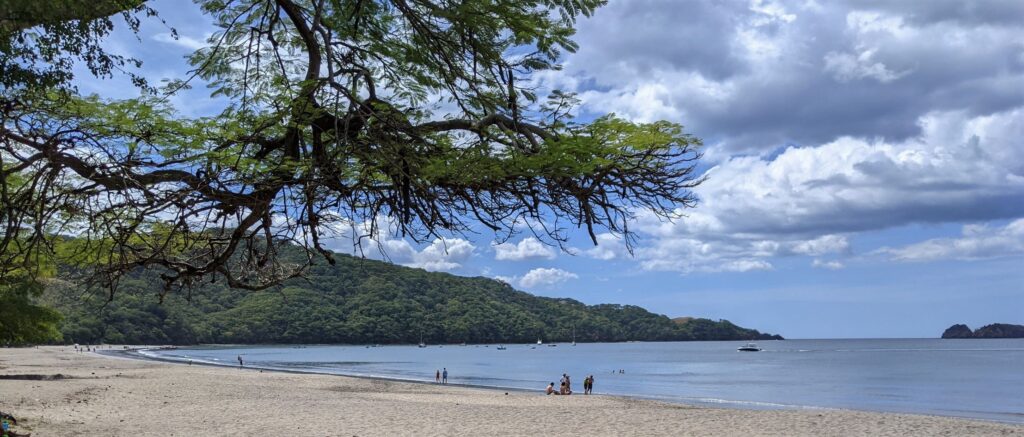
The drive from Nosara to Playa Hermosa was not without a little adventure. I missed a turn off from R 21 northbound, just before the Rio Tempisque bridge. The junction was poorly signed and further obscured by a squad of heavily armed Costa Rican police. I continued northbound a short distance, realizing the mistake, then took a quick detour into a vacant lot across from the southbound lane. I got onto a dirt track headed in the direction of the road I missed (R 253). So far, so good. But the track soon turned into a footpath then ended abruptly at an impassable concrete culvert separating the vacant lot from the main thoroughfare. Oops. I reversed a ways on the pathway, throwing up clouds of dust and spun around in a grassy area and headed back to the main highway. While making my way to the main road, I had caught the attention of the police, who waited for me to approach the checkpoint and directed me to the roadside. They were armed with American made assault rifles and pistols; I wasn’t sure where the Kevlar vests were manufactured but these folks looked like they were ready for battle. The commander asked for my passport and destination, while others began searching the vehicle. I pretended to comprehend no Spanish, which annoyed them, possibly because none of them spoke English. Frustrated by illiteracy and the lack of contraband found in my car (they must have suspected I was a drug-runner, trying to avoid the highway checkpoint), I was sent on my happy-go-lucky way as a goofy, disoriented gringo tourist.
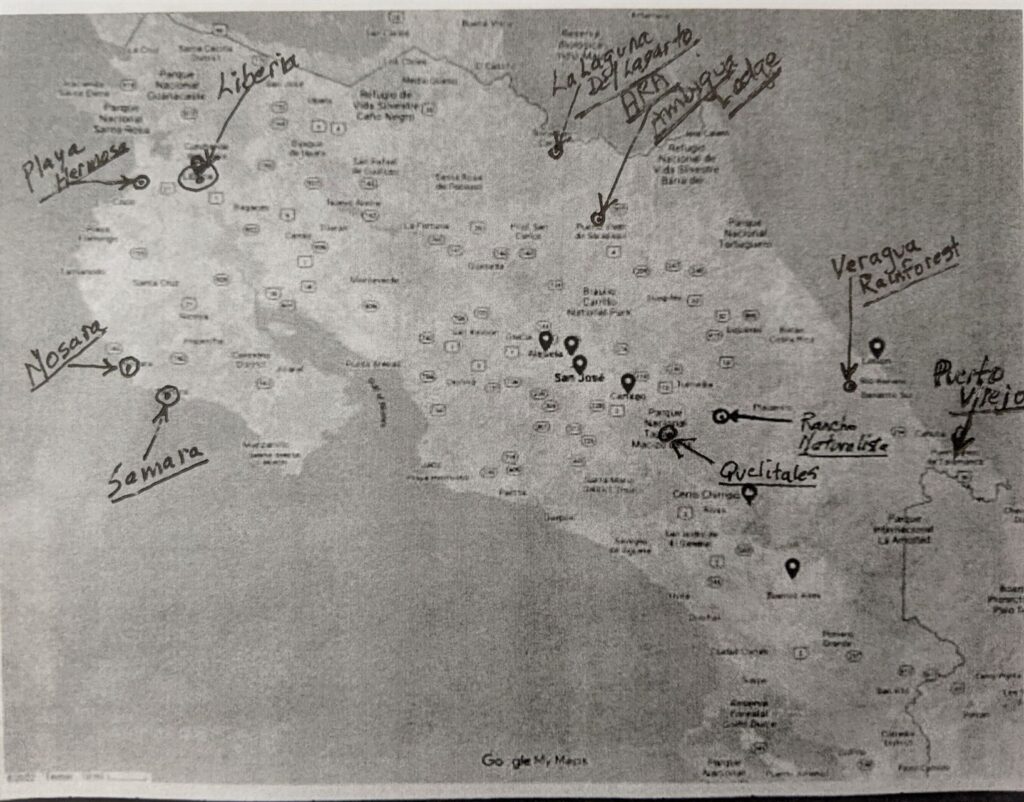
I had initially planned to drive directly from Nosara to the Liberia aiport on the morning of November 28, to catch my flight back to Los Angeles. However, when I saw the extremely poor roads around Nosara, combined with slow traffic, I changed my itinerary and booked an overnight stay at the Acacia Hotel in Playa Hermosa, which was only about a 30-minute drive to the Daniel Oduber International airport. The new plan worked perfectly. I had time to return the rental vehicle and be shuttled to the airport with nearly three hours before my flight. The extra time at the airport turned out to be essential. Long lines of travelers wearing face coverings were forming at immigration and security stations. I had been in a maze of queues for a total of about 2.5 hours and boarded the aircraft a few minutes before the scheduled time of departure. Many of the passengers on the flight were still waiting in line. Remarkably, the direct, 5.5 hr. flight landed at LAX a few minutes ahead of schedule.
After checking into a small but comfortable room at the Acacia Hotel, I took an opportunity to walk around Playa Hermosa and bird the area for the first time. Although an impending afternoon thundershower limited my birding to about 1.5 hours, I managed to find a new species for the trip list, Brown Booby — two of them flying back and forth over the bay. The rest of my local bird list was composed of common species found in Samara and Nosara (see Annotated Bird list). I’m sure that if I had had another go at birding this area in the morning, a few more birds would have been added to the list. There were gardens and patches of mature secondary forest bordering the beach which probably supported a community of opportunistic landbird species; a rocky tidepool in the north part of the bay also looked promising. The wooded border of the beach supported a troupe of Mantled Howler (Alouatta palliata) and a leucistic population of Variegated Squirrel (Sciurus variegatoides). I was pleasantly surprised by the relatively well maintained roads and fairly clean beach in Playa Hermosa. This was a comparatively quiet, upscale coastal enclave, presumably occupied by foreign retirees and wealthy Ticos.
Playa Hermosa, Guanacaste – Annotated Bird List (27 November, 2021) Callyn Yorke
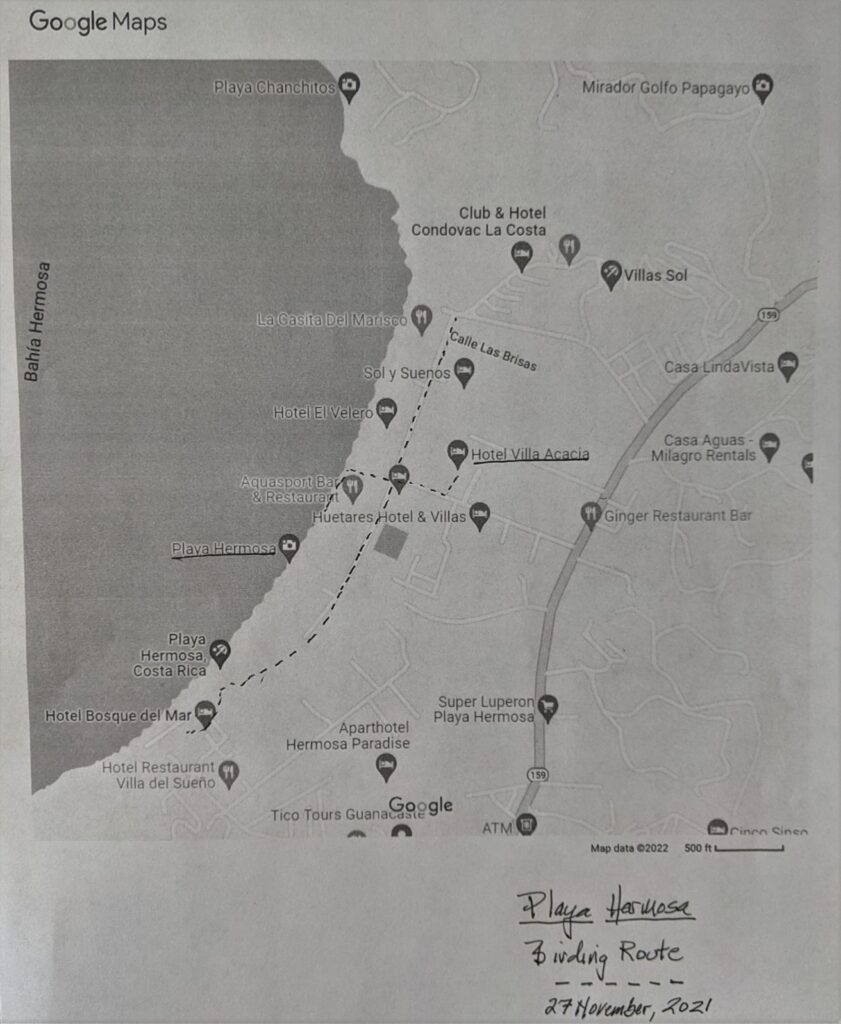
The Weather in Playa Hermosa during my bird survey was mostly sunny with increasing cloudiness by 1400 hrs. The air temperature was about 33 C; winds were light from the west. Seas were calm; surf 0.1 m (there is probably no significant surf at Playa Hermosa except during a big storm; the bay is largely sheltered from northwest swells).
Explanation of Symbols
Locations: —— = walking bird survey route in Playa Hermosa
Abundance: Numbers following each species represent the maximum number of individuals found during the survey.
Plumage, sex, age (if known): alt = alternate, breeding plumage); bsc = basic, non-breeding plumage); trans = transitional i.e. molting into bsc or alt plumage; m = male; f = female; ad= adult; imm = immature.
Behavior, Position, etc.: agl = in flight, approximate height (m) above ground level; greg = gregarious; mid = middle height level, e.g. in trees, forest; msf = mixed species flock.
Systematics and Nomenclature follow Avibase and Clements (2021)
- Inca Dove Columbina inca 6 on roadside and clearings
- White-winged Dove Zenaida asiatica 20 vocal, gregarious, ubiq.
- Squirrel Cuckoo Piaya cayana 1 subcanopy of tall garden tree
- Spotted Sandpiper Actitis macularius 1 in roadside drainage ditch
- Magnificent Frigatebird Fregata magnificens 8 circling 50-100m over bay
- Brown Booby Sula leucogaster 2 individuals flying low over bay nearshore
- Neotropic Cormorant Nannopterum brasilianum 2 flying low over bay
- Brown Pelican Pelecanus occidentalis 6 resting on small, rocky islet in north bay
- Hoffmann’s Woodpecker Melanerpes hoffmannii 2 a pair in subcanopy of tall garden trees
- White-fronted Parrot Amazona albifrons 2 a pair perched in a woodland canopy
- Orange-fronted Parakeet Eupsittula canicularis vocal (unseen) woodland bordering beach
- Great Kiskadee Pitangus sulphuratus 3 vocal, roadside subcanopy and edge of clearings,
- Rufous-naped Wren Campylorhynchus rufinucha 5 greg., vocal, subcanopy of garden trees,
- Clay-colored Thrush Turdus grayi 1 on ground in woodland
- Baltimore Oriole Icterus galbula 1 (m) woodland canopy
- Great-tailed Grackle Quiscalus mexicanus 20 (m,f) greg., vocal, ubiq.
_____________________________________________________________________________________________